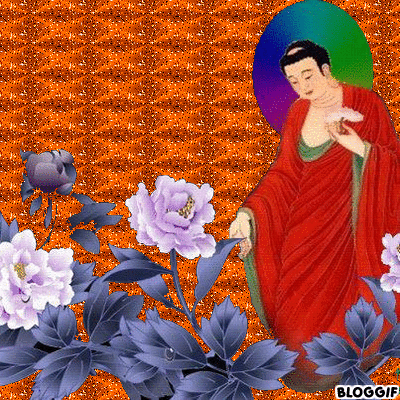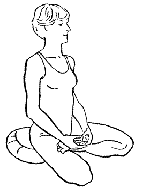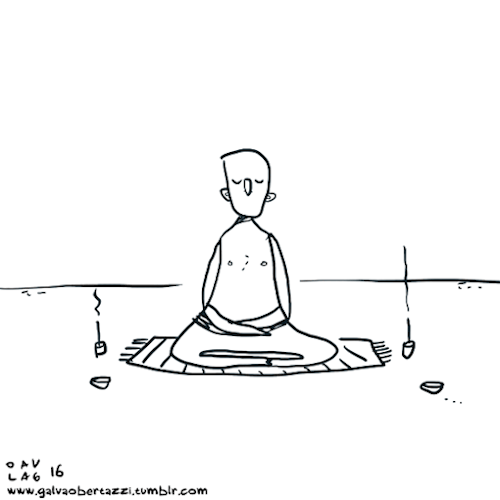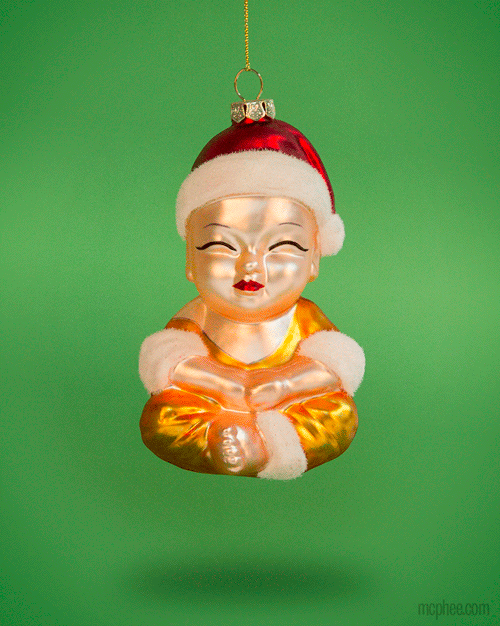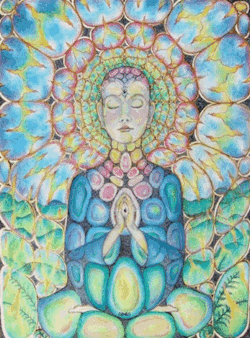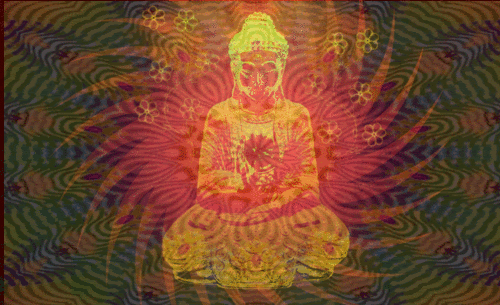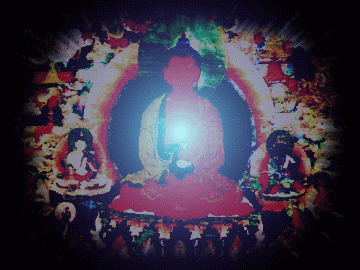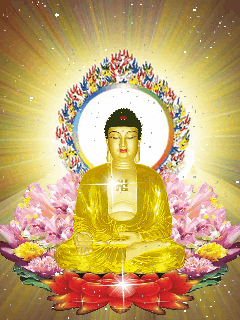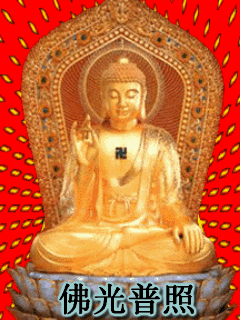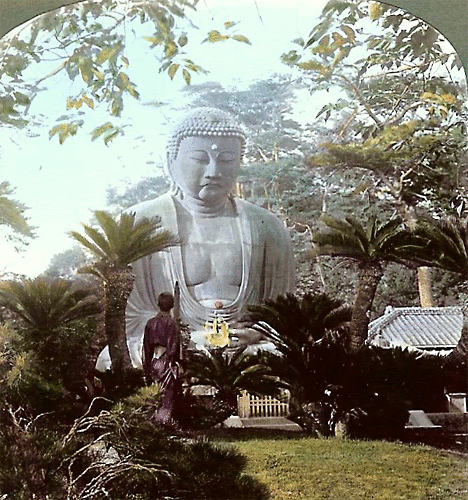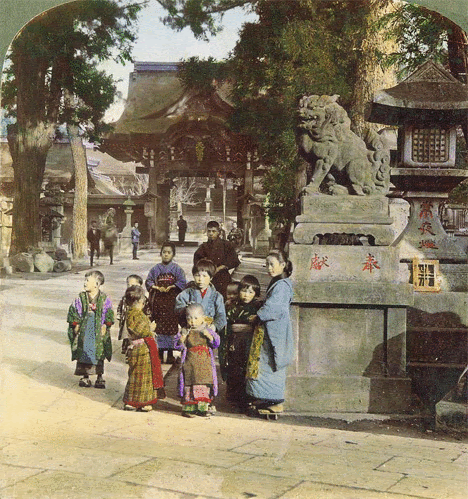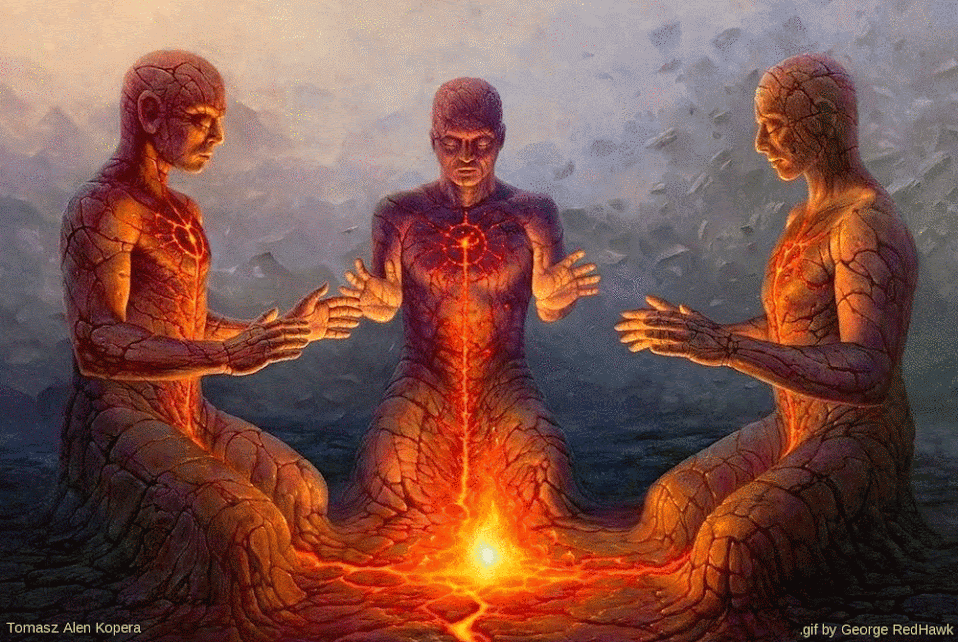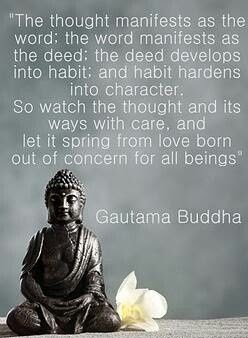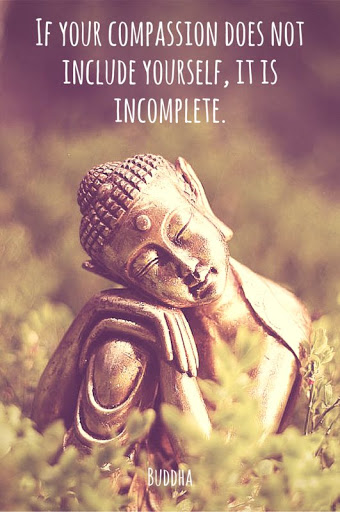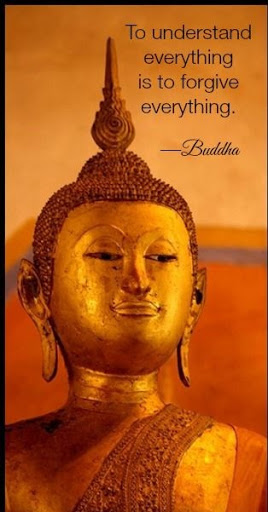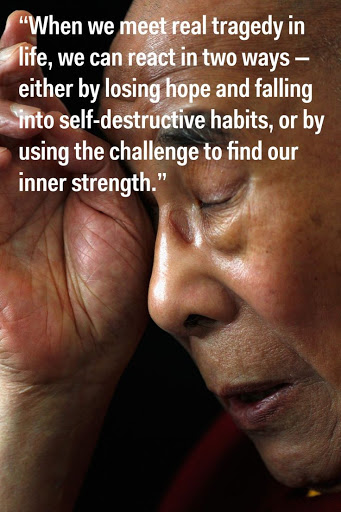- January 2023
- December 2022
- November 2022
- October 2022
- September 2022
- August 2022
- July 2022
- June 2022
- May 2022
- April 2022
- March 2022
- February 2022
- January 2022
- December 2021
- November 2021
- October 2021
- September 2021
- August 2021
- July 2021
- June 2021
- May 2021
- April 2021
- March 2021
- February 2021
- January 2021
- December 2020
- November 2020
- October 2020
- September 2020
- August 2020
- July 2020
- June 2020
- May 2020
- April 2020
- March 2020
- February 2020
- January 2020
- December 2019
- November 2019
- October 2019
- September 2019
- August 2019
- July 2019
- June 2019
- May 2019
- April 2019
- March 2019
- February 2019
- January 2019
- December 2018
- November 2018
- October 2018
- September 2018
- August 2018
- July 2018
- June 2018
- May 2018
- April 2018
- March 2018
- February 2018
- January 2018
- December 2017
- November 2017
- October 2017
- September 2017
- August 2017
- July 2017
- June 2017
- May 2017
- April 2017
- March 2017
- February 2017
- January 2017
- December 2016
- November 2016
- October 2016
- September 2016
- August 2016
- July 2016
- June 2016
- May 2016
- April 2016
- March 2016
- February 2016
- January 2016
- December 2015
- November 2015
- October 2015
- September 2015
- August 2015
- July 2015
- June 2015
- May 2015
- April 2015
- March 2015
- February 2015
- January 2015
- December 2014
- November 2014
- October 2014
- September 2014
- August 2014
- July 2014
- June 2014
- May 2014
- April 2014
- March 2014
- February 2014
- January 2014
- December 2013
- November 2013
- October 2013
- September 2013
- August 2013
- July 2013
- June 2013
- May 2013
- April 2013
- March 2013
- February 2013
- January 2013
- December 2012
- November 2012
- October 2012
- September 2012
- August 2012
- July 2012
- June 2012
- May 2012
- April 2012
- March 2012
- February 2012
- January 2012
- December 2011
- November 2011
- October 2011
- September 2011
- August 2011
- July 2011
- June 2011
- May 2011
- April 2011
- March 2011
- February 2011
- January 2011
- December 2010
- November 2010
- October 2010
- September 2010
- August 2010
- July 2010
- June 2010
- May 2010
- April 2010
- March 2010
- February 2010
- January 2010
- December 2009
- November 2009
- October 2009
- September 2009
- August 2009
- July 2009
- June 2009
- May 2009
- April 2009
- March 2009
- February 2009
- January 2009
- December 2008
- November 2008
- October 2008
- September 2008
- August 2008
- July 2008
- June 2008
- May 2008
- April 2008
- March 2008
- January 2008
- December 2007
- November 2007
- October 2007
- September 2007
- August 2007
- July 2007
LESSON 2836 Dec 12
2837 Wed, 2838 13 Thu, 2839 14 Fri, 2840 15 Sat, 2841 16 Sun 2018from
Analytic Insight Net -

Online Tipiṭaka Research and Practice University and related NEWS through
http://sarvajan.ambedkar.org
in
112 CLASSICAL LANGUAGES
Paṭisambhidā
Jāla-Abaddha Paripanti Tipiṭaka Anvesanā ca Paricaya Nikhilavijjālaya ca ñātibhūta Pavatti Nissāya
is
an Online GOOD NEWS CHANNEL FOR WELFARE, HAPPINESS AND PEACE FOR ALL
SOCIETIES Catering to more than 3000 Emails: 200 WhatsApp, Facebook and
Twitter.
is the most Positive Energy of informative and research oriented site propagating the teachings of the Awakened One with Awareness the Buddha and on Techno-Politico-Socio Transformation and Economic Emancipation Movement followed by millions of people all over the world.
Rendering
exact translation as a lesson of this University in one’s mother tongue
to this Google Translation and propagation entitles to become a Stream
Enterer (Sottapanna) and to attain Eternal Bliss as a Final Goal.
http://www.orgsites.com/oh/awakenedone/
Awakeness Practices
All 84,000 Khandas As Found in the Pali Suttas
Traditionally the are 84,000 Dharma Doors - 84,000 ways to get
Awakeness. Maybe so; certainly the Buddha taught a large number of
practices that lead to Awakeness. This web page attempts to catalogue
those found in the Pali Suttas (DN, MN, SN, AN, Ud & Sn 1). There
are 3 sections:
The discourses of Buddha are divided into 84,000, as to separate
addresses. The division includes all that was spoken by Buddha.”I
received from Buddha,” said Ananda, “82,000 Khandas, and from the
priests 2000; these are 84,000 Khandas maintained by me.” They are
divided into 275,250, as to the stanzas of the original text, and into
361,550, as to the stanzas of the commentary. All the discourses
including both those of
Buddha and those of the commentator, are divided into 2,547 banawaras,
containing 737,000 stanzas, and 29,368,000 separate letters.
BuddhaSasana-The Home of Pali
Buddha Vacana
— The words of the Buddha —
Classical Buddhism (Teachings of the Awakened One with Awareness) belong to the world, and everyone have exclusive rights:
Jāla-Abaddha Paripanti Tipiṭaka Anvesanā ca Paricaya Nikhilavijjālaya ca ñātibhūta Pavatti Nissāya
an Online GOOD NEWS CHANNEL FOR WELFARE, HAPPINESS AND PEACE FOR ALL
SOCIETIES Catering to more than 3000 Emails: 200 WhatsApp, Facebook and
Twitter.
is the most Positive Energy of informative and research oriented site propagating the teachings of the Awakened One with Awareness the Buddha and on Techno-Politico-Socio Transformation and Economic Emancipation Movement followed by millions of people all over the world.
Rendering
exact translation as a lesson of this University in one’s mother tongue
to this Google Translation and propagation entitles to become a Stream
Enterer (Sottapanna) and to attain Eternal Bliss as a Final Goal.
http://www.orgsites.com/oh/awa
Awakeness Practices
All 84,000 Khandas As Found in the Pali Suttas
Traditionally the are 84,000 Dharma Doors - 84,000 ways to get
Awakeness. Maybe so; certainly the Buddha taught a large number of
practices that lead to Awakeness. This web page attempts to catalogue
those found in the Pali Suttas (DN, MN, SN, AN, Ud & Sn 1). There
are 3 sections:
The discourses of Buddha are divided into 84,000, as to separate
addresses. The division includes all that was spoken by Buddha.”I
received from Buddha,” said Ananda, “82,000 Khandas, and from the
priests 2000; these are 84,000 Khandas maintained by me.” They are
divided into 275,250, as to the stanzas of the original text, and into
361,550, as to the stanzas of the commentary. All the discourses
including both those of
Buddha and those of the commentator, are divided into 2,547 banawaras,
containing 737,000 stanzas, and 29,368,000 separate letters.
BuddhaSasana-The Home of Pali
Buddha Vacana
— The words of the Buddha —
Classical Buddhism (Teachings of the Awakened One with Awareness) belong to the world, and everyone have exclusive rights:

The Sutta Piṭaka contains the essence of the Buddha’s teaching
regarding the Dhamma. It contains more than ten thousand suttas. It is
divided in five collections called Nikāyas.
- Dīgha Nikāya
- [dīgha: long] The Dīgha Nikāya gathers 34 of the longest
discourses given by the Buddha. There are various hints that many of
them are late additions to the original corpus and of questionable
authenticity. - Majjhima Nikāya
- [majjhima: medium] The Majjhima Nikāya gathers 152 discourses of the Buddha of intermediate length, dealing with diverse matters.
- Saṃyutta Nikāya
- [samyutta: group] The Saṃyutta Nikāya gathers the suttas
according to their subject in 56 sub-groups called saṃyuttas. It
contains more than three thousand discourses of variable length, but
generally relatively short. - Aṅguttara Nikāya
- [aṅg: factor | uttara: additionnal] The Aṅguttara
Nikāya is subdivized in eleven sub-groups called nipātas, each of them
gathering discourses consisting of enumerations of one additional factor
versus those of the precedent nipāta. It contains thousands of suttas
which are generally short. - Khuddaka Nikāya
- [khuddha: short, small] The Khuddhaka Nikāya short texts
and is considered as been composed of two stratas: Dhammapada, Udāna,
Itivuttaka, Sutta Nipāta, Theragāthā-Therīgāthā and Jātaka form the
ancient strata, while other books are late additions and their
authenticity is more questionable.

http://www.buddha-vacana.org/sutta/digha.html

>> Sutta Piṭaka
Dīgha Nikāya
[ dīgha: long ]
The Dīgha Nikāya gathers 34 of the longest discourses supposedly given by the Buddha.
- Poṭṭhapāda Sutta (DN 9) {excerpt} - enhanced translation
- Poṭṭhapāda asks various questions reagrding the nature of Saññā.
- Mahāparinibbāna Sutta (DN 16) {excerpts} - word by word
- This sutta gathers various instructions the Buddha gave for the
sake of his followers after his passing away, which makes it be a very
important set of instructions for us nowadays. - Mahāsatipaṭṭhāna Sutta (DN 22) - word by word
- This sutta is widely considered as a fundamental reference for meditation practice.

|
— The questions of Poṭṭhapāda —
Poṭṭhapāda asks various questions reagrding the nature of Saññā. |
Pāḷi |
English |
|
… |
… |
|
|
Now, lord, does perception arise first, and knowledge after; or does knowledge arise first, and perception after; or do perception & knowledge arise simultaneously? |
|
|
Potthapada, perception arises first, and knowledge after. And the arising of knowledge comes from the arising of perception. One discerns, ‘It’s in dependence on this that my knowledge has arisen.’ Through this line of reasoning one can realize how perception arises first, and knowledge after, and how the arising of knowledge comes from the arising of perception. |
|
… |
… |
|
Access to Insight, 1 July 2010. ———oOo———
|




2. “Buddha was asked,”what have you gaines from mediation?”
He replied “NOTHING”! However let me tell you what i have lost:
anger, anxiety, depression, insecurity, fear of old age and death.”
3. “When the student is ready, the teacher will appear.”
4. “The less you respond to negative people, the more peaceful your life will become.”
5. “Health is the greatest gift, contentment is the greatest
wealth, A trusted friend is the best relative, liberated mind is the
greatest bliss.”
6. “The thought manifests as the word: the word manifests as the
deed: the deed develops into character. So watch the thought and its
ways with care, and let it spring from love born out of concern for all
beings.”
7. “Do not learn how to react learn how to respond.”
8. “If your compassion does not include yourself, It is incomplete.”
9. “Everything that has a begining has an ending.
Make your peace with that and all will be well.”
10. “If anything is worth doing, do it with all your heart.”
11. “Your worst enemy cannot harm you as much as your own unguarded thoughts.”
12. “The root of suffering is attachment.”
13. “Holding onto anger is like drinking poison and expecting the other person to die.”
14. “All that we are is the result of what we have thought.”
15. “Do not dwell in the past, do not dream of the future, concentrate the mind on the present moment.”
16. “What you think you become, what you feel, you attract. what you imagine, you create.”
17. “Nothing can harm you as much as your own thoughts unguarded.”
18. “Relax nothing is in control.”- Buddhist Meditation quotes by Lord Buddha.
20. “The trouble is you think you have time.”
21. “Your work is to discover your world and then with all your heart give yourself to it.”
22. “Believe nothing, no matter where you read it or who has
said it, not even if i have said it. Unless it agrees with your own
reason and your own common sense.”
23. “Do not dwell in the past, do not dream of the future, concentrate the mind on the present moment.”
24. “On the long journey of human life… Faith is the best of companions.”
25. “To understand everything is to forgive everything.”
26. “Holding onto anger is like drinking poison and expecting the other person to die.”
27. “No one saves us but ourselves. No one can and no one may. We ourselves must walk the past.”
28. “There is no path to happiness: Happiness is the path.”
29. “No matter how hard the past, you can always begin again.”
30. “If you want to fly, give upeverything yhat weighs you down.”
31. Short life quotes of Buddha- “you only lose what you cling to.”
32. “when we meet real tragedy in life, we can react in two
ways- Either by losing hope and falling into self-destructive habits or
by using the challenge to find our inner strength.”
33. Buddha meditation quotes – “Nothing can harm you as much as your own thoughts unguarded.”
34. “Don’t rush anything. When the time is right, it’ll happen..”
35. “The whole secret of existence is to have no fear.”
36. Real life quotes from Gautama Buddha – “Be kind to all creatures; this is the true religion.”
37. “Those who are free of resentful thoughts surely find peace.”
38. “No one saves us but ourselves. No one can and no one may. We ourselves must walk the path.”
39. “Believe nothing, no matter where you read it or who has said it, not even if i have said it, unless it agrees with your own reason and your own common sense.”
40. “It is during our darkest moments that we must focus to see the light”
41. “Quiet the mind, and the soul will speak.”
42. Inspirational quotes on karma by Buddha – “Be patient everything comes to you in the right moment.”
43. “if your compassion does not include yourself, it is incomplete.”
44. “Each morning we are born again. What we do today is what matters most.”
45. “A man who conquers himself is greater than one who conquers a thousand men in a battle.”
46. “All human unhappiness comes from not facing reality squarely, exactly as it is.”
47. “It is better to be hated for what you are than to be loved for what you are not.”
48. “He who does not understand your silence will probably not understand your words.”
49. “You will not be punished for your anger, you will be punished by your anger.”
50. “Happiness does not depend on what you haveor who you are it solely relies on what you think.”
51. “Happiness or sorrow – “whatever befalls you, walk on untouched, unattached.”
![]()
தமிழில் திரபிடக மூன்று தொகுப்புகள்TIPITAKA-ஸுத்தபிடக-Section-C-
from FREE ONLINE eNālāndā Research and
Practice UNIVERSITY through http://sarvajan.ambedkar.org
இந்த நூட்கள் வெளியீடு
காட்சிமுறை உருவரைக்குறிப்பு தேவனாகரி எழுத்துப் பிரதியில் திபிடக
முக்கூடைகளின் சஹ்ஹுவ ஸாக்யன (ஆறாவது மன்றம்) பதிப்பு.
This outline displays the publication of books in the Devan±gari-script edition of the
Chaμμha Saag±yana (Sixth Council) Tipiμaka. The names of the volumes are displayed in italics with the suffix “-p±1⁄4i” indicating
the volume is part of the root Tipiμaka, rather than commentarial literature. This outline lists the root volumes only.
Please note: These books are in P±li only, in Devan±gari script, and are not for sale.
No set of English translations is available. For further information please see: www.tipitaka.org
விநய பியுயக Vinaya Piμaka
(மூன்று மண்டலங்கள், 5 நூட்களாக அச்சடிக்கப்பட்டது)
(Three divisions, printed in 5 books)
1.ஸுத்த விபாக(ஒரு சர மண்டலம்) [பிக்குக்கள் மற்றும் பிக்குனிகளுக்கான தன்னகம் கொண்ட
விதிகளின் இரண்டு நூட்கள்]
Sutta Vibhaaga [two books containing rules for the bhikkhus and
bhikkhunis, outlining eight classes of offences]
திபிடக முக்கூடைகள்
Tipiμaka (three “baskets”)
ஸுத்த பியுயக
( ஐந்து திரட்டுகள்)
Sutta Piμaka
(Five nik±yas, or collections)
The
Sutta Piṭaka contains the essence of the Buddha’s teaching regarding
the Dhamma. It contains more than ten thousand suttas. It is divided in
five collections called Nikāyas (A multitude, assemblage; a collection; a
class, order, group; an association, fraternity, congregation; a house,
dwelling).
நெறி முறைக் கட்டளை ஆணைக் கூடை தம்மா பற்றி புத்தர்
கற்பித்த மெய்ம்மை சாறு நிரம்பியது. அது பதினாயிரம் விஞ்சி மிகுதியாக நெறி
முறைக் கட்டளை ஆணை நிரம்பியது. அது நிகாய ( ஒரு பேரெண்ணிக்கை,
ஒன்றுகூடுதல் ஒரு வகை, வரிசைமுறை, குவியல், ஓர் கூட்டமைப்பு,
பொதுநோக்கங்கள் கொண்ட, ஒருங்கு கூட்டுதல், ஒரு குடும்பமரபுக் குழு,
கருத்தூன்றி நீடித்த ) என அழைக்கப்படும் ஐந்து திரட்டுகளாக பிரிந்துள்ளது.
Dīgha Nikāya
[dīgha:
long] The Dīgha Nikāya gathers 34 of the longest discourses given by
the Buddha. There are various hints that many of them are late additions
to the original corpus and of questionable authenticity.
நீளமான நிகாய (திரட்டுகள்)
புத்தரால் கொடுக்கப்பட்ட 34 நீளமான போதனையுரைகள் கொய்சகமாக்கப்பட்டது.
Majjhima Nikāya
[majjhima:
medium] The Majjhima Nikāya gathers 152 discourses of the Buddha of
intermediate length, dealing with diverse matters.
மத்திம (நடுத்தரமான) நிகாய (திரட்டுகள்)
புத்தரால்
கொடுக்கப்பட்ட 152 மத்திம ( நடுத்தரமான நீட்சி ) பல்வேறு வகைப்பட்ட
விஷயங்கள் செயல் தொடர்பு உடன் போதனையுரைகள் கொய்சகமாக்கப்பட்டது.
Saṃyutta Nikāya
[samyutta:
group] The Saṃyutta Nikāya gathers the suttas according to their
subject in 56 sub-groups called saṃyuttas. It contains more than three
thousand discourses of variable length, but generally relatively short.
குவியல் நிகாய (திரட்டுகள்)
குவியல்
நிகாய (திரட்டுகள்) என அழைக்கப்படும் நெறி முறைக் கட்டளை ஆணை அவற்றினுடைய
பொருளுக்கு ஏற்ப 56 பங்குவரி குவியலாக கொய்சகமாக்கப்பட்டது. அது மூவாயிரம்
விஞ்சி மிகுதியாக மாறும் தன்மையுள்ள நீளம் ஆனால் பெரும்பாலும் ஒப்பு
நோக்காக சுருக்கமான நெறி முறைக் கட்டளை ஆணை நிரம்பியது.
Aṅguttara Nikāya
[aṅg:
factor | uttara: additionnal] The Aṅguttara Nikāya is subdivized in
eleven sub-groups called nipātas, each of them gathering discourses
consisting of enumerations of one additional factor versus those of the
precedent nipāta. It contains thousands of suttas which are generally
short.
கூடுதல் அங்கமான (ஆக்கக்கூறு) நிகாய (திரட்டுகள்)
இறங்குதல்
காரணி, கருத்தைக் கவர்கிற, கீழ் நோக்கி அல்லது ஏறத்தாழ தற்போதைக்கு
உதவுகிற என அழைக்கப்படும் பதினொன்று பங்குவரி, ஒவ்வொன்று
கொய்சகமாக்கப்பட்டது நெறி முறைக் கட்டளை ஆணை கணக்கிடல் ஆக்கை ஒரு
குறிப்பிட்ட கூடுதல் ஆக்கக் கூறு எதிராக அவை முன்னோடி மாதிரி இறங்குதல்
காரணி. அது ஆயிரக்கணக்கான பெரும்பாலும் சுருக்கமான நெறி முறைக் கட்டளை ஆணை
நிரம்பியது. தன்னகம் கொண்டிரு
Khuddaka Nikāya
[khuddha: short,
small] The Khuddhaka Nikāya short texts and is considered as been
composed of two stratas: Dhammapada, Udāna, Itivuttaka, Sutta Nipāta,
Theragāthā-Therīgāthā and Jātaka form the ancient strata, while other
books are late additions and their authenticity is more questionable.
சுருக்கமான, சிறிய நிகாய (திரட்டுகள்)
சுருக்கமான,
சிறிய நிகாய (திரட்டுகள்) வாசகம் மற்றும் ஆலோசனை மிக்க மாதிரி தணிந்த
இரண்டு படுகைகள் : தம்மபத (ஒரு சமய சம்பந்தமான முற்றுத் தொடர் வாக்கியம் ,
மூன்று கூடைகள் நூட்கள் ஒன்றின் பெயர் , தம்மாவின் உடற்பகுதி அல்லது
பாகம்), உதான (வார்த்தைகளால்,
மேல்நோக்கிய பேரார்வம், ஆவல் கொண்ட அல்லது
மகிழ்ச்சி கூற்று, சொற்றொடர் , உணர்ச்சிமிக்க உறுதலுணர்ச்சி, மகிழ்ச்சி
அல்லது மனத்துயரம் இரண்டனுள் ஒன்று), இதிவுத்தக ( இது குத்தகனிகாய நான்காம்
புத்தகம் பெயர்), ஸுத்த ( ஒரு சரம், இழை ,: புத்தசமயம், சவுகதநூல் ஒரு
பாகம்; ஒரு விதி, நீதி வாக்கியம் இறங்குதல் காரணி),தேரகாத-தேரிகாத(
தேராக்களுக்கு உரியதானது), மற்றும் ஒரு சரடு ஜாதக ( பிறப்பு , பிறப்பிடம் ,
ஒரு பிறப்பு அல்லது : புத்தசமயம் விவேகம் வாழ்தல் , ஒரு ஜாதக, அல்லது
புத்தரின் முந்திய பிறப்பு கதைளில் ஒன்று.)
Sutta Piμaka
(Five nik±yas, or collections)
1. D2gha-nik±ya [34 suttas; 3 vaggas, or chapters (each a book)]
(1) S2lakkhandavagga-p±1⁄4i (13 suttas)
(2) Mah±vagga-p±1⁄4i (10 suttas)
(3) P±μikavagga-p±1⁄4i (11 suttas)
2. Majjhima-nik±ya [152 suttas;15 vaggas; divided in 3 books,
5 vaggas each, known as paoo±sa (‘fifty’)]
(1) M3lapaoo±ssa-p±1⁄4i (the ‘root’ fifty)
1. M3lapariy±yavagga (10 suttas)
2. S2han±davagga (10 suttas)
3. Tatiyavagga (10 suttas)
4. Mah±yamakavagga (10 suttas)
5. C31⁄4ayamakavagga (10 suttas)
(2) Majjhimapaoo±sa-p±1⁄4i (the ‘middle’ fifty)
6. Gahapati-vagga (10 suttas)
7. Bhikkhu-vagga (10 suttas)
8. Paribb±jaka-vagga (10 suttas)
9. R±ja-vagga (10 suttas)
10. Br±hmana-vagga (10 suttas)
(3) Uparipaoo±sa-p±1⁄4i (means ‘more than fifty’)
11. Devadaha-vagga (10 suttas)
12. Anupada-vagga (10 suttas)
13. Suññata-vagga (10 suttas)
14. Vibhaaga-vagga (12 suttas)
15. Sa1⁄4±yatana-vagga (10 suttas)
3. Sa1⁄2yutta-nik±ya [2,904 (7,762) suttas; 56 sa1⁄2yuttas; 5 vaggas; divided
into 6 books]
(1) Sag±thavagga-sa1⁄2yutta-p±1⁄4i (11 sa1⁄2yuttas)
(2) Nid±navagga-sa1⁄2yutta-p±1⁄4i (10 sa1⁄2yuttas)
(3) Khandavagga-sa1⁄2yutta-p±1⁄4i (13 sa1⁄2yuttas)
(4) Sa1⁄4±yatanavagga-sa1⁄2yutta-p±1⁄4i (10 sa1⁄2yuttas)
(5) Mah±vagga-sa1⁄2yutta-p±1⁄4i Vol I ( 6 sa1⁄2yuttas)
(6) Mah±vagga-sa1⁄2yutta-p±1⁄4i Vol II ( 6 sa1⁄2yuttas)
4. Aaguttara-nik±ya [9,557 suttas; in11 nip±tas, or groups, arranged purely
numerically; each nip±ta has several vaggas; 10 or more suttas in
each vagga; 6 books]
(1) Eka-Duka-Tika-nipata-p±1⁄4i (ones, twos, threes)
(2) Catukka-nipata-p±1⁄4i (fours)
(3) Pañcaka-nipata-p±1⁄4i (fives)
(4) Chakka-Sattaka-nipata-p±1⁄4i (sixes, sevens)
(5) Aμμhaka-Navaka-nipata-p±1⁄4i (eights, nines)
(6) Dasaka-Ekadasaka-nipata-p±1⁄4i (tens, elevens)
5. Khuddaka-nik±ya [the collection of small books, a miscellaneous gather-
ing of works in 18 main sections; it includes suttas, compilations of
doctrinal notes, histories, verses, and commentarial literature that has
been incorporated into the Tipiμaka itself.; 12 books]
(1) Kuddhakap±tha,Dhammapada & Ud±na-p±1⁄4i
1. Kuddhakap±tha (nine short formulae and suttas, used as a training manual for
novice bhikkhus)
2. Dhammapada (most famous of all the books of the Tipiμaka; a collection of 423
verses in 26 vaggas)
3. Ud±na (in 8 vaggas, 80 joyful utterances of the Buddha, mostly in verses, with
some prose accounts of the circumstances that elicited the utterance)
(2) Itivuttaka, Suttanip±ta-p±1⁄4i
4. Itivuttaka (4 nip±tas, 112 suttas, each beginning, “iti vutta1⁄2 bhagavata” [thus was
said by the Buddha])
5. Suttanip±ta (5 vaggas; 71 suttas, mostly in verse; contains many of the best
known, most popular suttas of the Buddha
(3) Vim±navatthu, Petavatthu, Therag±th± & Therig±th±-p±1⁄4i
6. Vim±navatthu (Vim±na means mansion; 85 poems in 7 vaggas about acts of
merit and rebirth in heavenly realms)
7. Petavatthu (4 vaggas, 51 poems describing the miserable beings [petas] born in
unhappy states due to their demeritorious acts)
8. Therag±th± (verses of joy and delight after the attainment of arahatship from 264
elder bhikkhus; 107 poems, 1,279 g±thas)
9. Therig±th± (same as above, from 73 elder nuns; 73 poems, 522 g±thas)
(4) J±taka-p±1⁄4i, Vol. I
(5) J±taka-p±1⁄4i, Vol II
10. J±taka (birth stories of the Bodisatta prior to his birth as Gotama Buddha; 547
stories in verses, divided into nip±ta according to the number of verses required to
tell the story. The full J±taka stories are actually in the J±taka commentaries that
explain the story behind the verses.
(6) Mah±nidessa-p±1⁄4i
(7) C31⁄4anidessa-p±1⁄4i
11. Nidessa (commentary on two sections of Suttanip±ta)
Mah±nidessa: commentary on the 4th vagga
C31⁄4anidessa: commentary on the 5th vagga and
the Khaggavis±oa sutta of the 1st vagga
(8) Paμisambhid±magga-p±1⁄4i
12. Paμisambhid±magga (an abhidhamma-style detailed analysis of the Buddha’s
teaching, drawn from all portions of the Vin±ya and Sutta Piμakas; three vaggas,
each containing ten topics [kath±])
(9) Apad±na-p±1⁄4i, Vol. I
13. Apad±na (tales in verses of the former lives of 550 bhikkhus and 40 bhikkhunis)
(10) Apad±na, Buddhava1⁄2sa & Cariy±piμaka-p±1⁄4i
14. Buddhava1⁄2sa (the history of the Buddhas in which the Buddha, in answer to a
question from Ven. Sariputta, tells the story of the ascetic Sumedha and D2paakara
Buddha and the succeeding 24 Buddhas, including Gotama Buddha.)
15. Cariy±piμaka (35 stories from the J±taka arranged to illustrate the ten p±ram2)
(11) Nettippakarana, Peμakopadesa-p±1⁄4i
16. Nettippakarana (small treatise setting out methods for interpreting and explain-
ing canonical texts)
17. Peμakopadesa (treatise setting out methods for explaining and expanding the
teaching of the Buddha)
(12) Milindapañha-p±1⁄4i
18. Milinda-pañha (a record of the questions posed by King Milinda and the
answers by Ven. Nagasena; this debate took place ca. 500 years after the
mah±parinibb±na of the Buddha)
Abhidhamma Piμaka
[Seven sections of systematic, abstract exposition of all dhammas; printed in
12 books]
1. Dhammasaagao2
(enumeration of the dhammas)
(1) Dhammasaagao2-p±1⁄4i
2. Vibhaaga-p±1⁄42
(distinction or analysis of dhammas)
(2) Vibhaaga-p±1⁄42
3. Dh±tukath±
(discussion of elements; these 1st three sections form a trilogy that
must be digested as a basis for understanding Abhidhamma)
4. Puggalapaññatti
(designation of individuals; ten chapters: the 1st dealing with single
individuals, the 2nd with pairs, the 3rd with groups of three, etc.
(3) Dh±tukath±-Puggalapaññatti-p±1⁄42
5. Kath±vatthu-p±1⁄42
(points of controversy or wrong view; discusses the points raised and
settled at the 3rd council, held at the time of Aœoka’s reign, at Patna)
(4) Kath±vatthu-p±1⁄42
6. Yamaka-p±1⁄42
(book of pairs; a use of paired, opposing questions to resolve ambi-
guities and define precise usage of technical terms)
(5) Yamaka-p±1⁄42, Vol I
(6) Yamaka-p±1⁄42, Vol II
(7) Yamaka-p±1⁄42, Vol III
7. Paμμh±na
(book of relations; the elaboration of a scheme of 24 conditional
relations [paccaya] that forms a complete system for understanding
the mechanics of the entire universe of Dhamma)
(8) Paμμh±na-p±1⁄4i, Vol I
(9) Paμμh±na-p±1⁄4i, Vol II
(10) Paμμh±na-p±1⁄4i, Vol III
(11) Paμμh±na-p±1⁄4i, Vol IV
(12) Paμμh±na-p±1⁄4i, Vol V
(1) P±r±jika-p±1⁄4i Bhikku
p±r±jik± (expulsion) 4
saaghadises± (meetings of the Sangha) 13
aniyat± (indeterminate) 2
nissagiy± p±cittiy± (expiation with forfeiture) 30
(2) P±cittiya-p±1⁄4i
suddha p±cittiy± (ordinary expiation) 92
p±tidesaniy± (confession re: alms food) 4
sekhiya (concerning etiquette & decorum) 75
adhikaraoasamath± (legal process) 7
(concludes with bhikkuni vinaya rules) ______
227
Bhikkhuni
8
17
0
30
166
8
75
7
______
311
2. Khandaka [two books of rules and procedures]
(3) Mah±vagga-p±1⁄4i (10 sections [khandhakas]; begins with historical accounts of the
Buddha’s enlightenment, the first discourses and the early growth of the Sangha;
outlines the following rules governing the actions of the Sangha:
1. rules for admission to the order (upasampad±)
2. the uposatha meeting and recital of the p±timokkha
3. residence during the rainy season (vassa)
4. ceremony concluding the vassa, called pav±rao±
5. rules for articles of dress and furniture
6. medicine and food
7. annual distribution of robes (kaμhina)
8. rules for sick bhikkhus, sleeping and robe material
9. mode of executing proceedings of the Sangha
10. proceedings in cases of schism
(4) C31⁄4avagga-p±1⁄4i (or Cullavagga) (12 khandakas dealing with further rules and proce-
dures for institutional acts or functions, known as saaghakamma:
1. rules for dealing with offences that come before the Sangha
(saagh±disesa)
2. procedures for putting a bhikkhu on probation
3. procedures for dealing with accumulation of offences by a bhikkhu
4. rules for settling legal procedures in the Sangha
5. misc. rules for bathing, dress, etc.
6. dwellings, furniture, lodging, etc.
7. schisms
8. classes of bhikkhus and duties of teachers & novices
9. exclusion from the p±timokkha
10. the ordination and instruction of bhikkhunis
11. account of the 1st council at R±jagaha
12. account of the 2nd council at Ves±li
3. Pariv±ra-p±1⁄4i [a summary of the vinaya, arranged as a
catechism for instruction and examination]
(5) Pariv±ra-p±1⁄4i The fifth book of vinaya serves as a kind of manual enabling the reader
to make an analytical survey of the whole of Vinaya Piμaka.
Sutta Piṭaka -Digha Nikāya
DN 9 -
Poṭṭhapāda Sutta
{excerpt}
— The questions of Poṭṭhapāda —
Poṭṭhapāda asks various questions reagrding the nature of Saññā.
Note: plain texts
ஸஞ்யா
நு கொ பந்தெ பதமங் உப்பஜ்ஜதி, பச்சா ஞானங்? உதாஹு ஞானங் பதமங் உப்பஜ்ஜதி,
பச்சா ஸஞ்யா? உதாஹு ஸஞ்யா ச ஞானங்ச அபுபங் ஆசரிமங் உப்பஜ்ஜந்தி?’ தி.
Saññā nu kho bhante paṭhamaṃ uppajjati, pacchā ñāṇaṃ? Udāhu ñāṇaṃ
paṭhamaṃ uppajjati, pacchā saññā? Udāhu saññā ca ñāṇañca apubbaṃ
acarimaṃ uppajjantī?’ ti.
இப்பொழுது, பந்த்தே, எது முதலாவது எழும்புவது
புலனுணர்வா,ஞானங் அடுத்ததா? அல்லது ஞானங் முதலாவது மற்றும் புலனுணர்வு
அடுத்ததா? அல்லது ஒரே நேரத்தில் புலனுணர்வும் ஞானமும் எழும்புகிறதா?
Now, lord, does perception arise first, and knowledge after; or does
knowledge arise first, and perception after; or do perception &
knowledge arise simultaneously?
ஸஞ்யா கொ பொத்தபாதப தமங் உப்பஜ்ஜதி பச்சா
ஞானங். ஸன்யுப்பாதா ச பன ஞானுப்பாதொ ஹோதி. ஸொ ஏவங் பஜானாதி: இதப்பச்சாயா
கிர மெ ஞானங் உதபாதிதி. இமினா கொ ஏதங் பொத்தபாத பரியாயென வேதிதப்பங், யதா
ஸஞ்யா பதமங் உப்பஜ்ஜதி பச்சா ஞானங், ஸன்யுப்பாதொ ச பன ஞானுப்பாதொ
ஹோதி’தி.
Saññā kho poṭṭhapāda paṭhamaṃ uppajjati pacchā ñāṇaṃ. Saññuppādā ca pana
ñāṇuppādo hoti. So evaṃ pajānāti: idappaccayā kira me ñāṇaṃ udapādīti.
Iminā kho etaṃ poṭṭhapāda pariyāyena veditabbaṃ, yathā saññā paṭhamaṃ
uppajjati pacchā ñāṇaṃ, saññuppādo ca pana ñāṇuppādo hotī’ ti.
பொத்தபாத, முதலாவது
புலனுணர்வும் பின்னால் ஞானம் எழும்புகிறது.மற்றும் புலனுணர்வு
எழும்புகிறபோது ஞானம் எழும்புகிறது. ஒரு பிரித்தறியும் நிலை சார்ந்துள்ள
என்னுடைய இந்த ஞானம் எழும்பியது. இவ்வழியான வரம்பின் காரண ஆய்வால் ஒருவர்
எப்படி முதலாவது புலனுணர்வு எழும்புகிறது மற்றும் ஞானம் அடுத்து என்று உணர
முடியும் மற்றும் எவ்வாறு புலனுணர்வு எழும்பியதால், ஞானம் எழும்பிமயது
என்றும்.
Potthapada, perception arises first, and
knowledge after. And the arising of knowledge comes from the arising of
perception. One discerns, ‘It’s in dependence on this that my knowledge
has arisen.’ Through this line of reasoning one can realize how
perception arises first, and knowledge after, and how the arising of
knowledge comes from the arising of perception.
Sutta Piṭaka-Digha Nikāya
DN 16 - (D ii 137)
Mahāparinibbāna Sutta
{excerpts}
— The last instructions —
[mahā-parinibbāna]
This
sutta gathers various instructions the Buddha gave for the sake of his
followers after his passing away, which makes it be a very important set
of instructions for us nowadays.
Note: infobubbles on all Pali words except in section with light green background color
Dhammādāsaṃ
nāma dhamma-pariyāyaṃ desessāmi, yena samannāgato ariyasāvako
ākaṅkhamāno attanāva attānaṃ byā-kareyya: ‘khīṇa-nirayo-mhi
khīṇa-tiracchāna-yoni khīṇa-pettivisayo khīṇ’āpāya-duggati-vinipāto,
sotāpanno-hamasmi avinipāta-dhammo niyato sambodhi-parāyaṇo’ ti.
(The Mirror of the Dhamma)
I
will expound the discourse on the Dhamma which is called Dhammādāsa,
possessed of which the ariyasāvaka, if he so desires, can declare of
himself: ‘For me, there is no more niraya, no more tiracchāna-yoni, no
more pettivisaya, no more state of unhappiness, of misfortune, of
misery, I am a sotāpanna, by nature free from states of misery, certain
of being destined to sambodhi.
தமிழ்
(தம்மாவின் உருப்பளிங்கு)
நான்
Dhammādāsa (தம்மாவின் உருப்பளிங்கு) என கருதப்படும் தம்மாவை
வியாக்கியானம் பண்ண பிரசங்கம் செய்ய விரும்புகிரேன்,ariyasāvaka (புனிதமான
சீடர்)ஆக ஆட்கொண்டு,ஒருவேளை அவர் தானே விரும்பி உறுதியாக்கிக் கொண்டால்:
‘ஆக
எனக்கு, இன்னும் மேலும் niraya (நரகம்) இல்லை,இன்னும் மேலும்
tiracchāna-yoni ( மிருகம சாம்ராஜ்யம்) இல்லை,இன்னும் மேலும் pettivisaya
(ஆவிகள் சாம்ராஜ்யம்) இல்லை,இன்னும் மேலும்
பாக்கியவீனம்,துரதிருஷ்டம்,துக்கம், நிலை இல்லை, நான் sotāpanna (புனல்
பிரவேசி), இயற்கையாக துக்க நிலையில் இருந்து விடுவிக்கப்பட்டவன்,sambodhi
(முழுக்க தூக்கத்திலிருந்து விழிப்பு) ஆக சேர இருத்தல் உறுதி.
Katamo
ca so, Ānanda, dhammādāso dhamma-pariyāyo, yena samannāgato ariyasāvako
ākaṅkhamāno attanāva attānaṃ byā-kareyya: ‘khīṇa-nirayo-mhi
khīṇa-tiracchāna-yoni khīṇa-pettivisayo khīṇ’āpāya-duggati-vinipāto,
sotāpanno-hamasmi avinipāta-dhammo niyato sambodhi-parāyaṇo’ ti?
And
what, Ānanda, is that discourse on the Dhamma which is called
Dhammādāsa, possessed of which the ariyasāvaka, if he so desires, can
declare of himself: ‘For me, there is no more niraya, no more
tiracchāna-yoni, no more pettivisaya, no more state of unhappiness, of
misfortune, of misery, I am a sotāpanna, by nature free from states of
misery, certain of being destined to sambodhi?
மற்றும் என்ன,Ānanda
(ஆனந்தா),தம்மா மீது ஆன அந்த பிரசங்கம் Dhammādāsa (தம்மாவின்
உருப்பளிங்கு) என கருதப்படும் தம்மாவை வியாக்கியானம் பண்ண பிரசங்கம் செய்ய
விரும்புகிரேன்,ariyasāvaka (புனிதமான சீடர்)ஆக ஆட்கொண்டு,ஒருவேளை அவர்
தானே விரும்பி உறுதியாக்கிக் கொண்டால்:
‘ஆக எனக்கு, இன்னும் மேலும்
niraya (நரகம்) இல்லை,இன்னும் மேலும் tiracchāna-yoni ( மிருகம
சாம்ராஜ்யம்) இல்லை,இன்னும் மேலும் pettivisaya (ஆவிகள் சாம்ராஜ்யம்)
இல்லை,இன்னும் மேலும் பாக்கியவீனம்,துரதிருஷ்டம்,துக்கம், நிலை இல்லை, நான்
sotāpanna (புனல் பிரவேசி), இயற்கையாக துக்க நிலையில் இருந்து
விடுவிக்கப்பட்டவன்,sambodhi (முழுக்க தூக்கத்திலிருந்து விழிப்பு) ஆக சேர
இருத்தல் உறுதி தானே?
Idh’ānanda, ariyasāvako Buddhe aveccappasāda samannāgato hoti:
Here, Ānanda, an ariyasāvaka is endowed with Buddhe aveccappasāda:
இங்கு,ஆனந்தா,புனிதமான சீடர் Buddhe aveccappasāda (புத்தர் இடத்தில் தன்னம்பிக்கை)யாக குணிக்கப் படுகிரார்.
‘Itipi
so bhagavā arahaṃ sammāsambuddho vijjācaraṇasampanno sugato lokavidū
anuttaro purisadammasārathi satthā devamanussānaṃ buddho bhagavā’ ti.
Dhamme aveccappasāda samannāgato hoti:
He is endowed with Dhamme aveccappasāda:
Dhamme aveccappasāda:(தம்மா இடத்தில் தன்னம்பிக்கை)யாக குணிக்கப் படுகிரார்.
‘Svākkhāto bhagavatā dhammo sandiṭṭhiko akāliko ehipassiko opaneyyiko paccattaṃ veditabbo viññūhī’ ti.
Saṅghe aveccappasāda samannāgato hoti:
He is endowed with Saṅghe aveccappasāda:
Saṅghe aveccappasāda (சான்றோர் இடத்தில் தன்னம்பிக்கை)யாக குணிக்கப் படுகிரார்.
‘Suppaṭipanno
bhagavato sāvakasaṅgho, ujuppaṭipanno bhagavato sāvakasaṅgho,
ñāyappaṭipanno bhagavato sāvakasaṅgho, sāmīcippaṭipanno bhagavato
sāvakasaṅgho yadidaṃ cattāri purisayugāni aṭṭha purisapuggalā, esa
bhagavato sāvakasaṅgho āhuneyyo pāhuneyyo dakkhiṇeyyo añjalikaraṇīyo
anuttaraṃ puññakkhettaṃ lokassā’ ti.
Ariya-kantehi sīlehi samannāgato hoti
He is endowed with a sīla which is agreeable to the ariyas,
புனிதமானவர்கள் ஏற்றுக்கொள்ளத்தக்க சீலராக குணிக்கப் படுகிரார்.
akhaṇḍehi acchiddehi asabalehi akammāsehi bhujissehi viññūpasatthehi aparāmaṭṭhehi samādhisaṃvattanikehi.
Ayaṃ
kho so, Ānanda, dhammādāso dhamma-pariyāyo, yena samannāgato
ariyasāvako ākaṅkhamāno attanāva attānaṃ byā-kareyya: ‘khīṇa-nirayo-mhi
khīṇa-tiracchāna-yoni khīṇa-pettivisayo khīṇ’āpāya-duggati-vinipāto,
sotāpanno-hamasmi avinipāta-dhammo niyato sambodhi-parāyaṇo’ ti
This,
Ānanda, is the discourse on the Dhamma which is called Dhammādāsa,
possessed of which the ariyasāvaka, if he so desires, can declare of
himself: ‘For me, there is no more niraya, no more tiracchāna-yoni, no
more pettivisaya, no more state of unhappiness, of misfortune, of
misery, I am a sotāpanna, by nature free from states of misery, certain
of being destined to sambodhi.
இது, Ānanda (ஆனந்தா),தம்மா மீது ஆன
அந்த பிரசங்கம் Dhammādāsa (தம்மாவின் உருப்பளிங்கு) என கருதப்படும்
தம்மாவை வியாக்கியானம் பண்ண பிரசங்கம் செய்ய விரும்புகிரேன்,ariyasāvaka
(புனிதமான சீடர்)ஆக ஆட்கொண்டு,ஒருவேளை அவர் தானே விரும்பி உறுதியாக்கிக்
கொண்டால்:
’ஆக எனக்கு, இன்னும் மேலும் niraya (நரகம்) இல்லை,இன்னும் மேலும்
tiracchāna-yoni ( மிருகம சாம்ராஜ்யம்) இல்லை,இன்னும் மேலும் pettivisaya
(ஆவிகள் சாம்ராஜ்யம்) இல்லை,இன்னும் மேலும்
பாக்கியவீனம்,துரதிருஷ்டம்,துக்கம், நிலை இல்லை, நான் sotāpanna (புனல்
பிரவேசி), இயற்கையாக துக்க நிலையில் இருந்து விடுவிக்கப்பட்டவன்,sambodhi
(முழுக்க தூக்கத்திலிருந்து விழிப்பு) ஆக சேர இருத்தல் உறுதி.
…
…
Sato, bhikkhave, bhikkhu vihareyya sampajāno. Ayaṃ vo amhākaṃ anusāsanī.
Sato should you remain, bhikkhus, and sampajānos. This is our intruction to you.
Sato(கவனமான)
நீர் இருக்க வேண்டும்,bhikkhus (பிக்குக்கள்),மேலும் sampajānos(மாறா
இயல்பு அநித்தியத்தை பகுத்தறிதல்).இது தான் உமக்கு
எங்களுடைய போதனை.
Katha’ñca, bhikkhave, bhikkhu sato hoti? Idha, bhikkhave, bhikkhu
And how, bhikkhus, is a bhikkhu sato? Here, bhikkhus, a bhikkhu
மற்றும் எப்படி,பிக்கு, பிக்குக்கள் sato (கவனமான) இருக்கிரார்? இங்கு,பிக்குக்கள், ஒரு பிக்கு
kāye
kāyānupassī viharati ātāpī sampajāno satimā, vineyya loke
abhijjhā-domanassaṃ; vedanāsu vedanānupassī viharati ātāpī sampajāno
satimā, vineyya loke abhijjhā-domanassaṃ; citte cittānupassī viharati
ātāpī sampajāno satimā, vineyya loke abhijjhā-domanassaṃ; dhammesu
dhammānupassī viharati ātāpī sampajāno satimā, vineyya loke
abhijjhā-domanassaṃ.
Evaṃ kho, bhikkhave, bhikkhu sato hoti. Katha’ñca, bhikkhave, bhikkhu sampajāno hoti? Idha, bhikkhave,
Thus, bhikkhus, is a bhikkhu sato. And how, bhikkhus, is a bhikkhu sampajāno? Here, bhikkhus,
இப்படி,பிக்குக்கள்,பிக்கு
sato (கவனமான) இருக்கிரார்.மற்றும் எப்படி,பிக்குக்கள், பிக்கு
sampajānos(மாறா இயல்பு அநித்தியத்தை பகுத்தறிதல்)ஆகிரார்?
இங்கு,பிக்குக்கள்,
bhikkhu abhikkante paṭikkante sampajānakārī
hoti, ālokite vilokite sampajānakārī hoti, samiñjite pasārite
sampajānakārī hoti, saṅghāṭipattacīvaradhāraṇe sampajānakārī hoti, asite
pīte khāyite sāyite sampajānakārī hoti, uccārapassāvakamme
sampajānakārī hoti, gate ṭhite nisinne sutte jāgarite bhāsite tuṇhībhāve
sampajānakārī hoti.
Evaṃ kho, bhikkhave, bhikkhu sampajāno hoti. Sato, bhikkhave, bhikkhu vihareyya sampajāno. Ayaṃ vo amhākaṃ anusāsanī ti.
Thus, bhikkhus, is a bhikkhu sampajāno. Sato should you remain, bhikkhus, and sampajānos. This is our intruction to you.
இப்படி,பிக்குக்கள்,பிக்கு
sampajānos(மாறா இயல்பு அநித்தியத்தை பகுத்தறிதல்)ஆகிரார்,Sato(கவனமான)
நீர் இருக்க வேண்டும்,பிக்குக்கள்,மற்றும்sampajānos(மாறா இயல்பு
அநித்தியத்தை பகுத்தறிதல்),இது தான் உமக்கு
எங்களுடைய போதனை.
…
…
–
Sabbaphāliphullā kho, Ānanda, yamakasālā akālapupphehi. Te tathāgatassa
sarīraṃ okiranti ajjhokiranti abhippakiranti tathāgatassa pūjāya.
Dibbānipi mandāravapupphāni antalikkhā papatanti, tāni tathāgatassa
sarīraṃ okiranti ajjhokiranti abhippakiranti tathāgatassa pūjāya.
Dibbānipi candanacuṇṇāni antalikkhā papatanti, tāni tathāgatassa sarīraṃ
okiranti ajjhokiranti abhippakiranti tathāgatassa pūjāya. Dibbānipi
tūriyāni antalikkhe vajjanti tathāgatassa pūjāya. Dibbānipi saṅgītāni
antalikkhe vattanti tathāgatassa pūjāya.
– Ananda, the twin sala
trees are in full bloom, though it is not the season of flowering. And
the blossoms rain upon the body of the Tathagata and drop and scatter
and are strewn upon it in worship of the Tathagata. And celestial coral
flowers and heavenly sandalwood powder from the sky rain down upon the
body of the Tathagata, and drop and scatter and are strewn upon it in
worship of the Tathagata. And the sound of heavenly voices and heavenly
instruments makes music in the air out of reverence for the Tathagata.
-ஆனந்தா,பூவா
பருவகாலமாக இருந்த போதிலும், இரட்டை sala (சாலா) மரங்கள் முழு மலர்ச்சி
அடைந்து இருக்கிறது. மற்றும் Tathagata (குறைபாடற்றவரை) வழிபாடு செய்தல்
போல் Tathagata(குறைபாடற்றவர்) உடல் மேலே பூமழை பொழிந்து, துளி சிதற,
இரத்தினப்பிரபையாகியது. மற்றும் தேவலோக பவழமலர்கள் மற்றும் சுவர்க்கத்தைச்
சேர்ந்த சந்தன மரத் தூள் வானத்தில் இருந்து மழை கீழ் நோக்கி Tathagata
(குறைபாடற்றவர்) உடல் மேலே பொழிந்து, மற்றும் Tathagata (குறைபாடற்றவரை)
வழிபாடு செய்தல் போல் Tathagata(குறைபாடற்றவர்) உடல் மேலே பூமழை பொழிந்தது.
மற்றும் Tathagata(குறைபாடற்றவர்) போற்றுதலைக் காட்டுஞ் சமிக்கையால்
சுவர்க்கத்தைச் சேர்ந்த குரல் ஒலி மற்றும் இசைகருவிகள் காற்றுவெளியில்
வெளிப்படுத்தியது.
Na kho, Ānanda, ettāvatā Tathāgato sakkato vā
hoti garukato vā mānito vā pūjito vā apacito vā. Yo kho, Ānanda, bhikkhu
vā bhikkhunī vā upāsako vā upāsikā vā dhammānudhammappaṭipanno viharati
sāmīcippaṭipanno anudhammacārī, so Tathāgataṃ sakkaroti garuṃ karoti
māneti pūjeti apaciyati, paramāya pūjāya. Tasmātih’ānanda,
dhammānudhammappaṭipannā viharissāma sāmīcippaṭipannā
anudhammacārin’oti. Evañ’hi vo, Ānanda, sikkhitabba nti.
It is not
by this, Ānanda, that the Tathāgata is respected, venerated, esteemed,
paid homage and honored. But, Ananda, any bhikkhu or bhikkhuni, layman
or laywoman, remaining dhamm’ānudhamma’p’paṭipanna, sāmīci’p’paṭipanna,
living in accordance with the Dhamma, that one respects, venerates,
esteems, pays homage, and honors the Tathāgata with the most excellent
homage. Therefore, Ānanda, you should train yourselves thus: ‘We will
remain dhamm’ānudhamma’p’paṭipanna, sāmīci’p’paṭipanna, living in
accordance with the Dhamma’.
இதனால் மட்டும் அல்ல, ஆனந்தா,Tathagata
(குறைபாடற்றவரை) உபசரித்தது, மரியாதை செலுத்தியது, நன்குமதிக்கப் பட்டது,
மனந்திறந்த புகழுரைத்தது, கெளரவம் செலுத்தியது. ஆனால், ஆனந்தா, எந்த ஒரு
பிக்குவோ அல்லது பிக்குனியோ, உபாசகன் அல்லது
உபாசகி,dhamm’ānudhamma’p’paṭipanna, sāmīci’p’paṭipanna, தம்மாவிற்கு
பொருந்துமாறு பயிற்சிக்கிராரோ அவர் Tathagata (குறைபாடற்றவரை) உபசரித்தது,
மரியாதை செலுத்தி, நன்குமதித்து, மனந்திறந்த புகழுரைத்தது, கெளரவம்
செலுத்தி. மிக உயர்ந்த அளவு நேர்த்திவாய்ந்த மனந்திறந்த புகழுரையாற்றுவர்.
இதுக்காக, ஆனந்தா, நீங்கள், நீங்களாகவே பயிற்சித்தல் இதுதான்: நாங்கள்
dhamm’ānudhamma’p’paṭipanna, sāmīci’p’paṭipanna, தம்மாவிற்கு
பொருந்துமாறு வாழ்க்கை முறையில் தொடர்ந்திருப்போம்.
…
…
–
‘Siyā kho pan’ānanda, tumhākaṃ evam’assa: ‘atīta-satthukaṃ pāvacanaṃ,
natthi no satthā’ ti. Na kho pan’etaṃ, Ānanda, evaṃ daṭṭhabbaṃ. Yo vo,
Ānanda, mayā Dhammo ca Vinayo ca desito paññatto, so vo mam’accayena
satthā.
– ‘To some of you, Ānanda, it may occur thus: ‘The words of
the Teacher have ended, there is no longer a Teacher’. But this,
Ānanda, should not, be so considered. That, Ānanda, which I have taught
and made known to you as the Dhamma and the Vinaya, that will be your
Teacher after my passing away.
உங்கள் சிலர்ருக்கு, ஆனந்தா,இவ்வாறு நேரிடக் கூடும்:
கற்பிப்பவர்
வார்த்தைகள் தீர்ந்து விட்டது, இனி கற்பிப்பவர் இல்லை. ஆனால் இது,
ஆனந்தா, அவ்வாறு ஆலோசனை பண்ணப்படாது. அது, ஆனந்தா,எவை நான் பாடம் படிப்பிது
மற்றும் உங்களை அறிந்திருக்க செய்துமுடித்த Dhamma and Vinaya (தம்மாவும்
வினயாவும்) அது என்னுடைய இறப்புக்கு அப்பால் உங்களுடைய கற்பிப்பவராக
இருக்கும்.
…
…
DN 22 - (D ii 290)
Mahāsatipaṭṭhāna Sutta
— Attendance on awareness —
[ mahā+satipaṭṭhāna ]
This sutta is widely considered as a the main reference for meditation practice.
Note: infobubbles on all Pali words
Pāḷi
Uddesa
I. Kāyānupassanā
A. Ānāpāna Pabba
B. Iriyāpatha Pabba
C. Sampajāna Pabba
D. Paṭikūlamanasikāra Pabba
E. Dhātumanasikāra Pabba
F. Navasivathika Pabba
II. Vedanānupassanā
English
Introduction
I. Observation of Kāya
A. Section on ānāpāna
B. Section on postures
C. Section on sampajañña
D. Section on repulsiveness
E. Section on the Elements
F. Section on the nine charnel grounds
II. Observation of Vedanā
Uddesa
Evaṃ me sutaṃ:
Introduction
Thus have I heard:
Ekaṃ samayaṃ bhagavā kurūsu viharati kammāsadhammaṃ nāma kurūnaṃ nigamo. Tatra kho bhagavā bhikkhū āmantesi:
On
one occasion, the Bhagavā was staying among the Kurus at Kammāsadhamma,
a market town of the Kurus. There, he addressed the bhikkhus:
– Bhikkhavo ti.
– Bhaddante ti te bhikkhū bhagavato paccassosuṃ. Bhagavā etad-avoca:
– Bhikkhus.
– Bhaddante answered the bhikkhus. The Bhagavā said:
–
Ekāyano ayaṃ, bhikkhave, maggo sattānaṃ visuddhiyā, soka-paridevānaṃ
samatikkamāya, dukkha-domanassānaṃ atthaṅgamāya, ñāyassa adhigamāya,
nibbānassa sacchikiriyāya, yadidaṃ cattāro satipaṭṭhānā.
– This,
bhikkhus, is the path that leads to nothing but the purification of
beings, the overcoming of sorrow and lamentation, the disappearance of
dukkha-domanassa, the attainment of the right way, the realization of
Nibbāna, that is to say the four satipaṭṭhānas.
Katame
cattāro? Idha, bhikkhave, bhikkhu kāye kāyānupassī viharati ātāpī
sampajāno satimā, vineyya loke abhijjhā-domanassaṃ. Vedanāsu
vedanānupassī viharati ātāpī sampajāno satimā, vineyya loke
abhijjhā-domanassaṃ. Citte cittānupassī viharati ātāpī sampajāno satimā,
vineyya loke abhijjhā-domanassaṃ. Dhammesu dhammānupassī viharati ātāpī
sampajāno satimā, vineyya loke abhijjhā-domanassaṃ.
Which four?
Here, bhikkhus, a bhikkhu dwells observing kāya in kāya, ātāpī
sampajāno, satimā, having given up abhijjhā-domanassa towards the world.
He dwells observing vedanā in vedanā, ātāpī sampajāno, satimā, having
given up abhijjhā-domanassa towards the world. He dwells observing citta
in citta, ātāpī sampajāno, satimā, having given up abhijjhā-domanassa
towards the world. He dwells observing dhamma·s in dhamma·s, ātāpī
sampajāno, satimā, having given up abhijjhā-domanassa towards the world.
I. Kāyānupassanā
A. Ānāpāna Pabba
Katha·ñ·ca,
bhikkhave, bhikkhu kāye kāyānupassī viharati? Idha, bhikkhave, bhikkhu
arañña-gato vā rukkha-mūla-gato vā suññ’āgāra-gato vā nisīdati pallaṅkaṃ
ābhujitvā ujuṃ kāyaṃ paṇidhāya parimukhaṃ satiṃ upaṭṭhapetvā. So
sato’va assasati, sato’va passasati. Dīghaṃ vā assasanto ‘dīghaṃ
assasāmī’ ti pajānāti; dīghaṃ vā passasanto ‘dīghaṃ passasāmī’ ti
pajānāti; rassaṃ vā assasanto ‘rassaṃ assasāmī’ ti pajānāti; rassaṃ vā
passasanto ‘rassaṃ passasāmī’ ti pajānāti; ’sabba-kāya-paṭisaṃvedī
assasissāmī’ ti sikkhati; ’sabba-kāya-paṭisaṃvedī passasissāmī’ ti
sikkhati; ‘passambhayaṃ kāya-saṅkhāraṃ assasissāmī’ ti sikkhati;
‘passambhayaṃ kāya-saṅkhāraṃ passasissāmī’ ti sikkhati.
நான் இவ்வாறு கேட்டிருக்கேன்:
ஒரு
குறிப்பிட்டதறுவாயில், ஒரு கடைத்தெருவு நகரமான Kammāsadhamma
(கம்மாசதம்மா) வில், Kurus (பாரத்துவாசர்) இடையில் Bhagavā (பகவான்) தங்கி
இருந்தார்.
அவ்விடம், பிக்குக்களுக்கு அவர் உரை நிகழ்த்தினார்:
- பிக்குக்களுக்களா
- பிக்குக்களுக்கு Bhaddante (பந்த்தே) பதில் அளித்தார்.Bhagavā (பகவா) சொற்றார்:
-
இது, பிக்குக்களுக்களா,ஒன்றுமில்லை இனங்களை தூய்மைப்படுத்தும் பாதையில்
நடத்திச் செல்லும், துயரம் மற்றும் புலம்பலை முறியடித்து,
dukkha-domanassa(துக்கம்-துயரம்)மறைவு , Nibbāna(யாவுங் கடந்த நிலை
உணர்தல்) மெய்யாகக் காண்டல்,அதுதான் நான்கு பொருள்கள் கொண்ட
satipaṭṭhānas(விழிப்பு நிலை உளதாந்தன்மை) என கூறலாம்.
எந்த
நான்கு?இங்கு பிக்குக்களுக்களா,ஒரு பிக்கு kāye kāyānupassī (உடலை உடல்
கண்காணிப்புடன்) கவனித்து வசிக்கிரார் ātāpī sampajāno satimā,வேறு
வழியில்லாமல் பிரபஞ்சம் நோக்கி எச்சரிக்கையுடன் இருக்க
ஏகாந்தமாயிருக்கிரார்.வேறு வழியில்லாமல் பிரபஞ்சம் நோக்கி
எச்சரிக்கையுடன் இருக்க ஏகாந்தமாயிருக்க Vedanāsu vedanānupassī
உறுதலுணர்ச்சி கண்காணிப்புடன் வசிக்கிரார்.வேறு வழியில்லாமல் பிரபஞ்சம்
நோக்கி எச்சரிக்கையுடன் இருக்க ஏகாந்தமாயிருக Citte cittānupassī viharati
ātāpī sampajāno satimā, சித்த நலம் கருதி ண்காணிப்புடன் வசிக்கிரார்.
மனத்தால் இயக்கப்படுகிற அபூர்வமான வினயா(ஒழுக்கம்) காக்க வேறு
வழியில்லாமல் பிரபஞ்சம் நோக்கி எச்சரிக்கையுடன் இருக்க ஏகாந்தமாயிருக்க
கண்காணிப்புடன் வசிக்கிரார்.
I. Kāyānupassanā
A. Section on ānāpāna
And
how, bhikkhus, does a bhikkhu dwell observing kāya in kāya? Here,
bhikkhus, a bhikkhu, having gone to the forest or having gone at the
root of a tree or having gone to an empty room, sits down folding the
legs crosswise, setting kāya upright, and setting sati parimukhaṃ. Being
thus sato he breathes in, being thus sato he breathes out. Breathing in
long he understands: ‘I am breathing in long’; breathing out long he
understands: ‘I am breathing out long’; breathing in short he
understands: ‘I am breathing in short’; breathing out short he
understands: ‘I am breathing out short’; he trains himself: ‘feeling the
whole kāya, I will breathe in’; he trains himself: ‘feeling the whole
kāya, I will breathe out’; he trains himself: ‘calming down the
kāya-saṅkhāras, I will breathe in’; he trains himself: ‘calming down the
kāya-saṅkhāras, I will breathe out’.
மற்றும்
எப்படி,பிக்குக்களுக்களே,kāya in kāya (உடலில் உடலை கவனித்து வசிக்கிரார்?
இங்கு பிக்குக்களுக்களா,ஒரு பிக்கு,காட்டுக்குச் சென்றோ அல்லது
மரத்தடிக்குச் சென்றோ அல்லது காலி அறைகுச் சென்றோ,காலை குறுக்காக
கீழ்நோக்கி மடித்துக்கொண்டு அமர்கிரார்,உடலை செங்குத்தாக
சரிசெய்துக்கொண்டு,மற்றும் sati parimukhaṃ. மூச்சு உள்ளே அல்லது வெளியே
சரிசெய்துக்கொள்கிரார். sato இவ்வாறு கவனமான மூச்சு உள்ளே அல்லது வெளியே
செலுத்துகிரார். மூச்சு நீண்டதாக உள்ளே செலுத்தும்போது: நான் நீண்டதாக
உள்ளே செலுத்துககின்றேன் என அறிகிரார்.மூச்சு நீண்டதாக வெளியே
செலுத்தும்போது: நான் நீண்டதாக வெளியே செலுத்துககின்றேன் என
அறிகிரார்.மூச்சு குறைவாக உள்ளே செலுத்தும்போது: நான் குறைவாக உள்ளே
செலுத்துககின்றேன் என அறிகிரார்.மூச்சு குறைவாக வெளியே செலுத்தும்போது:நான்
குறைவாக வெளியே செலுத்துககின்றேன் என அறிகிரார்.அவர் தானே
பயிற்சித்துகொள்கிரார்: முழு kāya உடலை/காயாவையும் கூருணர்ச்சியுடன்,நான்
மூச்சை உள்ளே செலுத்துககின்றேன்:அவர் தானே பயிற்சித்துகொள்கிரார்:முழு
kāya உடலை/காயாவையும் கூருணர்ச்சியுடன்,நான் மூச்சை வெளியே
செலுத்துககின்றேன்:அவர் தானே பயிற்சித்துகொள்கிரார்: kāya-saṅkhāras
உடல்/காயா இச்சாசத்தியை அமைதி உண்டாக்கொண்டு.நான் மூச்சை உள்ளே
செலுத்துககின்றேன்:அவர் தானே பயிற்சித்துகொள்கிரார்:,நான் மூச்சை வெளியே
செலுத்துககின்றேன்:அவர் தானே பயிற்சித்துகொள்கிரார்:
Seyyathāpi,
bhikkhave, dakkho bhamakāro vā bhamakār·antevāsī vā dīghaṃ vā añchanto
‘dīghaṃ añchāmī’ ti pajānāti; rassaṃ vā añchanto ‘rassaṃ añchāmī’ ti
pajānāti; evameva kho, bhikkhave, bhikkhu dīghaṃ vā assasanto ‘dīghaṃ
assasāmī’ ti pajānāti; dīghaṃ vā passasanto ‘dīghaṃ passasāmī’ ti
pajānāti; rassaṃ vā assasanto ‘rassaṃ assasāmī’ ti pajānāti; rassaṃ vā
passasanto ‘rassaṃ passasāmī’ ti pajānāti; ’sabba-kāya-paṭisaṃvedī
assasissāmī’ ti sikkhati; ’sabba-kāya-paṭisaṃvedī passasissāmī’ ti
sikkhati; ‘passambhayaṃ kāya-saṅkhāraṃ assasissāmī’ ti sikkhati;
‘passambhayaṃ kāya-saṅkhāraṃ passasissāmī’ ti sikkhati.
Just
as, bhikkhus, a skillful turner or a turner’s apprentice, making a long
turn, understands: ‘I am making a long turn’; making a short turn, he
understands: ‘I am making a short turn’; in the same way, bhikkhus, a
bhikkhu, breathing in long, understands: ‘I am breathing in long’;
breathing out long he understands: ‘I am breathing out long’; breathing
in short he understands: ‘I am breathing in short’; breathing out short
he understands: ‘I am breathing out short’; he trains himself: ‘feeling
the whole kāya, I will breathe in’; he trains himself: ‘feeling the
whole kāya, I will breathe out’; he trains himself: ‘calming down the
kāya-saṅkhāras, I will breathe in’; he trains himself: ‘calming down the
kāya-saṅkhāras, I will breathe out’.
சம்மதம்படி,பிக்குக்களுக்களே,திறமை
கடைசல்காரர் அல்லது கடைசல்காரின் தொழில் பழகுநர், ஒரு நீளமான சுழற்றுதல்
உருவாக்குதல் குறிப்பறிது: ‘நான் நீளமான சுழற்றுதல் உருவாக்குகிறேன்’;ஒரு
குறைவான சுழற்றுதல் உருவாக்குதல் குறிப்பறிது: ‘நான் குறைவான சுழற்றுதல்
உருவாக்குகிறேன்’;அவ்வழி,பிக்குக்களுக்களே,ஒரு பிக்கு,மூச்சு நீண்டதாக
உள்ளே செலுத்தும்போது: நான் நீண்டதாக உள்ளே செலுத்துககின்றேன் என
அறிகிரார்.மூச்சு நீண்டதாக வெளியே செலுத்தும்போது: நான் நீண்டதாக வெளியே
செலுத்துககின்றேன் என அறிகிரார்.மூச்சு குறைவாக உள்ளே செலுத்தும்போது: நான்
குறைவாக உள்ளே செலுத்துககின்றேன் என அறிகிரார்.மூச்சு குறைவாக வெளியே
செலுத்தும்போது:நான் குறைவாக வெளியே செலுத்துககின்றேன் என அறிகிரார்.அவர்
தானே பயிற்சித்துகொள்கிரார்: முழு kāya உடலை/காயாவையும்
கூருணர்ச்சியுடன்,நான் மூச்சை உள்ளே செலுத்துககின்றேன்:அவர் தானே
பயிற்சித்துகொள்கிரார்:முழு kāya உடலை/காயாவையும் கூருணர்ச்சியுடன்,நான்
மூச்சை வெளியே செலுத்துககின்றேன்:அவர் தானே பயிற்சித்துகொள்கிரார்:
kāya-saṅkhāras உடல்/காயா இச்சாசத்தியை அமைதி உண்டாக்கொண்டு.நான் மூச்சை
உள்ளே செலுத்துககின்றேன்:அவர் தானே பயிற்சித்துகொள்கிரார்:,நான் மூச்சை
வெளியே செலுத்துககின்றேன்:அவர் தானே பயிற்சித்துகொள்கிரார்:
Iti
ajjhattaṃ vā kāye kāyānupassī viharati, bahiddhā vā kāye kāyānupassī
viharati, ajjhatta-bahiddhā vā kāye kāyānupassī viharati;
samudaya-dhamm·ānupassī vā kāyasmiṃ viharati, vaya-dhamm·ānupassī vā
kāyasmiṃ viharati, samudaya-vaya-dhamm·ānupassī vā kāyasmiṃ viharati;
‘atthi kāyo’ ti vā pan·assa sati paccupaṭṭhitā hoti, yāvadeva
ñāṇa·mattāya paṭissati·mattāya,{1} a·nissito ca viharati, na ca kiñci
loke upādiyati. Evam·pi kho, bhikkhave, bhikkhu kāye kāyānupassī
viharati.
Thus he dwells observing kāya in kāya internally,
or he dwells observing kāya in kāya externally, or he dwells observing
kāya in kāya internally and externally; he dwells observing the samudaya
of phenomena in kāya, or he dwells observing the passing away of
phenomena in kāya, or he dwells observing the samudaya and passing away
of phenomena in kāya; or else, [realizing:] “this is kāya!” sati is
present in him, just to the extent of mere ñāṇa and mere paṭissati, he
dwells detached, and does not cling to anything in the world. Thus,
bhikkhus, a bhikkhu dwells observing kāya in kāya.
இவ்வாறு அவர்
kāya in kāya உடல்/காயத்தை காயதுக்குள் கண்காணி வாசம் செய்கிரார், அல்லது
காயத்தை காயதுக்கு வெளியே கண்காணி வாசம் செய்கிரார், அல்லது காயத்தை
காயதுக்கு உள்ளே மற்றும் வெளியே கண்காணி வாசம் செய்கிரார்;புலன்களால்
உணரத்தக்க எழுச்சி கண்காணி வாசம் செய்கிரார், மற்றும் புலன்களால்
உணரத்தக்கதை கடந்துசெல்லுவதை கண்காணித்து வாசம் செய்கிரார்; இல்லாவிடில்
எச்சரிக்கையாயிருக்கிற உணர் உடனிருக்கிறதை,சும்மா வெறும் ஓர்அளவு ஞானம்
மற்றும் ஓர்அளவு paṭissati என எண்ணி பற்றறு வாசம் செய்கிரார்.
B. Iriyāpatha Pabba
Puna
ca·paraṃ, bhikkhave, bhikkhu gacchanto vā ‘gacchāmī’ ti pajānāti, ṭhito
vā ‘ṭhitomhī’ ti pajānāti, nisinno vā ‘nisinnomhī’ ti pajānāti, sayāno
vā ‘sayānomhī’ ti pajānāti. Yathā yathā vā pan·assa kāyo paṇihito hoti,
tathā tathā naṃ pajānāti.
B. Section on postures
Furthermore,
bhikkhus, a bhikkhu, while walking, understands: ‘I am walking’, or
while standing he understands: ‘I am standing’, or while sitting he
understands: ‘I am sitting’, or while lying down he understands: ‘I am
lying down’. Or else, in whichever position his kāya is disposed, he
understands it accordingly.
Iti ajjhattaṃ vā kāye kāyānupassī
viharati, bahiddhā vā kāye kāyānupassī viharati, ajjhatta-bahiddhā vā
kāye kāyānupassī viharati; samudaya-dhamm·ānupassī vā kāyasmiṃ viharati,
vaya-dhamm·ānupassī vā kāyasmiṃ viharati, samudaya-vaya-dhamm·ānupassī
vā kāyasmiṃ viharati; ‘atthi kāyo’ ti vā pan·assa sati paccupaṭṭhitā
hoti, yāvadeva ñāṇa·mattāya paṭissati·mattāya,{1} a·nissito ca viharati,
na ca kiñci loke upādiyati. Evam·pi kho, bhikkhave, bhikkhu kāye
kāyānupassī viharati.
Thus he dwells observing kāya in kāya
internally, or he dwells observing kāya in kāya externally, or he dwells
observing kāya in kāya internally and externally; he dwells observing
the samudaya of phenomena in kāya, or he dwells observing the passing
away of phenomena in kāya, or he dwells observing the samudaya and
passing away of phenomena in kāya; or else, [realizing:] “this is kāya!”
sati is present in him, just to the extent of mere ñāṇa and mere
paṭissati, he dwells detached, and does not cling to anything in the
world. Thus, bhikkhus, a bhikkhu dwells observing kāya in kāya.
மேலும்,பிக்குக்களுக்களே,ஒரு
பிக்கு, நடந்து செல்லும் பொழுது, ‘நான் நடந்து செல்கிறேன்’,என அவர்
அறிந்துகொள்கிறார்.அல்லது நின்று கொண்டிருக்கிற பொழுது, ‘நான் நின்று
கொண்டிருக்கிகிறேன்’, என அவர் அறிந்துகொள்கிறார்:அல்லது உட்கார்ந்திருக்கிற
பொழுது, ‘நான் உட்கார்ந்திருக்கிறேன்’, என அவர் அறிந்துகொள்கிறார்: அல்லது
படுத்திருத்திருக்கிற பொழுது, ‘நான் படுத்திருத்திருக்கிறேன்’,என அவர்
அறிந்துகொள்கிறார்: தவிர அவர் kāya உடல்அமர்வுநிலை எதுவாக தீர்வு
செய்கிறாரோ அதன்படிபுரிந்து கொள்கிறார்.
இவ்வாறு அவர் kāya in kāya
உடல்/காயத்தை காயதுக்குள் கண்காணி வாசம் செய்கிரார், அல்லது காயத்தை
காயதுக்கு வெளியே கண்காணி வாசம் செய்கிரார், அல்லது காயத்தை காயதுக்கு
உள்ளே மற்றும் வெளியே கண்காணி வாசம் செய்கிரார்;புலன்களால் உணரத்தக்க
எழுச்சி கண்காணி வாசம் செய்கிரார், மற்றும் புலன்களால் உணரத்தக்கதை
கடந்துசெல்லுவதை கண்காணித்து வாசம் செய்கிரார்; இல்லாவிடில்
எச்சரிக்கையாயிருக்கிற உணர் உடனிருக்கிறதை,சும்மா வெறும் ஓர்அளவு ஞானம்
மற்றும் ஓர்அளவு paṭissati என எண்ணி பற்றறு வாசம் செய்கிரார்.
C. Sampajāna Pabba
Puna
ca·paraṃ, bhikkhave, bhikkhu abhikkante paṭikkante sampajānakārī hoti,
ālokite vilokite sampajānakārī hoti, samiñjite pasārite sampajānakārī
hoti, saṅghāṭi-patta-cīvara-dhāraṇe sampajānakārī hoti, asite pīte
khāyite sāyite sampajānakārī hoti, uccāra-passāva-kamme sampajānakārī
hoti, gate ṭhite nisinne sutte jāgarite bhāsite tuṇhībhāve sampajānakārī
hoti.
C. Section on sampajañña
Furthermore,
bhikkhus, a bhikkhu, while approaching and while departing, acts with
sampajañña, while looking ahead and while looking around, he acts with
sampajañña, while bending and while stretching, he acts with sampajañña,
while wearing the robes and the upper robe and while carrying the bowl,
he acts with sampajañña, while eating, while drinking, while chewing,
while tasting, he acts with sampajañña, while attending to the business
of defecating and urinating, he acts with sampajañña, while walking,
while standing, while sitting, while sleeping, while being awake, while
talking and while being silent, he acts with sampajañña.
Iti
ajjhattaṃ vā kāye kāyānupassī viharati, bahiddhā vā kāye kāyānupassī
viharati, ajjhatta-bahiddhā vā kāye kāyānupassī viharati;
samudaya-dhamm·ānupassī vā kāyasmiṃ viharati, vaya-dhamm·ānupassī vā
kāyasmiṃ viharati, samudaya-vaya-dhamm·ānupassī vā kāyasmiṃ viharati;
‘atthi kāyo’ ti vā pan·assa sati paccupaṭṭhitā hoti, yāvadeva
ñāṇa·mattāya paṭissati·mattāya,{1} a·nissito ca viharati, na ca kiñci
loke upādiyati. Evam·pi kho, bhikkhave, bhikkhu kāye kāyānupassī
viharati.
Thus he dwells observing kāya in kāya internally, or he
dwells observing kāya in kāya externally, or he dwells observing kāya
in kāya internally and externally; he dwells observing the samudaya of
phenomena in kāya, or he dwells observing the passing away of phenomena
in kāya, or he dwells observing the samudaya and passing away of
phenomena in kāya; or else, [realizing:] “this is kāya!” sati is present
in him, just to the extent of mere ñāṇa and mere paṭissati, he dwells
detached, and does not cling to anything in the world. Thus, bhikkhus, a
bhikkhu dwells observing kāya in kāya.
மேலும்,பிக்குக்களுக்களே,ஒரு
பிக்கு, அணுகும் பொழுது மற்றும் விட்டு நீங்கும் பொழுது, sampajañña
நிரந்தரமான தீர்க்கமான உணருந்திறனுடன் நுணுகிக்கண்டு செயல் படுகிரார்,
முன் நோக்கி கவனித்துப் பார்க்கும் பொழுது மற்றும் எல்லாப் பக்கங்களிலும்
கவனித்துப் பார்க்கும் பொழுது,sampajañña நிரந்தரமான தீர்க்கமான
உணருந்திறனுடன் நுணுகிக்கண்டு செயல் படுகிரார், வளைக்கிற பொழுது மற்றும்
நெட்டிமுறியும் பொழுது,sampajañña நிரந்தரமான தீர்க்கமான உணருந்திறனுடன்
நுணுகிக்கண்டு செயல் படுகிரார், பதவிக்குரிய நீண்ட மேலங்கி அணிந்து கொள்
பொழுது மற்றும் தளர்த்தியான மேலங்கி மற்றும் ஐயக்கடிஞை எடுத்துச் செல்லும்
பொழுது,sampajañña நிரந்தரமான தீர்க்கமான உணருந்திறனுடன் நுணுகிக்கண்டு
செயல் படுகிரார், உண்ணும் பொழுது, குடிக்கும் பொழுது, மெல்லும் பொழுது,
சுவைக்கும் பொழுது,sampajañña நிரந்தரமான தீர்க்கமான உணருந்திறனுடன்
நுணுகிக்கண்டு செயல் படுகிரார், வண்டலகற்றும் மற்றும் சிறுநீர் கழிக்கும்
பணி கவனிக்கும் பொழுது,sampajañña நிரந்தரமான தீர்க்கமான உணருந்திறனுடன்
நுணுகிக்கண்டு செயல் படுகிரார், நடந்து செல்கிறே பொழுது நின்று
கொண்டிருக்கிற பொழுது,
உட்கார்ந்திருக்கிற பொழுது, படுத்திருத்திருக்கிற
பொழுது, விழிதிருக்கிற பொழுது, உரையாடுகிற பொழுது, பேசாமலிருக்கிற பொழுது,
sampajañña நிரந்தரமான தீர்க்கமான உணருந்திறனுடன் நுணுகிக்கண்டு செயல்
படுகிரார்.
இவ்வாறு அவர் kāya in kāya உடல்/காயத்தை காயதுக்குள்
கண்காணி வாசம் செய்கிரார், அல்லது காயத்தை காயதுக்கு வெளியே கண்காணி வாசம்
செய்கிரார், அல்லது காயத்தை காயதுக்கு உள்ளே மற்றும் வெளியே கண்காணி வாசம்
செய்கிரார்;புலன்களால் உணரத்தக்க எழுச்சி கண்காணி வாசம் செய்கிரார்,
மற்றும் புலன்களால் உணரத்தக்கதை கடந்துசெல்லுவதை கண்காணித்து வாசம்
செய்கிரார்; இல்லாவிடில் எச்சரிக்கையாயிருக்கிற உணர் உடனிருக்கிறதை,சும்மா
வெறும் ஓர்அளவு ஞானம் மற்றும் ஓர்அளவு paṭissati என எண்ணி பற்றறு வாசம்
செய்கிரார்.
D. Paṭikūlamanasikāra Pabba
Puna ca·paraṃ,
bhikkhave, bhikkhu imam·eva kāyaṃ, uddhaṃ pādatalā adho kesa·matthakā,
taca·pariyantaṃ pūraṃ nānappakārassa asucino paccavekkhati: ‘Atthi
imasmiṃ kāye kesā lomā nakhā dantā taco maṃsaṃ nhāru aṭṭhi aṭṭhimiñjaṃ
vakkaṃ hadayaṃ yakanaṃ kilomakaṃ pihakaṃ papphāsaṃ antaṃ antaguṇaṃ
udariyaṃ karīsaṃ pittaṃ semhaṃ pubbo lohitaṃ sedo medo assu vasā kheḷo
siṅghāṇikā lasikā muttaṃ’ ti.
D. Section on Repulsiveness
Furthermore,
bhikkhus, a bhikkhu considers this very body, from the soles of the
feet up and from the hair on the head down, which is delimited by its
skin and full of various kinds of impurities: “In this kāya, there are
the hairs of the head, hairs of the body, nails, teeth, skin, flesh,
tendons, bones, bone marrow, kidneys, heart, liver, pleura, spleen,
lungs, intestines, mesentery, stomach with its contents, feces, bile,
phlegm, pus, blood, sweat, fat, tears, grease, saliva, nasal mucus,
synovial fluid and urine.”
Seyyathāpi, bhikkhave, ubhatomukhā
putoḷi pūrā nānāvihitassa dhaññassa, seyyathidaṃ sālīnaṃ vīhīnaṃ
muggānaṃ māsānaṃ tilānaṃ taṇḍulānaṃ. Tamenaṃ cakkhumā puriso muñcitvā
paccavekkheyya: ‘Ime sālī ime vīhī, ime muggā, ime māsā, ime tilā, ime
taṇḍulā’ ti; evameva kho, bhikkhave, bhikkhu imam·eva kāyaṃ, uddhaṃ
pādatalā adho kesa·matthakā, taca·pariyantaṃ pūraṃ nānappakārassa
asucino paccavekkhati: ‘Atthi imasmiṃ kāye kesā lomā nakhā dantā taco
maṃsaṃ nhāru aṭṭhi aṭṭhimiñjaṃ vakkaṃ hadayaṃ yakanaṃ kilomakaṃ pihakaṃ
papphāsaṃ antaṃ antaguṇaṃ udariyaṃ karīsaṃ pittaṃ semhaṃ pubbo lohitaṃ
sedo medo assu vasā kheḷo siṅghāṇikā lasikā muttaṃ’ ti.
Just as if,
bhikkhus, there was a bag having two openings and filled with various
kinds of grain, such as hill-paddy, paddy, mung beans, cow-peas, sesame
seeds and husked rice. A man with good eyesight, having unfastened it,
would consider [its contents]: “This is hill-paddy, this is paddy, those
are mung beans, those are cow-peas, those are sesame seeds and this is
husked rice;” in the same way, bhikkhus, a bhikkhu considers this very
body, from the soles of the feet up and from the hair on the head down,
which is delimited by its skin and full of various kinds of impurities:
“In this kāya, there are the hairs of the head, hairs of the body,
nails, teeth, skin, flesh, tendons, bones, bone marrow, kidneys, heart,
liver, pleura, spleen, lungs, intestines, mesentery, stomach with its
contents, feces, bile, phlegm, pus, blood, sweat, fat, tears, grease,
saliva, nasal mucus, synovial fluid and urine.”
Iti
ajjhattaṃ vā kāye kāyānupassī viharati, bahiddhā vā kāye kāyānupassī
viharati, ajjhatta-bahiddhā vā kāye kāyānupassī viharati;
samudaya-dhamm·ānupassī vā kāyasmiṃ viharati, vaya-dhamm·ānupassī vā
kāyasmiṃ viharati, samudaya-vaya-dhamm·ānupassī vā kāyasmiṃ viharati;
‘atthi kāyo’ ti vā pan·assa sati paccupaṭṭhitā hoti, yāvadeva
ñāṇa·mattāya paṭissati·mattāya,{1} a·nissito ca viharati, na ca kiñci
loke upādiyati. Evam·pi kho, bhikkhave, bhikkhu kāye kāyānupassī
viharati.
Thus he dwells observing kāya in kāya internally, or he
dwells observing kāya in kāya externally, or he dwells observing kāya
in kāya internally and externally; he dwells observing the samudaya of
phenomena in kāya, or he dwells observing the passing away of phenomena
in kāya, or he dwells observing the samudaya and passing away of
phenomena in kāya; or else, [realizing:] “this is kāya!” sati is present
in him, just to the extent of mere ñāṇa and mere paṭissati, he dwells
detached, and does not cling to anything in the world. Thus, bhikkhus, a
bhikkhu dwells observing kāya in kāya.
மேலும்,
பிக்குக்களுக்களே, ஒரு பிக்கு, இதே உடம்பில்,உச்சைந்தலை முடியிலிருந்து
கீழ்நோக்கி உள்ளங்கால் வரை, மெல்லிய தோல் மற்றும் பல்வேறு வகைப்பட்ட
அசுத்தம் நிறைந்த, ‘இந்த kāya, உடம்பு தலை முடி, உடம்புமுடி, நகம், பற்கள்,
மெல்லியல் தோல், தசை, தசை நாண், எலும்பு, எலும்புச்சோறு, சிறுநீரகம்,
இதயம், கல்லீரல்,மார்புவரி, மண்ணீரல், சுவாசப்பை,குடல், குடல்தாங்கி,
இரைப்பை அதனுடைய உள்ளடங்கல், மலம், பித்தநீர், கபம், சீழ், இரத்தம்,
வியர்வை, கொழுப்பு, கண்ணீர், மசகிடு, உமிழ்நீர், மூக்குச்சளி, உயவுநீர்மஞ்
சார்ந்த நீர்த்தன்மையுள்ள மற்றும் சிறுநீர் அதன் வரம்பிடலில் உள்ளது என
அறீவார்.
ஒருவேளை பிக்குக்களுக்களே,அங்கே ஒரு பை இரண்டு வாயில்கள்
உடையதாயிருப்பின், பல்வேறு வகைப்பட்ட தானியம், குன்று நெல் பயிர், நெல்
பயிர், பச்சைப்பருப்பு, மாட்டு பட்டாணி, எள்ளு விதை, தொலியல். ஒரு மனிதன்
நல்ல பார்வையாற்றல் உடையவராயிருத்தல் கட்டு அவிழ்க்கப் பட்டவுடன் ஆழ்ந்து
ஆராய விரும்பி ,”இது குன்று நெல் பயிர்,நெல் பயிர், பச்சைப்பருப்பு, மாட்டு
பட்டாணி, எள்ளு விதை, தொலியல்என அறீவார்.” அதே போல், பிக்குக்களுக்களே,
ஒரு பிக்கு, இதே உடம்பில்,உச்சைந்தலை முடியிலிருந்து கீழ்நோக்கி உள்ளங்கால்
வரை, மெல்லிய தோல் மற்றும் பல்வேறு வகைப்பட்ட அசுத்தம் நிறைந்த, ‘இந்த
kāya, உடம்பு தலை முடி, உடம்புமுடி, நகம், பற்கள், மெல்லியல் தோல், தசை,
தசை நாண், எலும்பு, எலும்புச்சோறு, சிறுநீரகம், இதயம், கல்லீரல்,மார்புவரி,
மண்ணீரல், சுவாசப்பை,குடல், குடல்தாங்கி, இரைப்பை அதனுடைய உள்ளடங்கல்,
மலம், பித்தநீர், கபம், சீழ், இரத்தம், வியர்வை, கொழுப்பு, கண்ணீர்,
மசகிடு, உமிழ்நீர், மூக்குச்சளி, உயவுநீர்மஞ் சார்ந்த நீர்த்தன்மையுள்ள
மற்றும் சிறுநீர் அதன் வரம்பிடலில் உள்ளது என அறீவார்.
இவ்வாறு அவர்
kāya in kāya உடல்/காயத்தை காயதுக்குள் கண்காணி வாசம் செய்கிரார், அல்லது
காயத்தை காயதுக்கு வெளியே கண்காணி வாசம் செய்கிரார், அல்லது காயத்தை
காயதுக்கு உள்ளே மற்றும் வெளியே கண்காணி வாசம் செய்கிரார்;புலன்களால்
உணரத்தக்க எழுச்சி கண்காணி வாசம் செய்கிரார், மற்றும் புலன்களால்
உணரத்தக்கதை கடந்துசெல்லுவதை கண்காணித்து வாசம் செய்கிரார்; இல்லாவிடில்
எச்சரிக்கையாயிருக்கிற உணர் உடனிருக்கிறதை,சும்மா வெறும் ஓர்அளவு ஞானம்
மற்றும் ஓர்அளவு paṭissati என எண்ணி பற்றறு வாசம் செய்கிரார்.
E. Dhātumanasikāra Pabba
Puna
ca·paraṃ, bhikkhave, bhikkhu imam·eva kāyaṃ yathā·ṭhitaṃ
yathā·paṇihitaṃ dhātuso paccavekkhati: ‘Atthi imasmiṃ kāye pathavī·dhātu
āpo·dhātū tejo·dhātū vāyo·dhātū’ ti.
E. Section on the Elements
Furthermore,
bhikkhus, a bhikkhu reflects on this very kāya, however it is placed,
however it is disposed: “In this kāya, there is the earth element, the
water element, the fire element and the air element.”
Seyyathāpi,
bhikkhave, dakkho goghātako vā goghātak·antevāsī vā gāviṃ vadhitvā
catu·mahā·pathe bilaso vibhajitvā nisinno assa; evameva kho, bhikkhave,
bhikkhu imam·eva kāyaṃ yathā·ṭhitaṃ yathā·paṇihitaṃ dhātuso
paccavekkhati: ‘Atthi imasmiṃ kāye pathavī·dhātu āpo·dhātū tejo·dhātū
Just as, bhikkhus, a skillful butcher or a
butcher’s apprentice, having killed a cow, would sit at a crossroads
cutting it into pieces; in the same way, bhikkhus, a bhikkhu reflects on
this very kāya, however it is placed, however it is disposed: “In this
kāya, there is the earth element, the water element, the fire element
and the air element.”
Iti ajjhattaṃ vā kāye kāyānupassī
viharati, bahiddhā vā kāye kāyānupassī viharati, ajjhatta-bahiddhā vā
kāye kāyānupassī viharati; samudaya-dhamm·ānupassī vā kāyasmiṃ viharati,
vaya-dhamm·ānupassī vā kāyasmiṃ viharati, samudaya-vaya-dhamm·ānupassī
vā kāyasmiṃ viharati; ‘atthi kāyo’ ti vā pan·assa sati paccupaṭṭhitā
hoti, yāvadeva ñāṇa·mattāya paṭissati·mattāya,{1} a·nissito ca viharati,
na ca kiñci loke upādiyati. Evam·pi kho, bhikkhave, bhikkhu kāye
kāyānupassī viharati.
Thus he dwells observing kāya in kāya
internally, or he dwells observing kāya in kāya externally, or he dwells
observing kāya in kāya internally and externally; he dwells observing
the samudaya of phenomena in kāya, or he dwells observing the passing
away of phenomena in kāya, or he dwells observing the samudaya and
passing away of phenomena in kāya; or else, [realizing:] “this is kāya!”
sati is present in him, just to the extent of mere ñāṇa and mere
paṭissati, he dwells detached, and does not cling to anything in the
world. Thus, bhikkhus, a bhikkhu dwells observing kāya in kāya.
E. நாற்பெரும் பூதங்கள் மேலான பிரிவு
மேலும்,
பிக்குக்களுக்களே, ஒரு பிக்கு, எவ்வகையிலேனும் அதை வைத்திருந்த போதும்,
எவ்வகையிலேனும் அதை அப்புறப்படுத்த போதும், இந்த உடல்/காயம் பிரதிபலிக்க
இந்த :”உடல்/காயத்தில் ,நிலவுலகம் மெய்ம்மூலம், தண்ணீர் மெய்ம்மூலம்,
நெருப்பு மெய்ம்மூலம், காற்று மெய்ம்மூலம் இருக்கிறது.
சம்மதம்போலே,பிக்குக்களுக்களே, ஒரு பயிற்சி பெற்ற கசாப்புக்காரர் அல்லது ஒரு
கசாப்புக்காரரிடம் தொழில் பழகுநர்,ஒரு பசு கொல்லுஞ் செயல் உடையவராயிரருந்து,
ஒரு
குறுக்கு வீதி உட்கார்ந்து எப்படி வெட்டி எடுக்கப்பட்டதோ; அதே போன்றே,
பிக்குக்களுக்களே, ஒரு பிக்கு, எவ்வகையிலேனும் அதை வைத்திருந்த போதும்,
எவ்வகையிலேனும் அதை அப்புறப்படுத்த போதும், இந்த உடல்/காயம் பிரதிபலிக்க
இந்த :”உடல்/காயத்தில் ,நிலவுலகம் மெய்ம்மூலம், தண்ணீர் மெய்ம்மூலம்,
நெருப்பு மெய்ம்மூலம், காற்று மெய்ம்மூலம் இருக்கிறது.
இவ்வாறு அவர்
kāya in kāya உடல்/காயத்தை காயதுக்குள் கண்காணி வாசம் செய்கிரார், அல்லது
காயத்தை காயதுக்கு வெளியே கண்காணி வாசம் செய்கிரார், அல்லது காயத்தை
காயதுக்கு உள்ளே மற்றும் வெளியே கண்காணி வாசம் செய்கிரார்;புலன்களால்
உணரத்தக்க எழுச்சி கண்காணி வாசம் செய்கிரார், மற்றும் புலன்களால்
உணரத்தக்கதை கடந்துசெல்லுவதை கண்காணித்து வாசம் செய்கிரார்; இல்லாவிடில்
எச்சரிக்கையாயிருக்கிற உணர் உடனிருக்கிறதை,சும்மா வெறும் ஓர்அளவு ஞானம்
மற்றும் ஓர்அளவு paṭissati என எண்ணி பற்றறு வாசம் செய்கிரார்.
F. Navasivathika Pabba
(1)
Puna
ca·paraṃ, bhikkhave, bhikkhu seyyathāpi passeyya sarīraṃ sivathikāya
chaḍḍitaṃ ekāha·mataṃ vā dvīha·mataṃ vā tīha·mataṃ vā uddhumātakaṃ
vinīlakaṃ vipubbaka·jātaṃ, so imam·eva kāyaṃ upasaṃharati: ‘ayaṃ pi kho
kāyo evaṃ·dhammo evaṃ·bhāvī evaṃ·an·atīto’ ti.
F. Section on the nine charnel grounds
(1)
Furthermore,
bhikkhus, a bhikkhu, just as if he was seeing a dead body, cast away in
a charnel ground, one day dead, or two days dead or three days dead,
swollen, bluish and festering, he considers this very kāya: “This kāya
also is of such a nature, it is going to become like this, and is not
free from such a condition.”
Iti ajjhattaṃ vā kāye kāyānupassī
viharati, bahiddhā vā kāye kāyānupassī viharati, ajjhatta-bahiddhā vā
kāye kāyānupassī viharati; samudaya-dhamm·ānupassī vā kāyasmiṃ viharati,
vaya-dhamm·ānupassī vā kāyasmiṃ viharati, samudaya-vaya-dhamm·ānupassī
vā kāyasmiṃ viharati; ‘atthi kāyo’ ti vā pan·assa sati paccupaṭṭhitā
hoti, yāvadeva ñāṇa·mattāya paṭissati·mattāya,{1} a·nissito ca viharati,
na ca kiñci loke upādiyati. Evam·pi kho, bhikkhave, bhikkhu kāye
kāyānupassī viharati.
Thus he dwells observing kāya in kāya
internally, or he dwells observing kāya in kāya externally, or he dwells
observing kāya in kāya internally and externally; he dwells observing
the samudaya of phenomena in kāya, or he dwells observing the passing
away of phenomena in kāya, or he dwells observing the samudaya and
passing away of phenomena in kāya; or else, [realizing:] “this is kāya!”
sati is present in him, just to the extent of mere ñāṇa and mere
paṭissati, he dwells detached, and does not cling to anything in the
world. Thus, bhikkhus, a bhikkhu dwells observing kāya in kāya.
F. ஒன்பது இடுகாடு நிலத்தளங்கள் மேலான பிரிவு
மேலும், பிக்குக்களுக்களே, ஒரு பிக்கு, ஒருவேளை அவர் தொலைவான இடத்தில் ஒரு பிரேதம் இடுகாடு நிலத்தளத்தில் எறியப்பட்டு
இருப்பதைப்
பார்த்துக் கொண்டிருஇந்தால், ஒரு நாள் இறந்த, அல்லது இரண்டு நாட்கள்
இறந்த, அல்லது மூன்று நாட்கள் இறந்த, வீங்கிய, சற்றே நீலமான மற்றும்
புரைத்துச் சீக்கொண்ட நிலையில், அவர் இந்த மெய்ம்மூலமான kāya உடல்/காய
ஆழ்ந்து ஆராய: “இந்த kāya உடல்/காய கூட அவ்வகைப்பட்ட ஒரு இயற்கை ஆற்றல்
உடையதாக இருக்கிறது, அதுவும் இப்படி ஆகத்தொடங்கு போக இருக்கிறது, மற்றும்
அத்தகைய ஒரு கட்டுப்பாட்டு வரம்புகளற்ற
நிலைமை இருந்து வேறல்ல.
இவ்வாறு
அவர் kāya in kāya உடல்/காயத்தை காயதுக்குள் கண்காணி வாசம் செய்கிரார்,
அல்லது காயத்தை காயதுக்கு வெளியே கண்காணி வாசம் செய்கிரார், அல்லது காயத்தை
காயதுக்கு உள்ளே மற்றும் வெளியே கண்காணி வாசம் செய்கிரார்;புலன்களால்
உணரத்தக்க எழுச்சி கண்காணி வாசம் செய்கிரார், மற்றும் புலன்களால்
உணரத்தக்கதை கடந்துசெல்லுவதை கண்காணித்து வாசம் செய்கிரார்; இல்லாவிடில்
எச்சரிக்கையாயிருக்கிற உணர் உடனிருக்கிறதை,சும்மா வெறும் ஓர்அளவு ஞானம்
மற்றும் ஓர்அளவு paṭissati என எண்ணி பற்றறு வாசம் செய்கிரார்.
(2)
Puna
ca·paraṃ, bhikkhave, bhikkhu seyyathāpi passeyya sarīraṃ sivathikāya
chaḍḍitaṃ kākehi vā khajjamānaṃ kulalehi vā khajjamānaṃ gijjhehi vā
khajjamānaṃ kaṅkehi vā khajjamānaṃ sunakhehi vā khajjamānaṃ byagghehi vā
khajjamānaṃ dīpīhi vā khajjamānaṃ siṅgālehi vā khajjamānaṃ vividhehi vā
pāṇaka·jātehi khajjamānaṃ, so imam·eva kāyaṃ upasaṃharati: ‘ayaṃ pi kho
kāyo evaṃ·dhammo evaṃ·bhāvī evaṃ·an·atīto’ ti.
(2)
Furthermore,
bhikkhus, a bhikkhu, just as if he was seeing a dead body, cast away in
a charnel ground, being eaten by crows, being eaten by hawks, being
eaten by vultures, being eaten by herons, being eaten by dogs, being
eaten by tigers, being eaten by panthers, being eaten by various kinds
of beings, he considers this very kāya: “This kāya also is of such a
nature, it is going to become like this, and is not free from such a
condition.”
Iti ajjhattaṃ vā kāye kāyānupassī
viharati, bahiddhā vā kāye kāyānupassī viharati, ajjhatta-bahiddhā vā
kāye kāyānupassī viharati; samudaya-dhamm·ānupassī vā kāyasmiṃ viharati,
vaya-dhamm·ānupassī vā kāyasmiṃ viharati, samudaya-vaya-dhamm·ānupassī
vā kāyasmiṃ viharati; ‘atthi kāyo’ ti vā pan·assa sati paccupaṭṭhitā
hoti, yāvadeva ñāṇa·mattāya paṭissati·mattāya,{1} a·nissito ca viharati,
na ca kiñci loke upādiyati. Evam·pi kho, bhikkhave, bhikkhu kāye
kāyānupassī viharati.
Thus he dwells observing kāya in kāya
internally, or he dwells observing kāya in kāya externally, or he dwells
observing kāya in kāya internally and externally; he dwells observing
the samudaya of phenomena in kāya, or he dwells observing the passing
away of phenomena in kāya, or he dwells observing the samudaya and
passing away of phenomena in kāya; or else, [realizing:] “this is kāya!”
sati is present in him, just to the extent of mere ñāṇa and mere
paṭissati, he dwells detached, and does not cling to anything in the
world. Thus, bhikkhus, a bhikkhu dwells observing kāya in kāya.
மேலும், பிக்குக்களுக்களே, ஒரு பிக்கு, ஒருவேளை அவர் தொலைவான இடத்தில் ஒரு பிரேதம் இடுகாடு நிலத்தளத்தில் எறியப்பட்டு
இருப்பதைப்
பார்த்துக் கொண்டிருந்தால்,காகங்களால் தின்னப்பட்டு, பருந்துகளால்
தின்னப்பட்டு, பிணந்தின்னிக் கழுகுகளால் தின்னப்பட்டு, நாரைகளால்
தின்னப்பட்டு, நாய்களால் தின்னப்பட்டு, புலிகளால் தின்னப்பட்டு,
சிறுத்தைகளால் தின்னப்பட்டு, பல்வேறு வகைப்பட்ட அசரீரிவஸ்துக்களால்
தின்னப்பட்டு, அவர் இந்த மெய்ம்மூலமான kāya உடல்/காய ஆழ்ந்து ஆராய: “இந்த
kāya உடல்/காய கூட அவ்வகைப்பட்ட ஒரு இயற்கை ஆற்றல் உடையதாக இருக்கிறது,
அதுவும் இப்படி ஆகத்தொடங்கு போக இருக்கிறது, மற்றும் அத்தகைய ஒரு
கட்டுப்பாட்டு வரம்புகளற்ற
நிலைமை இருந்து வேறல்ல.
இவ்வாறு
அவர் kāya in kāya உடல்/காயத்தை காயதுக்குள் கண்காணி வாசம் செய்கிரார்,
அல்லது காயத்தை காயதுக்கு வெளியே கண்காணி வாசம் செய்கிரார், அல்லது காயத்தை
காயதுக்கு உள்ளே மற்றும் வெளியே கண்காணி வாசம் செய்கிரார்;புலன்களால்
உணரத்தக்க எழுச்சி கண்காணி வாசம் செய்கிரார், மற்றும் புலன்களால்
உணரத்தக்கதை கடந்துசெல்லுவதை கண்காணித்து வாசம் செய்கிரார்; இல்லாவிடில்
எச்சரிக்கையாயிருக்கிற உணர் உடனிருக்கிறதை,சும்மா வெறும் ஓர்அளவு ஞானம்
மற்றும் ஓர்அளவு paṭissati என எண்ணி பற்றறு வாசம் செய்கிரார்.
(3)
Puna
ca·paraṃ, bhikkhave, bhikkhu seyyathāpi passeyya sarīraṃ sivathikāya
chaḍḍitaṃ aṭṭhika·saṅkhalikaṃ sa·maṃsa·lohitaṃ nhāru·sambandhaṃ, so
imam·eva kāyaṃ upasaṃharati: ‘ayaṃ pi kho kāyo evaṃ·dhammo evaṃ·bhāvī
evaṃ·an·atīto’ ti.
(3)
Furthermore, bhikkhus, a bhikkhu, just as
if he was seeing a dead body, cast away in a charnel ground, a
squeleton with flesh and blood, held together by tendons, he considers
this very kāya: “This kāya also is of such a nature, it is going to
become like this, and is not free from such a condition.”
Iti
ajjhattaṃ vā kāye kāyānupassī viharati, bahiddhā vā kāye kāyānupassī
viharati, ajjhatta-bahiddhā vā kāye kāyānupassī viharati;
samudaya-dhamm·ānupassī vā kāyasmiṃ viharati, vaya-dhamm·ānupassī vā
kāyasmiṃ viharati, samudaya-vaya-dhamm·ānupassī vā kāyasmiṃ viharati;
‘atthi kāyo’ ti vā pan·assa sati paccupaṭṭhitā hoti, yāvadeva
ñāṇa·mattāya paṭissati·mattāya,{1} a·nissito ca viharati, na ca kiñci
loke upādiyati. Evam·pi kho, bhikkhave, bhikkhu kāye kāyānupassī
viharati.
Thus he dwells observing kāya in kāya internally, or he
dwells observing kāya in kāya externally, or he dwells observing kāya
in kāya internally and externally; he dwells observing the samudaya of
phenomena in kāya, or he dwells observing the passing away of phenomena
in kāya, or he dwells observing the samudaya and passing away of
phenomena in kāya; or else, [realizing:] “this is kāya!” sati is present
in him, just to the extent of mere ñāṇa and mere paṭissati, he dwells
detached, and does not cling to anything in the world. Thus, bhikkhus, a
bhikkhu dwells observing kāya in kāya.
மேலும், பிக்குக்களுக்களே, ஒரு பிக்கு, ஒருவேளை அவர் தொலைவான இடத்தில் ஒரு பிரேதம் இடுகாடு நிலத்தளத்தில் எறியப்பட்டு
இருப்பதைப்
பார்த்துக் கொண்டிருந்தால், ஒரு மனித எலும்புக் கூடு தசை மற்றும்
இரத்தத்துடன்,நரம்புகளால் ஒன்றாய் பிடிக்கப்பட்டு,அவர் இந்த மெய்ம்மூலமான
kāya உடல்/காய ஆழ்ந்து ஆராய: “இந்த kāya உடல்/காய கூட அவ்வகைப்பட்ட ஒரு
இயற்கை ஆற்றல் உடையதாக இருக்கிறது, அதுவும் இப்படி ஆகத்தொடங்கு போக
இருக்கிறது, மற்றும் அத்தகைய ஒரு கட்டுப்பாட்டு வரம்புகளற்ற
நிலைமை இருந்து வேறல்ல.
இவ்வாறு
அவர் kāya in kāya உடல்/காயத்தை காயதுக்குள் கண்காணி வாசம் செய்கிரார்,
அல்லது காயத்தை காயதுக்கு வெளியே கண்காணி வாசம் செய்கிரார், அல்லது காயத்தை
காயதுக்கு உள்ளே மற்றும் வெளியே கண்காணி வாசம் செய்கிரார்;புலன்களால்
உணரத்தக்க எழுச்சி கண்காணி வாசம் செய்கிரார், மற்றும் புலன்களால்
உணரத்தக்கதை கடந்துசெல்லுவதை கண்காணித்து வாசம் செய்கிரார்; இல்லாவிடில்
எச்சரிக்கையாயிருக்கிற உணர் உடனிருக்கிறதை,சும்மா வெறும் ஓர்அளவு ஞானம்
மற்றும் ஓர்அளவு paṭissati என எண்ணி பற்றறு வாசம் செய்கிரார்.
(4)
Puna
ca·paraṃ, bhikkhave, bhikkhu seyyathāpi passeyya sarīraṃ sivathikāya
chaḍḍitaṃ aṭṭhika·saṅkhalikaṃ ni·maṃsa·lohita·makkhitaṃ
nhāru·sambandhaṃ, so imam·eva kāyaṃ upasaṃharati: ‘ayaṃ pi kho kāyo
evaṃ·dhammo evaṃ·bhāvī evaṃ·an·atīto’ ti.
(4)
Furthermore,
bhikkhus, a bhikkhu, just as if he was seeing a dead body, cast away in a
charnel ground, a squeleton without flesh and smeared with blood, held
together by tendons, he considers this very kāya: “This kāya also is of
such a nature, it is going to become like this, and is not free from
such a condition.”
Iti ajjhattaṃ vā kāye kāyānupassī viharati,
bahiddhā vā kāye kāyānupassī viharati, ajjhatta-bahiddhā vā kāye
kāyānupassī viharati; samudaya-dhamm·ānupassī vā kāyasmiṃ viharati,
vaya-dhamm·ānupassī vā kāyasmiṃ viharati, samudaya-vaya-dhamm·ānupassī
vā kāyasmiṃ viharati; ‘atthi kāyo’ ti vā pan·assa sati paccupaṭṭhitā
hoti, yāvadeva ñāṇa·mattāya paṭissati·mattāya,{1} a·nissito ca viharati,
na ca kiñci loke upādiyati. Evam·pi kho, bhikkhave, bhikkhu kāye
kāyānupassī viharati.
Thus he dwells observing kāya in kāya
internally, or he dwells observing kāya in kāya externally, or he dwells
observing kāya in kāya internally and externally; he dwells observing
the samudaya of phenomena in kāya, or he dwells observing the passing
away of phenomena in kāya, or he dwells observing the samudaya and
passing away of phenomena in kāya; or else, [realizing:] “this is kāya!”
sati is present in him, just to the extent of mere ñāṇa and mere
paṭissati, he dwells detached, and does not cling to anything in the
world. Thus, bhikkhus, a bhikkhu dwells observing kāya in kāya.
மேலும், பிக்குக்களுக்களே, ஒரு பிக்கு, ஒருவேளை அவர் தொலைவான இடத்தில் ஒரு பிரேதம் இடுகாடு நிலத்தளத்தில் எறியப்பட்டு
இருப்பதைப் பார்த்துக் கொண்டிருந்தால், ஒரு மனித எலும்புக் கூடு தசைகளில்லாமல் மற்றும் இரத்தம் பூசப்பட்டு,
நரம்புகளால்
ஒன்றாய் பிடிக்கப்பட்டு,அவர் இந்த மெய்ம்மூலமான kāya உடல்/காய ஆழ்ந்து
ஆராய: “இந்த kāya உடல்/காய கூட அவ்வகைப்பட்ட ஒரு இயற்கை ஆற்றல் உடையதாக
இருக்கிறது, அதுவும் இப்படி ஆகத்தொடங்கு போக இருக்கிறது, மற்றும் அத்தகைய
ஒரு கட்டுப்பாட்டு வரம்புகளற்ற
நிலைமை இருந்து வேறல்ல.
இவ்வாறு
அவர் kāya in kāya உடல்/காயத்தை காயதுக்குள் கண்காணி வாசம் செய்கிரார்,
அல்லது காயத்தை காயதுக்கு வெளியே கண்காணி வாசம் செய்கிரார், அல்லது காயத்தை
காயதுக்கு உள்ளே மற்றும் வெளியே கண்காணி வாசம் செய்கிரார்;புலன்களால்
உணரத்தக்க எழுச்சி கண்காணி வாசம் செய்கிரார், மற்றும் புலன்களால்
உணரத்தக்கதை கடந்துசெல்லுவதை கண்காணித்து வாசம் செய்கிரார்; இல்லாவிடில்
எச்சரிக்கையாயிருக்கிற உணர் உடனிருக்கிறதை,சும்மா வெறும் ஓர்அளவு ஞானம்
மற்றும் ஓர்அளவு paṭissati என எண்ணி பற்றறு வாசம் செய்கிரார்.
(5)
Puna
ca·paraṃ, bhikkhave, bhikkhu seyyathāpi passeyya sarīraṃ sivathikāya
chaḍḍitaṃ aṭṭhika·saṅkhalikaṃ apagata·maṃsa·lohitaṃ nhāru·sambandhaṃ, so
imam·eva kāyaṃ upasaṃharati: ‘ayaṃ pi kho kāyo evaṃ·dhammo evaṃ·bhāvī
evaṃ·an·atīto’ ti.
(5)
Furthermore, bhikkhus, a bhikkhu, just as
if he was seeing a dead body, cast away in a charnel ground, a
squeleton without flesh nor blood, held together by tendons, he
considers this very kāya: “This kāya also is of such a nature, it is
going to become like this, and is not free from such a condition.”
Iti
ajjhattaṃ vā kāye kāyānupassī viharati, bahiddhā vā kāye kāyānupassī
viharati, ajjhatta-bahiddhā vā kāye kāyānupassī viharati;
samudaya-dhamm·ānupassī vā kāyasmiṃ viharati, vaya-dhamm·ānupassī vā
kāyasmiṃ viharati, samudaya-vaya-dhamm·ānupassī vā kāyasmiṃ viharati;
‘atthi kāyo’ ti vā pan·assa sati paccupaṭṭhitā hoti, yāvadeva
ñāṇa·mattāya paṭissati·mattāya,{1} a·nissito ca viharati, na ca kiñci
loke upādiyati. Evam·pi kho, bhikkhave, bhikkhu kāye kāyānupassī
viharati.
Thus he dwells observing kāya in kāya internally, or he
dwells observing kāya in kāya externally, or he dwells observing kāya
in kāya internally and externally; he dwells observing the samudaya of
phenomena in kāya, or he dwells observing the passing away of phenomena
in kāya, or he dwells observing the samudaya and passing away of
phenomena in kāya; or else, [realizing:] “this is kāya!” sati is present
in him, just to the extent of mere ñāṇa and mere paṭissati, he dwells
detached, and does not cling to anything in the world. Thus, bhikkhus, a
bhikkhu dwells observing kāya in kāya.
மேலும், பிக்குக்களுக்களே, ஒரு பிக்கு, ஒருவேளை அவர் தொலைவான இடத்தில் ஒரு பிரேதம் இடுகாடு நிலத்தளத்தில் எறியப்பட்டு
இருப்பதைப் பார்த்துக் கொண்டிருந்தால், ஒரு மனித எலும்புக் கூடு தசைகளில்லாமல் மற்றும் இரத்தம் இல்லாமல்,
நரம்புகளால்
ஒன்றாய் பிடிக்கப்பட்டு,அவர் இந்த மெய்ம்மூலமான kāya உடல்/காய ஆழ்ந்து
ஆராய: “இந்த kāya உடல்/காய கூட அவ்வகைப்பட்ட ஒரு இயற்கை ஆற்றல் உடையதாக
இருக்கிறது, அதுவும் இப்படி ஆகத்தொடங்கு போக இருக்கிறது, மற்றும் அத்தகைய
ஒரு கட்டுப்பாட்டு வரம்புகளற்ற
நிலைமை இருந்து வேறல்ல.
இவ்வாறு
அவர் kāya in kāya உடல்/காயத்தை காயதுக்குள் கண்காணி வாசம் செய்கிரார்,
அல்லது காயத்தை காயதுக்கு வெளியே கண்காணி வாசம் செய்கிரார், அல்லது காயத்தை
காயதுக்கு உள்ளே மற்றும் வெளியே கண்காணி வாசம் செய்கிரார்;புலன்களால்
உணரத்தக்க எழுச்சி கண்காணி வாசம் செய்கிரார், மற்றும் புலன்களால்
உணரத்தக்கதை கடந்துசெல்லுவதை கண்காணித்து வாசம் செய்கிரார்; இல்லாவிடில்
எச்சரிக்கையாயிருக்கிற உணர் உடனிருக்கிறதை,சும்மா வெறும் ஓர்அளவு ஞானம்
மற்றும் ஓர்அளவு paṭissati என எண்ணி பற்றறு வாசம் செய்கிரார்.
(6)
Puna
ca·paraṃ, bhikkhave, bhikkhu seyyathāpi passeyya sarīraṃ sivathikāya
chaḍḍitaṃ aṭṭhikāni apagata·sambandhāni disā vidisā vikkhittāni, aññena
hatth·aṭṭhikaṃ aññena pād·aṭṭhikaṃ aññena gopphak·aṭṭhikaṃ aññena
jaṅgh·aṭṭhikaṃ aññena ūru·ṭṭhikaṃ aññena kaṭi·ṭṭhikaṃ aññena
phāsuk·aṭṭhikaṃ aññena piṭṭh·iṭṭhikaṃ aññena khandh·aṭṭhikaṃ aññena
gīv·aṭṭhikaṃ aññena hanuk·aṭṭhikaṃ aññena dant·aṭṭhikaṃ aññena
sīsakaṭāhaṃ, so imam·eva kāyaṃ upasaṃharati: ‘ayaṃ pi kho kāyo
evaṃ·dhammo evaṃ·bhāvī evaṃ·an·atīto’ ti.
(6)
Furthermore,
bhikkhus, a bhikkhu, just as if he was seeing a dead body, cast away in a
charnel ground, disconnected bones scattered here and there, here a
hand bone, there a foot bone, here an ankle bone, there a shin bone,
here a thigh bone, there a hip bone, here a rib, there a back bone, here
a spine bone, there a neck bone, here a jaw bone, there a tooth bone,
or there the skull, he considers this very kāya: “This kāya also is of
such a nature, it is going to become like this, and is not free from
such a condition.”
Iti ajjhattaṃ vā kāye kāyānupassī viharati,
bahiddhā vā kāye kāyānupassī viharati, ajjhatta-bahiddhā vā kāye
kāyānupassī viharati; samudaya-dhamm·ānupassī vā kāyasmiṃ viharati,
vaya-dhamm·ānupassī vā kāyasmiṃ viharati, samudaya-vaya-dhamm·ānupassī
vā kāyasmiṃ viharati; ‘atthi kāyo’ ti vā pan·assa sati paccupaṭṭhitā
hoti, yāvadeva ñāṇa·mattāya paṭissati·mattāya,{1} a·nissito ca viharati,
na ca kiñci loke upādiyati. Evam·pi kho, bhikkhave, bhikkhu kāye
kāyānupassī viharati.
Thus he dwells observing kāya in kāya
internally, or he dwells observing kāya in kāya externally, or he dwells
observing kāya in kāya internally and externally; he dwells observing
the samudaya of phenomena in kāya, or he dwells observing the passing
away of phenomena in kāya, or he dwells observing the samudaya and
passing away of phenomena in kāya; or else, [realizing:] “this is kāya!”
sati is present in him, just to the extent of mere ñāṇa and mere
paṭissati, he dwells detached, and does not cling to anything in the
world. Thus, bhikkhus, a bhikkhu dwells observing kāya in kāya.
மேலும், பிக்குக்களுக்களே, ஒரு பிக்கு, ஒருவேளை அவர் தொலைவான இடத்தில் ஒரு பிரேதம் இடுகாடு நிலத்தளத்தில் எறியப்பட்டு
இருப்பதைப்
பார்த்துக் கொண்டிருந்தால், கழற்றபட்ட எலும்புகள் அங்குமிங்குமா சிதறலான,
இங்கே ஒரு கை எலும்பு, அங்கே ஒரு கால் எலும்பு, இங்கே ஒரு கணுக்கால்
எலும்பு, அங்கே ஒரு முழந்தாள் எலும்பு, இங்கே ஒரு தொடை எலும்பு, அங்கே ஒரு
இடுப்பு எலும்பு, இங்கே ஒரு தொடை எலும்பு, அங்கே ஒரு விலா எலும்பு, இங்கே
ஒரு தொடை எலும்பு, அங்கே ஒரு முதுகு எலும்பு, இங்கே ஒரு தண்டெலும்பு, அங்கே
ஒரு கழுத்து எலும்பு, இங்கே ஒரு தாடை எலும்பு, அங்கே ஒரு பல் எலும்பு,
அல்லது அங்கே ஒரு மண்டை ஓடு என அவர் இந்த மெய்ம்மூலமான kāya உடல்/காய
ஆழ்ந்து ஆராய: “இந்த kāya உடல்/காய கூட அவ்வகைப்பட்ட ஒரு இயற்கை ஆற்றல்
உடையதாக இருக்கிறது, அதுவும் இப்படி ஆகத்தொடங்கு போக இருக்கிறது, மற்றும்
அத்தகைய ஒரு கட்டுப்பாட்டு வரம்புகளற்ற நிலைமை இருந்து வேறல்ல.
இவ்வாறு
அவர் kāya in kāya உடல்/காயத்தை காயதுக்குள் கண்காணி வாசம் செய்கிரார்,
அல்லது காயத்தை காயதுக்கு வெளியே கண்காணி வாசம் செய்கிரார், அல்லது காயத்தை
காயதுக்கு உள்ளே மற்றும் வெளியே கண்காணி வாசம் செய்கிரார்;புலன்களால்
உணரத்தக்க எழுச்சி கண்காணி வாசம் செய்கிரார், மற்றும் புலன்களால்
உணரத்தக்கதை கடந்துசெல்லுவதை கண்காணித்து வாசம் செய்கிரார்; இல்லாவிடில்
எச்சரிக்கையாயிருக்கிற உணர் உடனிருக்கிறதை,சும்மா வெறும் ஓர்அளவு ஞானம்
மற்றும் ஓர்அளவு paṭissati என எண்ணி பற்றறு வாசம் செய்கிரார்.
(7)
Puna
ca·paraṃ, bhikkhave, bhikkhu seyyathāpi passeyya sarīraṃ sivathikāya
chaḍḍitaṃ aṭṭhikāni setāni saṅkha·vaṇṇa·paṭibhāgāni, so imam·eva kāyaṃ
upasaṃharati: ‘ayaṃ pi kho kāyo evaṃ·dhammo evaṃ·bhāvī evaṃ·an·atīto’
ti.
(7)
Furthermore, bhikkhus, a bhikkhu, just as if he was
seeing a dead body, cast away in a charnel ground, the bones whitened
like a seashell, he considers this very kāya: “This kāya also is of such
a nature, it is going to become like this, and is not free from such a
condition.”
Iti ajjhattaṃ vā kāye kāyānupassī viharati, bahiddhā vā
kāye kāyānupassī viharati, ajjhatta-bahiddhā vā kāye kāyānupassī
viharati; samudaya-dhamm·ānupassī vā kā
TIPITAKA
TIPITAKA AND TWELVE DIVISIONS
Brief historical background
Sutta Pitaka
Vinaya Pitaka
Abhidhamma Pitaka
Twelve Divisions of Buddhist Canons
Nine Divisions of Buddhist Canons
TIPITAKA AND TWELVE DIVISIONS is the collection of the teachings
of the Buddha over 45 years. It consists of Sutta (the conventional
teaching), Vinaya (Disciplinary code) and Abhidhamma (commentaries).
The Tipitaka was compiled and arranged in its present form by the
disciples who had immediate contact with Shakyamuni Buddha.
The Buddha
had passed away, but the sublime Dhamma which he unreservedly bequeathed
to humanity still exists in its pristine purity.
Although the Buddha
had left no written records of his teachings, his distinguished
disciples preserved them by committing to memory and transmitting them
orally from generation to generation.
Brief historical background
Immediately after the final passing away of the Buddha, 500
distinguished Arahats held a convention known as the First Buddhist
Council to rehearse the Doctrine taught by the Buddha. Venerable Ananda,
who was a faithful attendant of the Buddha and had the special
privilege of hearing all the discourses the Buddha ever uttered, recited
the Sutta, whilst the Venerable Upali recited the Vinaya, the rules of
conduct for the Sangha.
One hundred years after the First Buddhist
Council, some disciples saw the need to change certain minor rules. The
orthodox Bhikkus said that nothing should be changed while the others
insisted on modifying some disciplinary rules (Vinaya). Finally, the
formation of different schools of Buddhism germinated after his council.
And in the Second Council, only matters pertaining to the Vinaya were
discussed and no controversy about the Dhamma was reported.
In the 3rd
Century B.C. during the time of Emperor Asoka, the Third Council was
held to discuss the differences of opinion held by the Sangha community.
At this Council the differences were not confined to the Vinaya but
were also connected with the Dhamma. The Abhidhamma Pitaka was discussed
and included at this Council. The Council which was held in Sri Lanka
in 80 B.C. is known as the 4th Council under the patronage of the pious
King Vattagamini Abbaya. It was at this time in Sri Lanka that the
Tipitaka was first committed to writing in Pali language.
The
Sutta Pitaka consists mainly of discourses delivered by the Buddha
himself on various occasions. There were also a few discourses delivered
by some of his distinguished disciples (e.g. Sariputta, Ananda,
Moggallana) included in it. It is like a book of prescriptions, as the
sermons embodied therein were expounded to suit the different occasions
and the temperaments of various persons. There may be seemingly
contradictory statements, but they should not be misconstrued as they
were opportunely uttered by the Buddha to suit a particular purpose.
This Pitaka is divided into five Nikayas or collections, viz.:-
Dlgha Nikaya (Collection of Long Discourses)
Majjhima Nikaya (Collection of Middle-length Discourses)
Samyuita Nikaya (Collection of Kindred Sayings)
Anguttara Nikaya (Collection of Discourses arranged in accordance with number)
Khuddaka Nikaya (Smaller Collection)
The fifth is subdivided into fifteen books:-
Khuddaka Patha (Shorter Texts)
Dhammapada (The Way of Truth)
Udana (Heartfelt sayings or Paeons of Joy)
Iti Vuttaka (’Thus said’ Discourses)
Sutta Nipata (Collected Discourses)
Vimana Vatthu (Stories of Celestial Mansions)
Peta Vatthu (Stories of Petas)
Theragatha (Psalms of the Brethren)
Therigatha (Psalms of the Sisters)
Jataka (Birth Stories)
Niddesa (Expositions)
Patisambhida (Analytical Knowledge)
Apadana (Lives of Saints)
Buddhavamsa (The History of Buddha)
Cariya Pitaka (Modes of Conduct)
Vinaya Pitaka
The Vinaya Pitaka mainly deals with the rules and
regulations of the Order of monks (Bhikhus) and nuns (Bhikhunis). It
also gives an account of the life and ministry of the Buddha. Indirectly
it reveals some useful information about ancient history, Indian
customs, arts, sciences, etc.
For nearly twenty years since his
enlightenment, the Buddha did not lay down rules for the control of the
Sangha. Later, as the occasion arose, the Buddha promulgated rules for
the future discipline of the Sangha.
This Pitaka consists of the
following five books:-
Parajika Pali (Major Offences)
Pacittiya Pali (Minor Offences)
Mahavagga Pali (Greater Section)
Cullavagga Pali (Smaller Section)
Parivara Pali (Epitome of the Vinaya)
Abhidhamma Pitaka
The Abhidhamma, is the most important and
interesting, as it contains the profound philosophy of the Buddha’s
teaching in contrast to the illuminating but simpler discourses in the
Sutta Pitaka.
In the Sutta Pitaka one often finds references to
individual, being, etc., but in the Abhidhamma, instead of such
conventional terms, we meet with ultimate terms, such as aggregates,
mind, matter etc.
In the Abhidhamma everything is analyzed and
explained in detail, and as such it is called analytical doctrine
(Vibhajja Vada).
Four ultimate things (Paramattha) are enumerated in
the Abhidhamma. They are Citta (Consciousness), Cetasika (Mental
concomitants). Rupa (Matter) and Nibbana.
The so-called being is
microscopically analyzed and its component parts are minutely described.
Finally the ultimate goal and the method to achieve it is explained
with all necessary details.
The Abhidhamma Pitaka is composed of the
following works:
Dhamma-Sangani (Enumeration of Phenomena)
Vibhanaga (The Book of the Treatises)
Ikatha Vatthu (Point of Controversy)
Puggala Pannatti (Description of Individuals)
Dhatu Katha (Discussion with reference to Elements)
Yamaka (The Book of Pairs)
Patthana (The Book of Relations)
Twelve Divisions of Buddhist Canons
The content of Buddhist canons
is divided into twelve divisions, categorized by the types of forms of
literature (i.e., Sutta, Geyya and Gatha) and the context (i.e., all
other nine divisions). It is known as the Twelve Divisions.
Sutta - These are the short, medium, and long discourses expounded by
the Buddha on various occasions. The whole Vinaya Pitaka is also
included in this respect.
Geyya - i.e., the metrical pieces. These are discourses/proses mixed with Gathas or verses.
Gatha - i.e., verses, chants or poems. These include verses formed in
the Dharmapada, etc., and those isolated verses which are not classified
amongst the Sutta.
Nidana - i.e., the causes and conditions of the Buddha’s teachings.
Itivrttaka - i.e., the suttas in which the Buddhas tell of the deeds of their disciples and others in previous lives.
Jataka - i.e., stories of the former lives of Buddhas. These are the 547 birth-stories.
Abbhuta-dhamma - i.e., miracles, etc. These are the few discourses that
deal with wonderful and inconceivable powers of the Buddhas.
Avadana - i.e., parables, metaphors. Illustrations are used to
facilitate the human beings to understand the profound meanings of the
Buddhist Dhamma.
Upadesa - i.e., dogmatic treatises. The
discourse and discussions by questions and answers regarding the
Buddhist doctrines. It is a synonym for Abhidhamma Pitaka.
Udana - i.e., impromptu or unsolicited addresses. The Buddha speaks
voluntarily and not in reply to questions or appeals, e.g., the Amitabha
Sutta.
Vaipulya - i.e., interpretation by elaboration or
deeper explanation of the doctrines. It is the broad school or wider
teachings, in contrast with the “narrow” school. The term covers the
whole of the specifically Mahayana suttas. The Suttas are also known as
the scriptures of measureless meaning, i.e., infinite and
universalistic.
Veyyakarama - i.e. prophecies, prediction by the Buddha of the future attainment of Buddhahood by his disciples.
Nine Divisions of Buddhist Canons
The term is generally referred to
Hinayana. There are only nine divisions excluding Udana, Vaipulya and
Veyyakarana.
However, there is also a Mahayana division of nine of the
Twelve Divisions, i.e., all except Nidana, Avadana and Upadesa.
TIPITAKA
TIPITAKA AND TWELVE DIVISIONS
Brief historical background
Sutta Pitaka
Vinaya Pitaka
Abhidhamma Pitaka
Twelve Divisions of Buddhist Canons
Nine Divisions of Buddhist Canons
Sutta Piṭaka
— The basket of discourses —
[ sutta: discourse ]
Dīgha Nikāya
DN 9 -
Poṭṭhapāda Sutta
{excerpt}
— The questions of Poṭṭhapāda —
Sutta Piṭaka
— The basket of discourses —
[ sutta: discourse ]
The
Sutta Piṭaka contains the essence of the Buddha’s teaching regarding
the Dhamma. It contains more than ten thousand suttas. It is divided in
five collections called Nikāyas.
Dīgha Nikāya
[dīgha:
long] The Dīgha Nikāya gathers 34 of the longest discourses given by the
Buddha. There are various hints that many of them are late additions to
the original corpus and of questionable authenticity.
Majjhima Nikāya
[majjhima:
medium] The Majjhima Nikāya gathers 152 discourses of the Buddha of
intermediate length, dealing with diverse matters.
Saṃyutta Nikāya
[samyutta:
group] The Saṃyutta Nikāya gathers the suttas according to their
subject in 56 sub-groups called saṃyuttas. It contains more than three
thousand discourses of variable length, but generally relatively short.
Aṅguttara Nikāya
[aṅg:
factor | uttara: additionnal] The Aṅguttara Nikāya is subdivized in
eleven sub-groups called nipātas, each of them gathering discourses
consisting of enumerations of one additional factor versus those of the
precedent nipāta. It contains thousands of suttas which are generally
short.
Khuddaka Nikāya
[khuddha: short, small] The Khuddhaka
Nikāya short texts and is considered as been composed of two stratas:
Dhammapada, Udāna, Itivuttaka, Sutta Nipāta, Theragāthā-Therīgāthā and
Jātaka form the ancient strata, while other books are late additions and
their authenticity is more questionable.
TIPITAKA
TIPITAKA AND TWELVE DIVISIONS
Brief historical background
Sutta Pitaka
Vinaya Pitaka
Abhidhamma Pitaka
Twelve Divisions of Buddhist Canons
Nine Divisions of Buddhist Canons
Sutta Piṭaka
— The basket of discourses —
[ sutta: discourse ]
Dīgha Nikāya
Mahāparinibbāna Sutta
Dhammapada
Verses 246,247 and 248 Panca Upasaka Vatthu-Verse 246. Wrong Deeds To
Avoid-Verse 247. Precepts The Lay Person Should Follow-Verse 248. These
Precepts Prevent Suffering
 >> Sutta Piṭaka >> Digha Nikāya
DN 16 - (D ii 137)
Mahāparinibbāna Sutta
{excerpts}
— The last instructions —
[mahā-parinibbāna]
This
sutta gathers various instructions the Buddha gave for the sake of his
followers after his passing away, which makes it be a very important set
of instructions for us nowadays.
Note: infobubbles on all Pali words except in section with light green background color
Pāḷi
English
…
…
(Dhammādāsa)
Dhammādāsaṃ
nāma dhamma-pariyāyaṃ desessāmi, yena samannāgato ariyasāvako
ākaṅkhamāno attanāva attānaṃ byā-kareyya: ‘khīṇa-nirayo-mhi
khīṇa-tiracchāna-yoni khīṇa-pettivisayo khīṇ’āpāya-duggati-vinipāto,
sotāpanno-hamasmi avinipāta-dhammo niyato sambodhi-parāyaṇo’ ti.
(The Mirror of the Dhamma)
I
will expound the discourse on the Dhamma which is called Dhammādāsa,
possessed of which the ariyasāvaka, if he so desires, can declare of
himself: ‘For me, there is no more niraya, no more tiracchāna-yoni, no
more pettivisaya, no more state of unhappiness, of misfortune, of
misery, I am a sotāpanna, by nature free from states of misery, certain
of being destined to sambodhi.
தமிழ்
(தம்மாவின் உருப்பளிங்கு)
நான்
Dhammādāsa (தம்மாவின் உருப்பளிங்கு) என கருதப்படும் தம்மாவை
வியாக்கியானம் பண்ண பிரசங்கம் செய்ய விரும்புகிரேன், ariyasāvaka (புனிதமான
சீடர்) ஆக ஆட்கொண்டு, ஒருவேளை அவர் தானே விரும்பி உறுதியாக்கிக்
கொண்டால்:
’ஆக எனக்கு, இன்னும் மேலும் niraya (நரகம்) இல்லை,இன்னும் மேலும்
tiracchāna-yoni ( மிருகம சாம்ராஜ்யம்) இல்லை,இன்னும் மேலும் pettivisaya
(ஆவிகள் சாம்ராஜ்யம்) இல்லை, இன்னும் மேலும் பாக்கியவீனம், துரதிருஷ்டம்,
துக்க நிலை இல்லை, நான் sotāpanna (புனல் பிரவேசி), இயற்கையாக துக்க
நிலையில் இருந்து விடுவிக்கப்பட்டவன், sambodhi (முழுக்க தூக்கத்திலிருந்து
விழிப்பு) ஆக சேர இருத்தல் உறுதி.
Katamo ca so, Ānanda, dhammādāso
dhamma-pariyāyo, yena samannāgato ariyasāvako ākaṅkhamāno attanāva
attānaṃ byā-kareyya: ‘khīṇa-nirayo-mhi khīṇa-tiracchāna-yoni
khīṇa-pettivisayo khīṇ’āpāya-duggati-vinipāto, sotāpanno-hamasmi
avinipāta-dhammo niyato sambodhi-parāyaṇo’ ti?
And what, Ānanda, is
that discourse on the Dhamma which is called Dhammādāsa, possessed of
which the ariyasāvaka, if he so desires, can declare of himself: ‘For
me, there is no more niraya, no more tiracchāna-yoni, no more
pettivisaya, no more state of unhappiness, of misfortune, of misery, I
am a sotāpanna, by nature free from states of misery, certain of being
destined to sambodhi?
மற்றும் என்ன,Ānanda (ஆனந்தா),தம்மா மீது ஆன
அந்த பிரசங்கம் Dhammādāsa (தம்மாவின் உருப்பளிங்கு) என கருதப்படும்
தம்மாவை வியாக்கியானம் பண்ண பிரசங்கம் செய்ய விரும்புகிரேன்,ariyasāvaka
(புனிதமான சீடர்)ஆக ஆட்கொண்டு,ஒருவேளை அவர் தானே விரும்பி உறுதியாக்கிக்
கொண்டால்:
’ஆக எனக்கு, இன்னும் மேலும் niraya (நரகம்) இல்லை,இன்னும் மேலும்
tiracchāna-yoni ( மிருகம சாம்ராஜ்யம்) இல்லை,இன்னும் மேலும் pettivisaya
(ஆவிகள் சாம்ராஜ்யம்) இல்லை,இன்னும் மேலும்
பாக்கியவீனம்,துரதிருஷ்டம்,துக்கம், நிலை இல்லை, நான் sotāpanna (புனல்
பிரவேசி), இயற்கையாக துக்க நிலையில் இருந்து விடுவிக்கப்பட்டவன்,sambodhi
(முழுக்க தூக்கத்திலிருந்து விழிப்பு) ஆக சேர இருத்தல் உறுதி தானே?
Idh’ānanda, ariyasāvako Buddhe aveccappasāda samannāgato hoti:
Here, Ānanda, an ariyasāvaka is endowed with Buddhe aveccappasāda:
இங்கு,ஆனந்தா,புனிதமான சீடர் Buddhe aveccappasāda (புத்தர் இடத்தில் தன்னம்பிக்கை)உடைய வராக குணிக்கப் படுகிரார்.
Here, Ānanda, an ariyasāvaka is endowed with Buddhe aveccappasāda:
இங்கு,ஆனந்தா,புனிதமான சீடர் Buddhe aveccappasāda (புத்தர் இடத்தில் தன்னம்பிக்கை)உடைய வராக குணிக்கப் படுகிரார்.
14
07 2012 SATURDAY LESSON 667 FREE ONLINE eNālāndā Research and Practice
UNIVERSITY
TIPITAKA
TIPITAKA AND TWELVE DIVISIONS
Brief
historical background
Sutta Pitaka
Vinaya Pitaka
Abhidhamma
Pitaka
Twelve Divisions of Buddhist Canons
Nine Divisions of
Buddhist Canons
Sutta Piṭaka
— The basket of discourses
—Mahāsatipaṭṭhāna Sutta (DN 22) {excerpt} - all infobubbles— Attendance
on awareness —
DN 22 - (D ii 290)
Mahāsatipaṭṭhāna Sutta
— Attendance on awareness —
[ mahā+satipaṭṭhāna ]
This sutta is widely considered as a the main reference for meditation practice.
Note: infobubbles on all Pali words
Pāḷi
Uddesa
I. Kāyānupassanā
A. Ānāpāna Pabba
B. Iriyāpatha Pabba
C. Sampajāna Pabba
D. Paṭikūlamanasikāra Pabba
E. Dhātumanasikāra Pabba
F. Navasivathika Pabba
II. Vedanānupassanā
English
Introduction
I. Observation of Kāya
A. Section on ānāpāna
B. Section on postures
C. Section on sampajañña
D. Section on repulsiveness
E. Section on the Elements
F. Section on the nine charnel grounds
II. Observation of Vedanā
Uddesa
Evaṃ me sutaṃ:
Introduction
Thus have I heard:
Ekaṃ samayaṃ bhagavā kurūsu viharati kammāsadhammaṃ nāma kurūnaṃ nigamo. Tatra kho bhagavā bhikkhū āmantesi:
On
one occasion, the Bhagavā was staying among the Kurus at Kammāsadhamma,
a market town of the Kurus. There, he addressed the bhikkhus:
– Bhikkhavo ti.
– Bhaddante ti te bhikkhū bhagavato paccassosuṃ. Bhagavā etad-avoca:
– Bhikkhus.
– Bhaddante answered the bhikkhus. The Bhagavā said:
–
Ekāyano ayaṃ, bhikkhave, maggo sattānaṃ visuddhiyā, soka-paridevānaṃ
samatikkamāya, dukkha-domanassānaṃ atthaṅgamāya, ñāyassa adhigamāya,
nibbānassa sacchikiriyāya, yadidaṃ cattāro satipaṭṭhānā.
– This,
bhikkhus, is the path that leads to nothing but the purification of
beings, the overcoming of sorrow and lamentation, the disappearance of
dukkha-domanassa, the attainment of the right way, the realization of
Nibbāna, that is to say the four satipaṭṭhānas.
Katame cattāro?
Idha, bhikkhave, bhikkhu kāye kāyānupassī viharati ātāpī sampajāno
satimā, vineyya loke abhijjhā-domanassaṃ. Vedanāsu vedanānupassī
viharati ātāpī sampajāno satimā, vineyya loke abhijjhā-domanassaṃ. Citte
cittānupassī viharati ātāpī sampajāno satimā, vineyya loke
abhijjhā-domanassaṃ. Dhammesu dhammānupassī viharati ātāpī sampajāno
satimā, vineyya loke abhijjhā-domanassaṃ.
Which four? Here,
bhikkhus, a bhikkhu dwells observing kāya in kāya, ātāpī sampajāno,
satimā, having given up abhijjhā-domanassa towards the world. He dwells
observing vedanā in vedanā, ātāpī sampajāno, satimā, having given up
abhijjhā-domanassa towards the world. He dwells observing citta in
citta, ātāpī sampajāno, satimā, having given up abhijjhā-domanassa
towards the world. He dwells observing dhamma·s in dhamma·s, ātāpī
sampajāno, satimā, having given up abhijjhā-domanassa towards the world.
I. Kāyānupassanā
A. Ānāpāna Pabba
Katha·ñ·ca,
bhikkhave, bhikkhu kāye kāyānupassī viharati? Idha, bhikkhave, bhikkhu
arañña-gato vā rukkha-mūla-gato vā suññ’āgāra-gato vā nisīdati pallaṅkaṃ
ābhujitvā ujuṃ kāyaṃ paṇidhāya parimukhaṃ satiṃ upaṭṭhapetvā. So
sato’va assasati, sato’va passasati. Dīghaṃ vā assasanto ‘dīghaṃ
assasāmī’ ti pajānāti; dīghaṃ vā passasanto ‘dīghaṃ passasāmī’ ti
pajānāti; rassaṃ vā assasanto ‘rassaṃ assasāmī’ ti pajānāti; rassaṃ vā
passasanto ‘rassaṃ passasāmī’ ti pajānāti; ’sabba-kāya-paṭisaṃvedī
assasissāmī’ ti sikkhati; ’sabba-kāya-paṭisaṃvedī passasissāmī’ ti
sikkhati; ‘passambhayaṃ kāya-saṅkhāraṃ assasissāmī’ ti sikkhati;
‘passambhayaṃ kāya-saṅkhāraṃ passasissāmī’ ti sikkhati.
I. Kāyānupassanā
A. Section on ānāpāna
And
how, bhikkhus, does a bhikkhu dwell observing kāya in kāya? Here,
bhikkhus, a bhikkhu, having gone to the forest or having gone at the
root of a tree or having gone to an empty room, sits down folding the
legs crosswise, setting kāya upright, and setting sati parimukhaṃ. Being
thus sato he breathes in, being thus sato he breathes out. Breathing in
long he understands: ‘I am breathing in long’; breathing out long he
understands: ‘I am breathing out long’; breathing in short he
understands: ‘I am breathing in short’; breathing out short he
understands: ‘I am breathing out short’; he trains himself: ‘feeling the
whole kāya, I will breathe in’; he trains himself: ‘feeling the whole
kāya, I will breathe out’; he trains himself: ‘calming down the
kāya-saṅkhāras, I will breathe in’; he trains himself: ‘calming down the
kāya-saṅkhāras, I will breathe out’.
Seyyathāpi, bhikkhave, dakkho
bhamakāro vā bhamakār·antevāsī vā dīghaṃ vā añchanto ‘dīghaṃ añchāmī’
ti pajānāti; rassaṃ vā añchanto ‘rassaṃ añchāmī’ ti pajānāti; evameva
kho, bhikkhave, bhikkhu dīghaṃ vā assasanto ‘dīghaṃ assasāmī’ ti
pajānāti; dīghaṃ vā passasanto ‘dīghaṃ passasāmī’ ti pajānāti; rassaṃ vā
assasanto ‘rassaṃ assasāmī’ ti pajānāti; rassaṃ vā passasanto ‘rassaṃ
passasāmī’ ti pajānāti; ’sabba-kāya-paṭisaṃvedī assasissāmī’ ti
sikkhati; ’sabba-kāya-paṭisaṃvedī passasissāmī’ ti sikkhati;
‘passambhayaṃ kāya-saṅkhāraṃ assasissāmī’ ti sikkhati; ‘passambhayaṃ
kāya-saṅkhāraṃ passasissāmī’ ti sikkhati.
Just as, bhikkhus, a
skillful turner or a turner’s apprentice, making a long turn,
understands: ‘I am making a long turn’; making a short turn, he
understands: ‘I am making a short turn’; in the same way, bhikkhus, a
bhikkhu, breathing in long, understands: ‘I am breathing in long’;
breathing out long he understands: ‘I am breathing out long’; breathing
in short he understands: ‘I am breathing in short’; breathing out short
he understands: ‘I am breathing out short’; he trains himself: ‘feeling
the whole kāya, I will breathe in’; he trains himself: ‘feeling the
whole kāya, I will breathe out’; he trains himself: ‘calming down the
kāya-saṅkhāras, I will breathe in’; he trains himself: ‘calming down the
kāya-saṅkhāras, I will breathe out’.
Iti ajjhattaṃ vā kāye
kāyānupassī viharati, bahiddhā vā kāye kāyānupassī viharati,
ajjhatta-bahiddhā vā kāye kāyānupassī viharati; samudaya-dhamm·ānupassī
vā kāyasmiṃ viharati, vaya-dhamm·ānupassī vā kāyasmiṃ viharati,
samudaya-vaya-dhamm·ānupassī vā kāyasmiṃ viharati; ‘atthi kāyo’ ti vā
pan·assa sati paccupaṭṭhitā hoti, yāvadeva ñāṇa·mattāya
paṭissati·mattāya,{1} a·nissito ca viharati, na ca kiñci loke upādiyati.
Evam·pi kho, bhikkhave, bhikkhu kāye kāyānupassī viharati.
Thus
he dwells observing kāya in kāya internally, or he dwells observing kāya
in kāya externally, or he dwells observing kāya in kāya internally and
externally; he dwells observing the samudaya of phenomena in kāya, or he
dwells observing the passing away of phenomena in kāya, or he dwells
observing the samudaya and passing away of phenomena in kāya; or else,
[realizing:] “this is kāya!” sati is present in him, just to the extent
of mere ñāṇa and mere paṭissati, he dwells detached, and does not cling
to anything in the world. Thus, bhikkhus, a bhikkhu dwells observing
kāya in kāya.
B. Iriyāpatha Pabba
Puna ca·paraṃ,
bhikkhave, bhikkhu gacchanto vā ‘gacchāmī’ ti pajānāti, ṭhito vā
‘ṭhitomhī’ ti pajānāti, nisinno vā ‘nisinnomhī’ ti pajānāti, sayāno vā
‘sayānomhī’ ti pajānāti. Yathā yathā vā pan·assa kāyo paṇihito hoti,
tathā tathā naṃ pajānāti.
B. Section on postures
Furthermore,
bhikkhus, a bhikkhu, while walking, understands: ‘I am walking’, or
while standing he understands: ‘I am standing’, or while sitting he
understands: ‘I am sitting’, or while lying down he understands: ‘I am
lying down’. Or else, in whichever position his kāya is disposed, he
understands it accordingly.
Iti ajjhattaṃ vā kāye kāyānupassī
viharati, bahiddhā vā kāye kāyānupassī viharati, ajjhatta-bahiddhā vā
kāye kāyānupassī viharati; samudaya-dhamm·ānupassī vā kāyasmiṃ viharati,
vaya-dhamm·ānupassī vā kāyasmiṃ viharati, samudaya-vaya-dhamm·ānupassī
vā kāyasmiṃ viharati; ‘atthi kāyo’ ti vā pan·assa sati paccupaṭṭhitā
hoti, yāvadeva ñāṇa·mattāya paṭissati·mattāya,{1} a·nissito ca viharati,
na ca kiñci loke upādiyati. Evam·pi kho, bhikkhave, bhikkhu kāye
kāyānupassī viharati.
Thus he dwells observing kāya in kāya
internally, or he dwells observing kāya in kāya externally, or he dwells
observing kāya in kāya internally and externally; he dwells observing
the samudaya of phenomena in kāya, or he dwells observing the passing
away of phenomena in kāya, or he dwells observing the samudaya and
passing away of phenomena in kāya; or else, [realizing:] “this is kāya!”
sati is present in him, just to the extent of mere ñāṇa and mere
paṭissati, he dwells detached, and does not cling to anything in the
world. Thus, bhikkhus, a bhikkhu dwells observing kāya in kāya.
C. Sampajāna Pabba
Puna
ca·paraṃ, bhikkhave, bhikkhu abhikkante paṭikkante sampajānakārī hoti,
ālokite vilokite sampajānakārī hoti, samiñjite pasārite sampajānakārī
hoti, saṅghāṭi-patta-cīvara-dhāraṇe sampajānakārī hoti, asite pīte
khāyite sāyite sampajānakārī hoti, uccāra-passāva-kamme sampajānakārī
hoti, gate ṭhite nisinne sutte jāgarite bhāsite tuṇhībhāve sampajānakārī
hoti.
C. Section on sampajañña
Furthermore, bhikkhus, a
bhikkhu, while approaching and while departing, acts with sampajañña,
while looking ahead and while looking around, he acts with sampajañña,
while bending and while stretching, he acts with sampajañña, while
wearing the robes and the upper robe and while carrying the bowl, he
acts with sampajañña, while eating, while drinking, while chewing, while
tasting, he acts with sampajañña, while attending to the business of
defecating and urinating, he acts with sampajañña, while walking, while
standing, while sitting, while sleeping, while being awake, while
talking and while being silent, he acts with sampajañña.
Iti
ajjhattaṃ vā kāye kāyānupassī viharati, bahiddhā vā kāye kāyānupassī
viharati, ajjhatta-bahiddhā vā kāye kāyānupassī viharati;
samudaya-dhamm·ānupassī vā kāyasmiṃ viharati, vaya-dhamm·ānupassī vā
kāyasmiṃ viharati, samudaya-vaya-dhamm·ānupassī vā kāyasmiṃ viharati;
‘atthi kāyo’ ti vā pan·assa sati paccupaṭṭhitā hoti, yāvadeva
ñāṇa·mattāya paṭissati·mattāya,{1} a·nissito ca viharati, na ca kiñci
loke upādiyati. Evam·pi kho, bhikkhave, bhikkhu kāye kāyānupassī
viharati.
Thus he dwells observing kāya in kāya internally, or he
dwells observing kāya in kāya externally, or he dwells observing kāya
in kāya internally and externally; he dwells observing the samudaya of
phenomena in kāya, or he dwells observing the passing away of phenomena
in kāya, or he dwells observing the samudaya and passing away of
phenomena in kāya; or else, [realizing:] “this is kāya!” sati is present
in him, just to the extent of mere ñāṇa and mere paṭissati, he dwells
detached, and does not cling to anything in the world. Thus, bhikkhus, a
bhikkhu dwells observing kāya in kāya.
D. Paṭikūlamanasikāra Pabba
Puna
ca·paraṃ, bhikkhave, bhikkhu imam·eva kāyaṃ, uddhaṃ pādatalā adho
kesa·matthakā, taca·pariyantaṃ pūraṃ nānappakārassa asucino
paccavekkhati: ‘Atthi imasmiṃ kāye kesā lomā nakhā dantā taco maṃsaṃ
nhāru aṭṭhi aṭṭhimiñjaṃ vakkaṃ hadayaṃ yakanaṃ kilomakaṃ pihakaṃ
papphāsaṃ antaṃ antaguṇaṃ udariyaṃ karīsaṃ pittaṃ semhaṃ pubbo lohitaṃ
sedo medo assu vasā kheḷo siṅghāṇikā lasikā muttaṃ’ ti.
D. Section on Repulsiveness
Furthermore,
bhikkhus, a bhikkhu considers this very body, from the soles of the
feet up and from the hair on the head down, which is delimited by its
skin and full of various kinds of impurities: “In this kāya, there are
the hairs of the head, hairs of the body, nails, teeth, skin, flesh,
tendons, bones, bone marrow, kidneys, heart, liver, pleura, spleen,
lungs, intestines, mesentery, stomach with its contents, feces, bile,
phlegm, pus, blood, sweat, fat, tears, grease, saliva, nasal mucus,
synovial fluid and urine.”
Seyyathāpi, bhikkhave, ubhatomukhā
putoḷi pūrā nānāvihitassa dhaññassa, seyyathidaṃ sālīnaṃ vīhīnaṃ
muggānaṃ māsānaṃ tilānaṃ taṇḍulānaṃ. Tamenaṃ cakkhumā puriso muñcitvā
paccavekkheyya: ‘Ime sālī ime vīhī, ime muggā, ime māsā, ime tilā, ime
taṇḍulā’ ti; evameva kho, bhikkhave, bhikkhu imam·eva kāyaṃ, uddhaṃ
pādatalā adho kesa·matthakā, taca·pariyantaṃ pūraṃ nānappakārassa
asucino paccavekkhati: ‘Atthi imasmiṃ kāye kesā lomā nakhā dantā taco
maṃsaṃ nhāru aṭṭhi aṭṭhimiñjaṃ vakkaṃ hadayaṃ yakanaṃ kilomakaṃ pihakaṃ
papphāsaṃ antaṃ antaguṇaṃ udariyaṃ karīsaṃ pittaṃ semhaṃ pubbo lohitaṃ
sedo medo assu vasā kheḷo siṅghāṇikā lasikā muttaṃ’ ti.
Just as if,
bhikkhus, there was a bag having two openings and filled with various
kinds of grain, such as hill-paddy, paddy, mung beans, cow-peas, sesame
seeds and husked rice. A man with good eyesight, having unfastened it,
would consider [its contents]: “This is hill-paddy, this is paddy, those
are mung beans, those are cow-peas, those are sesame seeds and this is
husked rice;” in the same way, bhikkhus, a bhikkhu considers this very
body, from the soles of the feet up and from the hair on the head down,
which is delimited by its skin and full of various kinds of impurities:
“In this kāya, there are the hairs of the head, hairs of the body,
nails, teeth, skin, flesh, tendons, bones, bone marrow, kidneys, heart,
liver, pleura, spleen, lungs, intestines, mesentery, stomach with its
contents, feces, bile, phlegm, pus, blood, sweat, fat, tears, grease,
saliva, nasal mucus, synovial fluid and urine.”
Iti ajjhattaṃ vā
kāye kāyānupassī viharati, bahiddhā vā kāye kāyānupassī viharati,
ajjhatta-bahiddhā vā kāye kāyānupassī viharati; samudaya-dhamm·ānupassī
vā kāyasmiṃ viharati, vaya-dhamm·ānupassī vā kāyasmiṃ viharati,
samudaya-vaya-dhamm·ānupassī vā kāyasmiṃ viharati; ‘atthi kāyo’ ti vā
pan·assa sati paccupaṭṭhitā hoti, yāvadeva ñāṇa·mattāya
paṭissati·mattāya,{1} a·nissito ca viharati, na ca kiñci loke upādiyati.
Evam·pi kho, bhikkhave, bhikkhu kāye kāyānupassī viharati.
Thus
he dwells observing kāya in kāya internally, or he dwells observing kāya
in kāya externally, or he dwells observing kāya in kāya internally and
externally; he dwells observing the samudaya of phenomena in kāya, or he
dwells observing the passing away of phenomena in kāya, or he dwells
observing the samudaya and passing away of phenomena in kāya; or else,
[realizing:] “this is kāya!” sati is present in him, just to the extent
of mere ñāṇa and mere paṭissati, he dwells detached, and does not cling
to anything in the world. Thus, bhikkhus, a bhikkhu dwells observing
kāya in kāya.
E. Dhātumanasikāra Pabba
Puna ca·paraṃ,
bhikkhave, bhikkhu imam·eva kāyaṃ yathā·ṭhitaṃ yathā·paṇihitaṃ dhātuso
paccavekkhati: ‘Atthi imasmiṃ kāye pathavī·dhātu āpo·dhātū tejo·dhātū
vāyo·dhātū’ ti.
E. Section on the Elements
Furthermore,
bhikkhus, a bhikkhu reflects on this very kāya, however it is placed,
however it is disposed: “In this kāya, there is the earth element, the
water element, the fire element and the air element.”
Seyyathāpi,
bhikkhave, dakkho goghātako vā goghātak·antevāsī vā gāviṃ vadhitvā
catu·mahā·pathe bilaso vibhajitvā nisinno assa; evameva kho, bhikkhave,
bhikkhu imam·eva kāyaṃ yathā·ṭhitaṃ yathā·paṇihitaṃ dhātuso
paccavekkhati: ‘Atthi imasmiṃ kāye pathavī·dhātu āpo·dhātū tejo·dhātū
vāyo·dhātū’ ti.
Just as, bhikkhus, a skillful butcher or a
butcher’s apprentice, having killed a cow, would sit at a crossroads
cutting it into pieces; in the same way, bhikkhus, a bhikkhu reflects on
this very kāya, however it is placed, however it is disposed: “In this
kāya, there is the earth element, the water element, the fire element
and the air element.”
Iti ajjhattaṃ vā kāye kāyānupassī viharati,
bahiddhā vā kāye kāyānupassī viharati, ajjhatta-bahiddhā vā kāye
kāyānupassī viharati; samudaya-dhamm·ānupassī vā kāyasmiṃ viharati,
vaya-dhamm·ānupassī vā kāyasmiṃ viharati, samudaya-vaya-dhamm·ānupassī
vā kāyasmiṃ viharati; ‘atthi kāyo’ ti vā pan·assa sati paccupaṭṭhitā
hoti, yāvadeva ñāṇa·mattāya paṭissati·mattāya,{1} a·nissito ca viharati,
na ca kiñci loke upādiyati. Evam·pi kho, bhikkhave, bhikkhu kāye
kāyānupassī viharati.
Thus he dwells observing kāya in kāya
internally, or he dwells observing kāya in kāya externally, or he dwells
observing kāya in kāya internally and externally; he dwells observing
the samudaya of phenomena in kāya, or he dwells observing the passing
away of phenomena in kāya, or he dwells observing the samudaya and
passing away of phenomena in kāya; or else, [realizing:] “this is kāya!”
sati is present in him, just to the extent of mere ñāṇa and mere
paṭissati, he dwells detached, and does not cling to anything in the
world. Thus, bhikkhus, a bhikkhu dwells observing kāya in kāya.
F. Navasivathika Pabba
(1)
Puna
ca·paraṃ, bhikkhave, bhikkhu seyyathāpi passeyya sarīraṃ sivathikāya
chaḍḍitaṃ ekāha·mataṃ vā dvīha·mataṃ vā tīha·mataṃ vā uddhumātakaṃ
vinīlakaṃ vipubbaka·jātaṃ, so imam·eva kāyaṃ upasaṃharati: ‘ayaṃ pi kho
kāyo evaṃ·dhammo evaṃ·bhāvī evaṃ·an·atīto’ ti.
F. Section on the nine charnel grounds
(1)
Furthermore,
bhikkhus, a bhikkhu, just as if he was seeing a dead body, cast away in
a charnel ground, one day dead, or two days dead or three days dead,
swollen, bluish and festering, he considers this very kāya: “This kāya
also is of such a nature, it is going to become like this, and is not
free from such a condition.”
Iti ajjhattaṃ vā kāye kāyānupassī
viharati, bahiddhā vā kāye kāyānupassī viharati, ajjhatta-bahiddhā vā
kāye kāyānupassī viharati; samudaya-dhamm·ānupassī vā kāyasmiṃ viharati,
vaya-dhamm·ānupassī vā kāyasmiṃ viharati, samudaya-vaya-dhamm·ānupassī
vā kāyasmiṃ viharati; ‘atthi kāyo’ ti vā pan·assa sati paccupaṭṭhitā
hoti, yāvadeva ñāṇa·mattāya paṭissati·mattāya,{1} a·nissito ca viharati,
na ca kiñci loke upādiyati. Evam·pi kho, bhikkhave, bhikkhu kāye
kāyānupassī viharati.
Thus he dwells observing kāya in kāya
internally, or he dwells observing kāya in kāya externally, or he dwells
observing kāya in kāya internally and externally; he dwells observing
the samudaya of phenomena in kāya, or he dwells observing the passing
away of phenomena in kāya, or he dwells observing the samudaya and
passing away of phenomena in kāya; or else, [realizing:] “this is kāya!”
sati is present in him, just to the extent of mere ñāṇa and mere
paṭissati, he dwells detached, and does not cling to anything in the
world. Thus, bhikkhus, a bhikkhu dwells observing kāya in kāya.
(2)
Puna
ca·paraṃ, bhikkhave, bhikkhu seyyathāpi passeyya sarīraṃ sivathikāya
chaḍḍitaṃ kākehi vā khajjamānaṃ kulalehi vā khajjamānaṃ gijjhehi vā
khajjamānaṃ kaṅkehi vā khajjamānaṃ sunakhehi vā khajjamānaṃ byagghehi vā
khajjamānaṃ dīpīhi vā khajjamānaṃ siṅgālehi vā khajjamānaṃ vividhehi vā
pāṇaka·jātehi khajjamānaṃ, so imam·eva kāyaṃ upasaṃharati: ‘ayaṃ pi kho
kāyo evaṃ·dhammo evaṃ·bhāvī evaṃ·an·atīto’ ti.
(2)
Furthermore,
bhikkhus, a bhikkhu, just as if he was seeing a dead body, cast away in
a charnel ground, being eaten by crows, being eaten by hawks, being
eaten by vultures, being eaten by herons, being eaten by dogs, being
eaten by tigers, being eaten by panthers, being eaten by various kinds
of beings, he considers this very kāya: “This kāya also is of such a
nature, it is going to become like this, and is not free from such a
condition.”
Iti ajjhattaṃ vā kāye kāyānupassī viharati, bahiddhā vā
kāye kāyānupassī viharati, ajjhatta-bahiddhā vā kāye kāyānupassī
viharati; samudaya-dhamm·ānupassī vā kāyasmiṃ viharati,
vaya-dhamm·ānupassī vā kāyasmiṃ viharati, samudaya-vaya-dhamm·ānupassī
vā kāyasmiṃ viharati; ‘atthi kāyo’ ti vā pan·assa sati paccupaṭṭhitā
hoti, yāvadeva ñāṇa·mattāya paṭissati·mattāya,{1} a·nissito ca viharati,
na ca kiñci loke upādiyati. Evam·pi kho, bhikkhave, bhikkhu kāye
kāyānupassī viharati.
Thus he dwells observing kāya in kāya
internally, or he dwells observing kāya in kāya externally, or he dwells
observing kāya in kāya internally and externally; he dwells observing
the samudaya of phenomena in kāya, or he dwells observing the passing
away of phenomena in kāya, or he dwells observing the samudaya and
passing away of phenomena in kāya; or else, [realizing:] “this is kāya!”
sati is present in him, just to the extent of mere ñāṇa and mere
paṭissati, he dwells detached, and does not cling to anything in the
world. Thus, bhikkhus, a bhikkhu dwells observing kāya in kāya.
(3)
Puna
ca·paraṃ, bhikkhave, bhikkhu seyyathāpi passeyya sarīraṃ sivathikāya
chaḍḍitaṃ aṭṭhika·saṅkhalikaṃ sa·maṃsa·lohitaṃ nhāru·sambandhaṃ, so
imam·eva kāyaṃ upasaṃharati: ‘ayaṃ pi kho kāyo evaṃ·dhammo evaṃ·bhāvī
evaṃ·an·atīto’ ti.
(3)
Furthermore, bhikkhus, a bhikkhu, just as
if he was seeing a dead body, cast away in a charnel ground, a
squeleton with flesh and blood, held together by tendons, he considers
this very kāya: “This kāya also is of such a nature, it is going to
become like this, and is not free from such a condition.”
Iti
ajjhattaṃ vā kāye kāyānupassī viharati, bahiddhā vā kāye kāyānupassī
viharati, ajjhatta-bahiddhā vā kāye kāyānupassī viharati;
samudaya-dhamm·ānupassī vā kāyasmiṃ viharati, vaya-dhamm·ānupassī vā
kāyasmiṃ viharati, samudaya-vaya-dhamm·ānupassī vā kāyasmiṃ viharati;
‘atthi kāyo’ ti vā pan·assa sati paccupaṭṭhitā hoti, yāvadeva
ñāṇa·mattāya paṭissati·mattāya,{1} a·nissito ca viharati, na ca kiñci
loke upādiyati. Evam·pi kho, bhikkhave, bhikkhu kāye kāyānupassī
viharati.
Thus he dwells observing kāya in kāya internally, or he
dwells observing kāya in kāya externally, or he dwells observing kāya
in kāya internally and externally; he dwells observing the samudaya of
phenomena in kāya, or he dwells observing the passing away of phenomena
in kāya, or he dwells observing the samudaya and passing away of
phenomena in kāya; or else, [realizing:] “this is kāya!” sati is present
in him, just to the extent of mere ñāṇa and mere paṭissati, he dwells
detached, and does not cling to anything in the world. Thus, bhikkhus, a
bhikkhu dwells observing kāya in kāya.
(4)
Puna ca·paraṃ,
bhikkhave, bhikkhu seyyathāpi passeyya sarīraṃ sivathikāya chaḍḍitaṃ
aṭṭhika·saṅkhalikaṃ ni·maṃsa·lohita·makkhitaṃ nhāru·sambandhaṃ, so
imam·eva kāyaṃ upasaṃharati: ‘ayaṃ pi kho kāyo evaṃ·dhammo evaṃ·bhāvī
evaṃ·an·atīto’ ti.
(4)
Furthermore, bhikkhus, a bhikkhu, just as
if he was seeing a dead body, cast away in a charnel ground, a
squeleton without flesh and smeared with blood, held together by
tendons, he considers this very kāya: “This kāya also is of such a
nature, it is going to become like this, and is not free from such a
condition.”
Iti ajjhattaṃ vā kāye kāyānupassī viharati, bahiddhā vā
kāye kāyānupassī viharati, ajjhatta-bahiddhā vā kāye kāyānupassī
viharati; samudaya-dhamm·ānupassī vā kāyasmiṃ viharati,
vaya-dhamm·ānupassī vā kāyasmiṃ viharati, samudaya-vaya-dhamm·ānupassī
vā kāyasmiṃ viharati; ‘atthi kāyo’ ti vā pan·assa sati paccupaṭṭhitā
hoti, yāvadeva ñāṇa·mattāya paṭissati·mattāya,{1} a·nissito ca viharati,
na ca kiñci loke upādiyati. Evam·pi kho, bhikkhave, bhikkhu kāye
kāyānupassī viharati.
Thus he dwells observing kāya in kāya
internally, or he dwells observing kāya in kāya externally, or he dwells
observing kāya in kāya internally and externally; he dwells observing
the samudaya of phenomena in kāya, or he dwells observing the passing
away of phenomena in kāya, or he dwells observing the samudaya and
passing away of phenomena in kāya; or else, [realizing:] “this is kāya!”
sati is present in him, just to the extent of mere ñāṇa and mere
paṭissati, he dwells detached, and does not cling to anything in the
world. Thus, bhikkhus, a bhikkhu dwells observing kāya in kāya.
(5)
Puna
ca·paraṃ, bhikkhave, bhikkhu seyyathāpi passeyya sarīraṃ sivathikāya
chaḍḍitaṃ aṭṭhika·saṅkhalikaṃ apagata·maṃsa·lohitaṃ nhāru·sambandhaṃ, so
imam·eva kāyaṃ upasaṃharati: ‘ayaṃ pi kho kāyo evaṃ·dhammo evaṃ·bhāvī
evaṃ·an·atīto’ ti.
(5)
Furthermore, bhikkhus, a bhikkhu, just as
if he was seeing a dead body, cast away in a charnel ground, a
squeleton without flesh nor blood, held together by tendons, he
considers this very kāya: “This kāya also is of such a nature, it is
going to become like this, and is not free from such a condition.”
Iti
ajjhattaṃ vā kāye kāyānupassī viharati, bahiddhā vā kāye kāyānupassī
viharati, ajjhatta-bahiddhā vā kāye kāyānupassī viharati;
samudaya-dhamm·ānupassī vā kāyasmiṃ viharati, vaya-dhamm·ānupassī vā
kāyasmiṃ viharati, samudaya-vaya-dhamm·ānupassī vā kāyasmiṃ viharati;
‘atthi kāyo’ ti vā pan·assa sati paccupaṭṭhitā hoti, yāvadeva
ñāṇa·mattāya paṭissati·mattāya,{1} a·nissito ca viharati, na ca kiñci
loke upādiyati. Evam·pi kho, bhikkhave, bhikkhu kāye kāyānupassī
viharati.
Thus he dwells observing kāya in kāya internally, or he
dwells observing kāya in kāya externally, or he dwells observing kāya
in kāya internally and externally; he dwells observing the samudaya of
phenomena in kāya, or he dwells observing the passing away of phenomena
in kāya, or he dwells observing the samudaya and passing away of
phenomena in kāya; or else, [realizing:] “this is kāya!” sati is present
in him, just to the extent of mere ñāṇa and mere paṭissati, he dwells
detached, and does not cling to anything in the world. Thus, bhikkhus, a
bhikkhu dwells observing kāya in kāya.
(6)
Puna ca·paraṃ,
bhikkhave, bhikkhu seyyathāpi passeyya sarīraṃ sivathikāya chaḍḍitaṃ
aṭṭhikāni apagata·sambandhāni disā vidisā vikkhittāni, aññena
hatth·aṭṭhikaṃ aññena pād·aṭṭhikaṃ aññena gopphak·aṭṭhikaṃ aññena
jaṅgh·aṭṭhikaṃ aññena ūru·ṭṭhikaṃ aññena kaṭi·ṭṭhikaṃ aññena
phāsuk·aṭṭhikaṃ aññena piṭṭh·iṭṭhikaṃ aññena khandh·aṭṭhikaṃ aññena
gīv·aṭṭhikaṃ aññena hanuk·aṭṭhikaṃ aññena dant·aṭṭhikaṃ aññena
sīsakaṭāhaṃ, so imam·eva kāyaṃ upasaṃharati: ‘ayaṃ pi kho kāyo
evaṃ·dhammo evaṃ·bhāvī evaṃ·an·atīto’ ti.
(6)
Furthermore,
bhikkhus, a bhikkhu, just as if he was seeing a dead body, cast away in a
charnel ground, disconnected bones scattered here and there, here a
hand bone, there a foot bone, here an ankle bone, there a shin bone,
here a thigh bone, there a hip bone, here a rib, there a back bone, here
a spine bone, there a neck bone, here a jaw bone, there a tooth bone,
or there the skull, he considers this very kāya: “This kāya also is of
such a nature, it is going to become like this, and is not free from
such a condition.”
Iti ajjhattaṃ vā kāye kāyānupassī viharati,
bahiddhā vā kāye kāyānupassī viharati, ajjhatta-bahiddhā vā kāye
kāyānupassī viharati; samudaya-dhamm·ānupassī vā kāyasmiṃ viharati,
vaya-dhamm·ānupassī vā kāyasmiṃ viharati, samudaya-vaya-dhamm·ānupassī
vā kāyasmiṃ viharati; ‘atthi kāyo’ ti vā pan·assa sati paccupaṭṭhitā
hoti, yāvadeva ñāṇa·mattāya paṭissati·mattāya,{1} a·nissito ca viharati,
na ca kiñci loke upādiyati. Evam·pi kho, bhikkhave, bhikkhu kāye
kāyānupassī viharati.
Thus he dwells observing kāya in kāya
internally, or he dwells observing kāya in kāya externally, or he dwells
observing kāya in kāya internally and externally; he dwells observing
the samudaya of phenomena in kāya, or he dwells observing the passing
away of phenomena in kāya, or he dwells observing the samudaya and
passing away of phenomena in kāya; or else, [realizing:] “this is kāya!”
sati is present in him, just to the extent of mere ñāṇa and mere
paṭissati, he dwells detached, and does not cling to anything in the
world. Thus, bhikkhus, a bhikkhu dwells observing kāya in kāya.
(7)
Puna
ca·paraṃ, bhikkhave, bhikkhu seyyathāpi passeyya sarīraṃ sivathikāya
chaḍḍitaṃ aṭṭhikāni setāni saṅkha·vaṇṇa·paṭibhāgāni, so imam·eva kāyaṃ
upasaṃharati: ‘ayaṃ pi kho kāyo evaṃ·dhammo evaṃ·bhāvī evaṃ·an·atīto’
ti.
(7)
Furthermore, bhikkhus, a bhikkhu, just as if he was
seeing a dead body, cast away in a charnel ground, the bones whitened
like a seashell, he considers this very kāya: “This kāya also is of such
a nature, it is going to become like this, and is not free from such a
condition.”
Iti ajjhattaṃ vā kāye kāyānupassī viharati, bahiddhā vā
kāye kāyānupassī viharati, ajjhatta-bahiddhā vā kāye kāyānupassī
viharati; samudaya-dhamm·ānupassī vā kāyasmiṃ viharati,
vaya-dhamm·ānupassī vā kāyasmiṃ viharati, samudaya-vaya-dhamm·ānupassī
vā kāyasmiṃ viharati; ‘atthi kāyo’ ti vā pan·assa sati paccupaṭṭhitā
hoti, yāvadeva ñāṇa·mattāya paṭissati·mattāya,{1} a·nissito ca viharati,
na ca kiñci loke upādiyati. Evam·pi kho, bhikkhave, bhikkhu kāye
kāyānupassī viharati.
Thus he dwells observing kāya in kāya
internally, or he dwells observing kāya in kāya externally, or he dwells
observing kāya in kāya internally and externally; he dwells observing
the samudaya of phenomena in kāya, or he dwells observing the passing
away of phenomena in kāya, or he dwells observing the samudaya and
passing away of phenomena in kāya; or else, [realizing:] “this is kāya!”
sati is present in him, just to the extent of mere ñāṇa and mere
paṭissati, he dwells detached, and does not cling to anything in the
world. Thus, bhikkhus, a bhikkhu dwells observing kāya in kāya.
(8)
Puna
ca·paraṃ, bhikkhave, bhikkhu seyyathāpi passeyya sarīraṃ sivathikāya
chaḍḍitaṃ aṭṭhikāni puñja·kitāni terovassikāni, so imam·eva kāyaṃ
upasaṃharati: ‘ayaṃ pi kho kāyo evaṃ·dhammo evaṃ·bhāvī evaṃ·an·atīto’
ti.
(8)
Furthermore, bhikkhus, a bhikkhu, just as if he was
seeing a dead body, cast away in a charnel ground, heaped up bones over a
year old, he considers this very kāya: “This kāya also is of such a
nature, it is going to become like this, and is not free from such a
condition.”
Iti ajjhattaṃ vā kāye kāyānupassī viharati, bahiddhā vā
kāye kāyānupassī viharati, ajjhatta-bahiddhā vā kāye kāyānupassī
viharati; samudaya-dhamm·ānupassī vā kāyasmiṃ viharati,
vaya-dhamm·ānupassī vā kāyasmiṃ viharati, samudaya-vaya-dhamm·ānupassī
vā kāyasmiṃ viharati; ‘atthi kāyo’ ti vā pan·assa sati paccupaṭṭhitā
hoti, yāvadeva ñāṇa·mattāya paṭissati·mattāya,{1} a·nissito ca viharati,
na ca kiñci loke upādiyati. Evam·pi kho, bhikkhave, bhikkhu kāye
kāyānupassī viharati.
Thus he dwells observing kāya in kāya
internally, or he dwells observing kāya in kāya externally, or he dwells
observing kāya in kāya internally and externally; he dwells observing
the samudaya of phenomena in kāya, or he dwells observing the passing
away of phenomena in kāya, or he dwells observing the samudaya and
passing away of phenomena in kāya; or else, [realizing:] “this is kāya!”
sati is present in him, just to the extent of mere ñāṇa and mere
paṭissati, he dwells detached, and does not cling to anything in the
world. Thus, bhikkhus, a bhikkhu dwells observing kāya in kāya.
(9)
Puna
ca·paraṃ, bhikkhave, bhikkhu seyyathāpi passeyya sarīraṃ sivathikāya
chaḍḍitaṃ aṭṭhikāni pūtīni cuṇṇaka·jātāni, so imam·eva kāyaṃ
upasaṃharati: ‘ayaṃ pi kho kāyo evaṃ·dhammo evaṃ·bhāvī evaṃ·an·atīto’
ti.
(9)
Furthermore, bhikkhus, a bhikkhu, just as if he was
seeing a dead body, cast away in a charnel ground, rotten bones reduced
to powder, he considers this very kāya: “This kāya also is of such a
nature, it is going to become like this, and is not free from such a
condition.”
Iti ajjhattaṃ vā kāye kāyānupassī viharati, bahiddhā vā
kāye kāyānupassī viharati, ajjhatta-bahiddhā vā kāye kāyānupassī
viharati; samudaya-dhamm·ānupassī vā kāyasmiṃ viharati,
vaya-dhamm·ānupassī vā kāyasmiṃ viharati, samudaya-vaya-dhamm·ānupassī
vā kāyasmiṃ viharati; ‘atthi kāyo’ ti vā pan·assa sati paccupaṭṭhitā
hoti, yāvadeva ñāṇa·mattāya paṭissati·mattāya,{1} a·nissito ca viharati,
na ca kiñci loke upādiyati. Evam·pi kho, bhikkhave, bhikkhu kāye
kāyānupassī viharati.
Thus he dwells observing kāya in kāya
internally, or he dwells observing kāya in kāya externally, or he dwells
observing kāya in kāya internally and externally; he dwells observing
the samudaya of phenomena in kāya, or he dwells observing the passing
away of phenomena in kāya, or he dwells observing the samudaya and
passing away of phenomena in kāya; or else, [realizing:] “this is kāya!”
sati is present in him, just to the extent of mere ñāṇa and mere
paṭissati, he dwells detached, and does not cling to anything in the
world. Thus, bhikkhus, a bhikkhu dwells observing kāya in kāya.
II. Vedanānupassanā
Kathaṃ ca pana, bhikkhave, bhikkhu vedanāsu vedanānupassī viharati?
II. Observation of Vedanā
And how now, bhikkhus, does a bhikkhu dwell observing vedanā in vedanā?
Idha,
bhikkhave, bhikkhu sukhaṃ vā vedanaṃ vedayamāno ‘sukhaṃ vedanaṃ
vedayāmī’ ti pajānāti; dukkhaṃ vā vedanaṃ vedayamāno ‘dukkhaṃ vedanaṃ
vedayāmī’ ti pajānāti; a·dukkham-a·sukhaṃ vā vedanaṃ vedayamāno
‘a·dukkham-a·sukhaṃ vedanaṃ vedayāmī’ ti pajānāti. Sāmisaṃ vā sukhaṃ
vedanaṃ vedayamāno ‘sāmisaṃ sukhaṃ vedanaṃ vedayāmī’ ti pajānāti;
nirāmisaṃ vā sukhaṃ vedanaṃ vedayamāno ‘nirāmisaṃ sukhaṃ vedanaṃ
vedayāmī’ ti pajānāti. Sāmisaṃ vā dukkhaṃ vedanaṃ vedayamāno ‘sāmisaṃ
dukkhaṃ vedanaṃ vedayāmī’ ti pajānāti; nirāmisaṃ vā dukkhaṃ vedanaṃ
vedayamāno ‘nirāmisaṃ dukkhaṃ vedanaṃ vedayāmī’ ti pajānāti. Sāmisaṃ vā
a·dukkham-a·sukhaṃ vedanaṃ vedayamāno ‘sāmisaṃ a·dukkham-a·sukhaṃ
vedanaṃ vedayāmī’ ti pajānāti; nirāmisaṃ vā a·dukkham-a·sukhaṃ vedanaṃ
vedayamāno ‘nirāmisaṃ a·dukkham-a·sukhaṃ vedanaṃ vedayāmī’ ti pajānāti.
Here,
bhikkhus, a bhikkhu, experiencing a sukha vedanā, undersands: “I am
experiencing a sukha vedanā”; experiencing a dukkha vedanā, undersands:
“I am experiencing a dukkha vedanā”; experiencing an adukkham-asukhā
vedanā, undersands: “I am experiencing a adukkham-asukhā vedanā”;
experiencing a sukha vedanā sāmisa, undersands: “I am experiencing a
sukha vedanā sāmisa”; experiencing a sukha vedanā nirāmisa, undersands:
“I am experiencing a sukha vedanā nirāmisa”; experiencing a dukkha
vedanā sāmisa, undersands: “I am experiencing a dukkha vedanā sāmisa”;
experiencing a dukkha vedanā nirāmisa, undersands: “I am experiencing a
dukkha vedanā nirāmisa”; experiencing an adukkham-asukhā vedanā sāmisa,
undersands: “I am experiencing a adukkham-asukhā vedanā sāmisa”;
experiencing an adukkham-asukhā vedanā nirāmisa, undersands: “I am
experiencing a adukkham-asukhā vedanā nirāmisa”.
Iti ajjhattaṃ vā
vedanāsu vedanānupassī viharati, bahiddhā vā vedanāsu vedanānupassī
viharati, ajjhatta-bahiddhā vā vedanāsu vedanānupassī viharati;
samudaya-dhamm·ānupassī vā vedanāsu viharati, vaya-dhamm·ānupassī vā
vedanāsu viharati, samudaya-vaya-dhamm·ānupassī vā vedanāsu viharati;
‘atthi vedanā’ ti vā pan·assa sati paccupaṭṭhitā hoti, yāvadeva
ñāṇa·mattāya paṭissati·mattāya,{1} a·nissito ca viharati, na ca kiñci
loke upādiyati. Evam·pi kho, bhikkhave, bhikkhu vedanāsu vedanānupassī
viharati.
15 07 2012 SUNDAY LESSON 668 FREE ONLINE eNālāndā Research
and Practice UNIVERSITY
TIPITAKA
TIPITAKA AND TWELVE DIVISIONS
Brief historical background
Sutta Pitaka
Vinaya Pitaka
Abhidhamma Pitaka
Twelve Divisions of Buddhist Canons
Nine Divisions of Buddhist Canons
Sutta Piṭaka
— The basket of discourses —Mahāsatipaṭṭhāna Sutta (DN 22) {excerpt} - all infobubbles— Attendance on awareness —
Dhammapada Verse 252-Mendakasetthi Vatthu-Easy To See Are The Faults Of Others
ALL ABOUT USA
Kentucky
Mahāsatipaṭṭhāna Sutta
— Attendance on awareness —
[ mahā+satipaṭṭhāna ]
This sutta is widely considered as a the main reference for meditation practice.
Note: infobubbles on all Pali words
Pāḷi
Uddesa
I. Kāyānupassanā
A. Ānāpāna Pabba
B. Iriyāpatha Pabba
C. Sampajāna Pabba
D. Paṭikūlamanasikāra Pabba
E. Dhātumanasikāra Pabba
F. Navasivathika Pabba
II. Vedanānupassanā
English
Introduction
I. Observation of Kāya
A. Section on ānāpāna
B. Section on postures
C. Section on sampajañña
D. Section on repulsiveness
E. Section on the Elements
F. Section on the nine charnel grounds
II. Observation of Vedanā
Uddesa
Evaṃ me sutaṃ:
Introduction
Katame
cattāro? Idha, bhikkhave, bhikkhu kāye kāyānupassī viharati ātāpī
sampajāno satimā, vineyya loke abhijjhā-domanassaṃ. Vedanāsu
vedanānupassī viharati ātāpī sampajāno satimā, vineyya loke
abhijjhā-domanassaṃ. Citte cittānupassī viharati ātāpī sampajāno satimā,
vineyya loke abhijjhā-domanassaṃ. Dhammesu dhammānupassī viharati ātāpī
sampajāno satimā, vineyya loke abhijjhā-domanassaṃ.
Which four?
Here, bhikkhus, a bhikkhu dwells observing kāya in kāya, ātāpī
sampajāno, satimā, having given up abhijjhā-domanassa towards the world.
He dwells observing vedanā in vedanā, ātāpī sampajāno, satimā, having
given up abhijjhā-domanassa towards the world. He dwells observing citta
in citta, ātāpī sampajāno, satimā, having given up abhijjhā-domanassa
towards the world. He dwells observing dhamma·s in dhamma·s, ātāpī
sampajāno, satimā, having given up abhijjhā-domanassa towards the world.
எந்த நான்கு?இங்கு பிக்குக்களுக்களா,ஒரு பிக்கு kāye kāyānupassī
(உடலை உடல் கண்காணிப்புடன்) கவனித்து வசிக்கிரார் ātāpī sampajāno
satimā,வேறு வழியில்லாமல் பிரபஞ்சம் நோக்கி எச்சரிக்கையுடன் இருக்க
ஏகாந்தமாயிருக்கிரார்.வேறு வழியில்லாமல் பிரபஞ்சம் நோக்கி
எச்சரிக்கையுடன் இருக்க ஏகாந்தமாயிருக்க Vedanāsu vedanānupassī
உறுதலுணர்ச்சி கண்காணிப்புடன் வசிக்கிரார்.வேறு வழியில்லாமல் பிரபஞ்சம்
நோக்கி எச்சரிக்கையுடன் இருக்க ஏகாந்தமாயிருக Citte cittānupassī viharati
ātāpī sampajāno satimā, சித்த நலம் கருதி ண்காணிப்புடன் வசிக்கிரார்.
மனத்தால் இயக்கப்படுகிற அபூர்வமான வினயா(ஒழுக்கம்) காக்க வேறு
வழியில்லாமல் பிரபஞ்சம் நோக்கி எச்சரிக்கையுடன் இருக்க ஏகாந்தமாயிருக்க
கண்காணிப்புடன் வசிக்கிரார்.
Thus he dwells observing vedanā
in vedanā internally, or he dwells observing vedanā in vedanā
externally, or he dwells observing vedanā in vedanā internally and
externally; he dwells observing the samudaya of phenomena in vedanā, or
he dwells observing the passing away of phenomena in vedanā, or he
dwells observing the samudaya and passing away of phenomena in vedanā;
or else, [realizing:] “this is vedanā!” sati is present in him, just to
the extent of mere ñāṇa and mere paṭissati, he dwells detached, and does
not cling to anything in the world. Thus, bhikkhus, a bhikkhu dwells
observing vedanā in vedanā.
16 07 2012 MONDAY LESSON 669 FREE ONLINE eNālāndā Research and Practice UNIVERSITY
T ipitaka network … his life, his acts, his words sabbe satta bhavantu sukhi-tatta
TIPITAKA
TIPITAKA AND TWELVE DIVISIONS
Brief historical background
Sutta Pitaka
Vinaya Pitaka
Abhidhamma Pitaka
Twelve Divisions of Buddhist Canons
Nine Divisions of Buddhist Canons
Sutta Piṭaka
— The basket of discourses —Mahāsatipaṭṭhāna Sutta (DN 22) {excerpt} - all infobubbles— Attendance on awareness —Kāyānupassanā
Dhammapada Verse 253-Ujjhanasannitthera Vatthu-Seeing Others’ Faults
ALL ABOUT USA
Louisiana
• New Orleans Zen Temple
Mahāsatipaṭṭhāna Sutta
— Attendance on awareness —
[ mahā+satipaṭṭhāna ]
This sutta is widely considered as a the main reference for meditation practice.
Note: infobubbles on all Pali words
And
how, bhikkhus, does a bhikkhu dwell observing kāya in kāya? Here,
bhikkhus, a bhikkhu, having gone to the forest or having gone at the
root of a tree or having gone to an empty room, sits down folding the
legs crosswise, setting kāya upright, and setting sati parimukhaṃ.
Pāḷi
Uddesa
I. Kāyānupassanā
A. Ānāpāna Pabba
B. Iriyāpatha Pabba
C. Sampajāna Pabba
D. Paṭikūlamanasikāra Pabba
E. Dhātumanasikāra Pabba
F. Navasivathika Pabba
II. Vedanānupassanā
English
Introduction
I. Observation of Kāya
A. Section on ānāpāna
B. Section on postures
C. Section on sampajañña
D. Section on repulsiveness
E. Section on the Elements
F. Section on the nine charnel grounds
II. Observation of Vedanā
I. Kāyānupassanā
A. Ānāpāna Pabba
Pāḷi
Katha·ñ·ca,
bhikkhave, bhikkhu kāye kāyānupassī viharati? Idha, bhikkhave, bhikkhu
arañña-gato vā rukkha-mūla-gato vā suññ’āgāra-gato vā nisīdati pallaṅkaṃ
ābhujitvā ujuṃ kāyaṃ paṇidhāya parimukhaṃ satiṃ upaṭṭhapetvā. So
sato’va assasati, sato’va passasati. Dīghaṃ vā assasanto ‘dīghaṃ
assasāmī’ ti pajānāti; dīghaṃ vā passasanto ‘dīghaṃ passasāmī’ ti
pajānāti; rassaṃ vā assasanto ‘rassaṃ assasāmī’ ti pajānāti; rassaṃ vā
passasanto ‘rassaṃ passasāmī’ ti pajānāti; ’sabba-kāya-paṭisaṃvedī
assasissāmī’ ti sikkhati; ’sabba-kāya-paṭisaṃvedī passasissāmī’ ti
sikkhati; ‘passambhayaṃ kāya-saṅkhāraṃ assasissāmī’ ti sikkhati;
‘passambhayaṃ kāya-saṅkhāraṃ passasissāmī’ ti sikkhati.
English
I. Kāyānupassanā
A. Section on ānāpāna
Being
thus sato he breathes in, being thus sato he breathes out. Breathing in
long he understands: ‘I am breathing in long’; breathing out long he
understands: ‘I am breathing out long’; breathing in short he
understands: ‘I am breathing in short’; breathing out short he
understands: ‘I am breathing out short’; he trains himself: ‘feeling the
whole kāya, I will breathe in’; he trains himself: ‘feeling the whole
kāya, I will breathe out’; he trains himself: ‘calming down the
kāya-saṅkhāras, I will breathe in’; he trains himself: ‘calming down the
kāya-saṅkhāras, I will breathe out’.
தமிழ்
மற்றும்
எப்படி,பிக்குக்களுக்களா,kāya in kāya (உடலில் உடலை கவனித்து வசிக்கிரார்?
இங்கு பிக்குக்களுக்களா,ஒரு பிக்கு,காட்டுக்குச் சென்றோ அல்லது
மரத்தடிக்குச் சென்றோ அல்லது காலி அறைகுச் சென்றோ,காலை குறுக்காக
கீழ்நோக்கி மடித்துக்கொண்டு அமர்கிரார்,உடலை செங்குத்தாக
சரிசெய்துக்கொண்டு,மற்றும் sati parimukhaṃ. மூச்சு உள்ளே அல்லது வெளியே
சரிசெய்துக்கொள்கிரார். sato இவ்வாறு கவனமான மூச்சு உள்ளே அல்லது வெளியே
செலுத்துகிரார். மூச்சு நீண்டதாக உள்ளே செலுத்தும்போது: நான் நீண்டதாக
உள்ளே செலுத்துககின்றேன் என அறிகிரார்.மூச்சு நீண்டதாக வெளியே
செலுத்தும்போது: நான் நீண்டதாக வெளியே செலுத்துககின்றேன் என
அறிகிரார்.மூச்சு குறைவாக உள்ளே செலுத்தும்போது: நான் குறைவாக உள்ளே
செலுத்துககின்றேன் என அறிகிரார்.மூச்சு குறைவாக வெளியே செலுத்தும்போது:நான்
குறைவாக வெளியே செலுத்துககின்றேன் என அறிகிரார்.அவர் தானே
பயிற்சித்துகொள்கிரார்: முழு kāya உடலை/காயாவையும் கூருணர்ச்சியுடன்,நான்
மூச்சை உள்ளே செலுத்துககின்றேன்:அவர் தானே பயிற்சித்துகொள்கிரார்:முழு
kāya உடலை/காயாவையும் கூருணர்ச்சியுடன்,நான் மூச்சை வெளியே
செலுத்துககின்றேன்:அவர் தானே பயிற்சித்துகொள்கிரார்: kāya-saṅkhāras
உடல்/காயா இச்சாசத்தியை அமைதி உண்டாக்கொண்டு.நான் மூச்சை உள்ளே
செலுத்துககின்றேன்:அவர் தானே பயிற்சித்துகொள்கிரார்:,நான் மூச்சை வெளியே
செலுத்துககின்றேன்:அவர் தானே பயிற்சித்துகொள்கிரார்:
17 07 2012 MONDAY LESSON 670 FREE ONLINE eNālāndā Research and Practice UNIVERSITY
T ipitaka network … his life, his acts, his words sabbe satta bhavantu sukhi-tatta
TIPITAKA
TIPITAKA AND TWELVE DIVISIONS
Brief historical background
Sutta Pitaka
Vinaya Pitaka
Abhidhamma Pitaka
Twelve Divisions of Buddhist Canons
Nine Divisions of Buddhist Canons
Sutta Piṭaka
— The basket of discourses —Mahāsatipaṭṭhāna Sutta (DN 22) {excerpt} - all infobubbles— Attendance on awareness —Kāyānupassanā
Dhammapada
Verse 254-and 255 Subhaddaparibbajaka Vatthu-Verse 254. Nothing Is
Eternal Other Than Nibbana-Verse 255. The Buddha Has No Anxiety
ALL ABOUT AWAKEN ONES WITH AWARENESS USA
Maryland
• Kunzang Palyul Choling
 >> Sutta Piṭaka >> Digha Nikāya
DN 22 - (D ii 290)
Mahāsatipaṭṭhāna Sutta
— Attendance on awareness —
[ mahā+satipaṭṭhāna ]
This sutta is widely considered as a the main reference for meditation practice.
Note: infobubbles on all Pali words
Pāḷi
Uddesa
I. Kāyānupassanā
A. Ānāpāna Pabba
B. Iriyāpatha Pabba
C. Sampajāna Pabba
D. Paṭikūlamanasikāra Pabba
E. Dhātumanasikāra Pabba
F. Navasivathika Pabba
II. Vedanānupassanā
I. Kāyānupassanā
A. Ānāpāna Pabba
English
Introduction
I. Observation of Kāya
A. Section on ānāpāna
B. Section on postures
C. Section on sampajañña
D. Section on repulsiveness
E. Section on the Elements
F. Section on the nine charnel grounds
II. Observation of Vedanā
Pāḷi
Seyyathāpi,
bhikkhave, dakkho bhamakāro vā bhamakār·antevāsī vā dīghaṃ vā añchanto
‘dīghaṃ añchāmī’ ti pajānāti; rassaṃ vā añchanto ‘rassaṃ añchāmī’ ti
pajānāti; evameva kho, bhikkhave, bhikkhu dīghaṃ vā assasanto ‘dīghaṃ
assasāmī’ ti pajānāti; dīghaṃ vā passasanto ‘dīghaṃ passasāmī’ ti
pajānāti; rassaṃ vā assasanto ‘rassaṃ assasāmī’ ti pajānāti; rassaṃ vā
passasanto ‘rassaṃ passasāmī’ ti pajānāti; ’sabba-kāya-paṭisaṃvedī
assasissāmī’ ti sikkhati; ’sabba-kāya-paṭisaṃvedī passasissāmī’ ti
sikkhati; ‘passambhayaṃ kāya-saṅkhāraṃ assasissāmī’ ti sikkhati;
‘passambhayaṃ kāya-saṅkhāraṃ passasissāmī’ ti sikkhati.
I. Kāyānupassanā
A. Section on ānāpāna
English
Just
as, bhikkhus, a skillful turner or a turner’s apprentice, making a long
turn, understands: ‘I am making a long turn’; making a short turn, he
understands: ‘I am making a short turn’; in the same way, bhikkhus, a
bhikkhu, breathing in long, understands: ‘I am breathing in long’;
breathing out long he understands: ‘I am breathing out long’; breathing
in short he understands: ‘I am breathing in short’; breathing out short
he understands: ‘I am breathing out short’; he trains himself: ‘feeling
the whole kāya, I will breathe in’; he trains himself: ‘feeling the
whole kāya, I will breathe out’; he trains himself: ‘calming down the
kāya-saṅkhāras, I will breathe in’; he trains himself: ‘calming down the
kāya-saṅkhāras, I will breathe out’.
தமிழ்
சம்மதம்படி,பிக்குக்களுக்களே,திறமை
கடைசல்காரர் அல்லது கடைசல்காரின் தொழில் பழகுநர், ஒரு நீளமான சுழற்றுதல்
உருவாக்குதல் குறிப்பறிது: ‘நான் நீளமான சுழற்றுதல் உருவாக்குகிறேன்’;ஒரு
குறைவான சுழற்றுதல் உருவாக்குதல் குறிப்பறிது: ‘நான் குறைவான சுழற்றுதல்
உருவாக்குகிறேன்’;அவ்வழி,பிக்குக்களுக்களே,ஒரு பிக்கு,மூச்சு நீண்டதாக
உள்ளே செலுத்தும்போது: நான் நீண்டதாக உள்ளே செலுத்துககின்றேன் என
அறிகிரார்.மூச்சு நீண்டதாக வெளியே செலுத்தும்போது: நான் நீண்டதாக வெளியே
செலுத்துககின்றேன் என அறிகிரார்.மூச்சு குறைவாக உள்ளே செலுத்தும்போது: நான்
குறைவாக உள்ளே செலுத்துககின்றேன் என அறிகிரார்.மூச்சு குறைவாக வெளியே
செலுத்தும்போது:நான் குறைவாக வெளியே செலுத்துககின்றேன் என அறிகிரார்.அவர்
தானே பயிற்சித்துகொள்கிரார்: முழு kāya உடலை/காயாவையும்
கூருணர்ச்சியுடன்,நான் மூச்சை உள்ளே செலுத்துககின்றேன்:அவர் தானே
பயிற்சித்துகொள்கிரார்:முழு kāya உடலை/காயாவையும் கூருணர்ச்சியுடன்,நான்
மூச்சை வெளியே செலுத்துககின்றேன்:அவர் தானே பயிற்சித்துகொள்கிரார்:
kāya-saṅkhāras உடல்/காயா இச்சாசத்தியை அமைதி உண்டாக்கொண்டு.நான் மூச்சை
உள்ளே செலுத்துககின்றேன்:அவர் தானே பயிற்சித்துகொள்கிரார்:,நான் மூச்சை
வெளியே செலுத்துககின்றேன்:அவர் தானே பயிற்சித்துகொள்கிரார்:
Please watch:
http://www.youtube.com/watch?v=oLel1sMDpEM&list=LPWCeFjm-hYPo&index=1&feature=plcp
for
Buddhist Meditation - Lama Ole Nydahl
http://www.youtube.com/watch?v=-49FV0Bs6mw&list=LPWCeFjm-hYPo&index=2&feature=plcp
for
Buddhas in Gardens - HD - Calming Nature Buddha Meditation
http://www.youtube.com/watch?v=E2a5RZjzC8A&list=LPWCeFjm-hYPo&index=3&feature=plcp
Buddhism, Meditation Nature & Water - Sublime,Inspiring Buddha Quotes HD Secret Jungle Temple
http://www.youtube.com/watch?v=ym9SEiP55O4&feature=autoplay&list=LPWCeFjm-hYPo&playnext=1
Jhana Grove Buddhist Meditation Centre
18 07 2012 WEDNESDAY LESSON 671 FREE ONLINE eNālāndā Research and Practice UNIVERSITY
Tipitaka network … his life, his acts, his words sabbe satta bhavantu sukhi-tatta
TIPITAKA
TIPITAKA AND TWELVE DIVISIONS
Brief historical background
Sutta Pitaka
Vinaya Pitaka
Abhidhamma Pitaka
Twelve Divisions of Buddhist Canons
Nine Divisions of Buddhist Canons
Sutta Piṭaka
— The basket of discourses —Mahāsatipaṭṭhāna Sutta (DN 22) {excerpt} - all infobubbles— Attendance on awareness —Kāyānupassanā
மற்றும்
எப்படி,பிக்குக்களுக்களே,kāya in kāya (உடலில் உடலை கவனித்து வசிக்கிரார்?
இங்கு பிக்குக்களுக்களா,ஒரு பிக்கு,காட்டுக்குச் சென்றோ அல்லது
மரத்தடிக்குச் சென்றோ அல்லது காலி அறைகுச் சென்றோ,காலை குறுக்காக
கீழ்நோக்கி மடித்துக்கொண்டு அமர்கிரார்,உடலை செங்குத்தாக
சரிசெய்துக்கொண்டு,மற்றும் sati parimukhaṃ. மூச்சு உள்ளே அல்லது வெளியே
சரிசெய்துக்கொள்கிரார். sato இவ்வாறு கவனமான மூச்சு உள்ளே அல்லது வெளியே
செலுத்துகிரார். மூச்சு நீண்டதாக உள்ளே செலுத்தும்போது: நான் நீண்டதாக
உள்ளே செலுத்துககின்றேன் என அறிகிரார்.மூச்சு நீண்டதாக வெளியே
செலுத்தும்போது: நான் நீண்டதாக வெளியே செலுத்துககின்றேன் என
அறிகிரார்.மூச்சு குறைவாக உள்ளே செலுத்தும்போது: நான் குறைவாக உள்ளே
செலுத்துககின்றேன் என அறிகிரார்.மூச்சு குறைவாக வெளியே செலுத்தும்போது:நான்
குறைவாக வெளியே செலுத்துககின்றேன் என அறிகிரார்.அவர் தானே
பயிற்சித்துகொள்கிரார்: முழு kāya உடலை/காயாவையும் கூருணர்ச்சியுடன்,நான்
மூச்சை உள்ளே செலுத்துககின்றேன்:அவர் தானே பயிற்சித்துகொள்கிரார்:முழு
kāya உடலை/காயாவையும் கூருணர்ச்சியுடன்,நான் மூச்சை வெளியே
செலுத்துககின்றேன்:அவர் தானே பயிற்சித்துகொள்கிரார்: kāya-saṅkhāras
உடல்/காயா இச்சாசத்தியை அமைதி உண்டாக்கொண்டு.நான் மூச்சை உள்ளே
செலுத்துககின்றேன்:அவர் தானே பயிற்சித்துகொள்கிரார்:,நான் மூச்சை வெளியே
செலுத்துககின்றேன்:அவர் தானே பயிற்சித்துகொள்கிரார்:
19 07 2012 THURSSDAY LESSON 672 FREE ONLINE eNālāndā Research and Practice UNIVERSITY
Tipitaka network … his life, his acts, his words sabbe satta bhavantu sukhi-tatta
TIPITAKA
TIPITAKA AND TWELVE DIVISIONS
Brief historical background
Sutta Pitaka
Vinaya Pitaka
Abhidhamma Pitaka
Twelve Divisions of Buddhist Canons
Nine Divisions of Buddhist Canons
Sutta Piṭaka
— The basket of discourses —Mahāsatipaṭṭhāna Sutta (DN 22) {excerpt} - all infobubbles— Attendance on awareness —Kāyānupassanā
>> Sutta Piṭaka >> Digha Nikāya
DN 22 - (D ii 290)
Mahāsatipaṭṭhāna Sutta
— Attendance on awareness —
[ mahā+satipaṭṭhāna ]
This sutta is widely considered as a the main reference for meditation practice.
Note: infobubbles on all Pali words
Pāḷi
Uddesa
I. Kāyānupassanā
A. Ānāpāna Pabba
B. Iriyāpatha Pabba
C. Sampajāna Pabba
D. Paṭikūlamanasikāra Pabba
E. Dhātumanasikāra Pabba
F. Navasivathika Pabba
II. Vedanānupassanā
English
Introduction
I. Observation of Kāya
A. Section on ānāpāna
B. Section on postures
C. Section on sampajañña
D. Section on repulsiveness
E. Section on the Elements
F. Section on the nine charnel grounds
II. Observation of Vedanā
B. Iriyāpatha Pabba
Puna
ca·paraṃ, bhikkhave, bhikkhu gacchanto vā ‘gacchāmī’ ti pajānāti, ṭhito
vā ‘ṭhitomhī’ ti pajānāti, nisinno vā ‘nisinnomhī’ ti pajānāti, sayāno
vā ‘sayānomhī’ ti pajānāti. Yathā yathā vā pan·assa kāyo paṇihito hoti,
tathā tathā naṃ pajānāti.
B. Section on postures
Furthermore,
bhikkhus, a bhikkhu, while walking, understands: ‘I am walking’, or
while standing he understands: ‘I am standing’, or while sitting he
understands: ‘I am sitting’, or while lying down he understands: ‘I am
lying down’. Or else, in whichever position his kāya is disposed, he
understands it accordingly.
Iti ajjhattaṃ vā kāye kāyānupassī
viharati, bahiddhā vā kāye kāyānupassī viharati, ajjhatta-bahiddhā vā
kāye kāyānupassī viharati; samudaya-dhamm·ānupassī vā kāyasmiṃ viharati,
vaya-dhamm·ānupassī vā kāyasmiṃ viharati, samudaya-vaya-dhamm·ānupassī
vā kāyasmiṃ viharati; ‘atthi kāyo’ ti vā pan·assa sati paccupaṭṭhitā
hoti, yāvadeva ñāṇa·mattāya paṭissati·mattāya,{1} a·nissito ca viharati,
na ca kiñci loke upādiyati. Evam·pi kho, bhikkhave, bhikkhu kāye
kāyānupassī viharati.
Thus he dwells observing kāya in kāya
internally, or he dwells observing kāya in kāya externally, or he dwells
observing kāya in kāya internally and externally; he dwells observing
the samudaya of phenomena in kāya, or he dwells observing the passing
away of phenomena in kāya, or he dwells observing the samudaya and
passing away of phenomena in kāya; or else, [realizing:] “this is kāya!”
sati is present in him, just to the extent of mere ñāṇa and mere
paṭissati, he dwells detached, and does not cling to anything in the
world. Thus, bhikkhus, a bhikkhu dwells observing kāya in kāya.
தமிழ்
மேலும்,பிக்குக்களுக்களே,ஒரு பிக்கு, நடந்து செல்லும் பொழுது, ‘நான் நடந்து செல்கிறேன்’,
என
அவர் அறிந்துகொள்கிறார்.அல்லது நின்று கொண்டிருக்கிற பொழுது, ‘நான் நின்று
கொண்டிருக்கிகிறேன்’, என அவர் அறிந்துகொள்கிறார்:அல்லது
உட்கார்ந்திருக்கிற பொழுது, ‘நான் உட்கார்ந்திருக்கிறேன்’, என அவர்
அறிந்துகொள்கிறார்: அல்லது படுத்திருத்திருக்கிற பொழுது, ‘நான்
படுத்திருத்திருக்கிறேன்’,என அவர் அறிந்துகொள்கிறார்: தவிர அவர் kāya
உடல்அமர்வுநிலை எதுவாக தீர்வு செய்கிறாரோ
அதன்படிபுரிந்து கொள்கிறார்.
இவ்வாறு
அவர் kāya in kāya உடல்/காயத்தை காயதுக்குள் கண்காணி வாசம் செய்கிரார்,
அல்லது காயத்தை காயதுக்கு வெளியே கண்காணி வாசம் செய்கிரார், அல்லது காயத்தை
காயதுக்கு உள்ளே மற்றும் வெளியே கண்காணி வாசம் செய்கிரார்;புலன்களால்
உணரத்தக்க எழுச்சி கண்காணி வாசம் செய்கிரார், மற்றும் புலன்களால்
உணரத்தக்கதை கடந்துசெல்லுவதை கண்காணித்து வாசம் செய்கிரார்; இல்லாவிடில்
எச்சரிக்கையாயிருக்கிற உணர் உடனிருக்கிறதை,சும்மா வெறும் ஓர்அளவு ஞானம்
மற்றும் ஓர்அளவு paṭissati என எண்ணி பற்றறு வாசம் செய்கிரார்
21 07 2012 SATURDAY LESSON 674 FREE ONLINE eNālāndā Research and Practice UNIVERSITY
Tipitaka network … his life, his acts, his words sabbe satta bhavantu sukhi-tatta
TIPITAKA
TIPITAKA AND TWELVE DIVISIONS
Brief historical background
Sutta Pitaka
Vinaya Pitaka
Abhidhamma Pitaka
Twelve Divisions of Buddhist Canons
Nine Divisions of Buddhist Canons
Sutta Piṭaka
— The basket of discourses —Mahāsatipaṭṭhāna Sutta (DN 22) {excerpt} - all infobubbles— Attendance on awareness —Kāyānupassanā
Sutta Piṭaka >> Digha Nikāya
DN 22 - (D ii 290)
Mahāsatipaṭṭhāna Sutta
— Attendance on awareness —
[ mahā+satipaṭṭhāna ]
This sutta is widely considered as a the main reference for meditation practice.
Note: infobubbles on all Pali words
Pāḷi
Uddesa
I. Kāyānupassanā
A. Ānāpāna Pabba
B. Iriyāpatha Pabba
C. Sampajāna Pabba
D. Paṭikūlamanasikāra Pabba
E. Dhātumanasikāra Pabba
F. Navasivathika Pabba
II. Vedanānupassanā
III. Cittānupassanā
IV. Dhammānupassanā
A. Nīvaraṇa Pabba
English
Introduction
I. Observation of Kāya
A. Section on ānāpāna
B. Section on postures
C. Section on sampajañña
D. Section on repulsiveness
E. Section on the Elements
F. Section on the nine charnel grounds
II. Observation of Vedanā
III. Observation of Citta
IV. Observation of Dhammas
A. Section on the nīvaraṇas
C. Sampajāna Pabba
Puna
ca·paraṃ, bhikkhave, bhikkhu abhikkante paṭikkante sampajānakārī hoti,
ālokite vilokite sampajānakārī hoti, samiñjite pasārite sampajānakārī
hoti, saṅghāṭi-patta-cīvara-dhāraṇe sampajānakārī hoti, asite pīte
khāyite sāyite sampajānakārī hoti, uccāra-passāva-kamme sampajānakārī
hoti, gate ṭhite nisinne sutte jāgarite bhāsite tuṇhībhāve sampajānakārī
hoti.
C. Section on sampajañña
Furthermore, bhikkhus, a
bhikkhu, while approaching and while departing, acts with sampajañña,
while looking ahead and while looking around, he acts with sampajañña,
while bending and while stretching, he acts with sampajañña, while
wearing the robes and the upper robe and while carrying the bowl, he
acts with sampajañña, while eating, while drinking, while chewing, while
tasting, he acts with sampajañña, while attending to the business of
defecating and urinating, he acts with sampajañña, while walking, while
standing, while sitting, while sleeping, while being awake, while
talking and while being silent, he acts with sampajañña.
Iti
ajjhattaṃ vā kāye kāyānupassī viharati, bahiddhā vā kāye kāyānupassī
viharati, ajjhatta-bahiddhā vā kāye kāyānupassī viharati;
samudaya-dhamm·ānupassī vā kāyasmiṃ viharati, vaya-dhamm·ānupassī vā
kāyasmiṃ viharati, samudaya-vaya-dhamm·ānupassī vā kāyasmiṃ viharati;
‘atthi kāyo’ ti vā pan·assa sati paccupaṭṭhitā hoti, yāvadeva
ñāṇa·mattāya paṭissati·mattāya, a·nissito ca viharati, na ca kiñci loke
upādiyati. Evam·pi kho, bhikkhave, bhikkhu kāye kāyānupassī viharati.
Thus he dwells observing kāya in kāya internally, or he dwells
observing kāya in kāya externally, or he dwells observing kāya in kāya
internally and externally; he dwells observing the samudaya of phenomena
in kāya, or he dwells observing the passing away of phenomena in kāya,
or he dwells observing the samudaya and passing away of phenomena in
kāya; or else, [realizing:] “this is kāya!” sati is present in him, just
to the extent of mere ñāṇa and mere paṭissati, he dwells detached, and
does not cling to anything in the world. Thus, bhikkhus, a bhikkhu
dwells observing kāya in kāya.
தமிழ்
மேலும்,பிக்குக்களுக்களே,ஒரு
பிக்கு, அணுகும் பொழுது மற்றும் விட்டு நீங்கும் பொழுது, sampajañña
நிரந்தரமான தீர்க்கமான உணருந்திறனுடன் நுணுகிக்கண்டு செயல் படுகிரார்,
முன் நோக்கி கவனித்துப் பார்க்கும் பொழுது மற்றும் எல்லாப் பக்கங்களிலும்
கவனித்துப் பார்க்கும் பொழுது,sampajañña நிரந்தரமான தீர்க்கமான
உணருந்திறனுடன் நுணுகிக்கண்டு செயல் படுகிரார், வளைக்கிற பொழுது மற்றும்
நெட்டிமுறியும் பொழுது,sampajañña நிரந்தரமான தீர்க்கமான உணருந்திறனுடன்
நுணுகிக்கண்டு செயல் படுகிரார், பதவிக்குரிய நீண்ட மேலங்கி அணிந்து கொள்
பொழுது மற்றும் தளர்த்தியான மேலங்கி மற்றும் ஐயக்கடிஞை எடுத்துச் செல்லும்
பொழுது,sampajañña நிரந்தரமான தீர்க்கமான உணருந்திறனுடன் நுணுகிக்கண்டு
செயல் படுகிரார், உண்ணும் பொழுது, குடிக்கும் பொழுது, மெல்லும் பொழுது,
சுவைக்கும் பொழுது,sampajañña நிரந்தரமான தீர்க்கமான உணருந்திறனுடன்
நுணுகிக்கண்டு செயல் படுகிரார், வண்டலகற்றும் மற்றும் சிறுநீர் கழிக்கும்
பணி கவனிக்கும் பொழுது,sampajañña நிரந்தரமான தீர்க்கமான உணருந்திறனுடன்
நுணுகிக்கண்டு செயல் படுகிரார், நடந்து செல்கிறே பொழுது நின்று
கொண்டிருக்கிற பொழுது,
உட்கார்ந்திருக்கிற பொழுது, படுத்திருத்திருக்கிற
பொழுது, விழிதிருக்கிற பொழுது, உரையாடுகிற பொழுது, பேசாமலிருக்கிற பொழுது,
sampajañña நிரந்தரமான தீர்க்கமான உணருந்திறனுடன் நுணுகிக்கண்டு செயல்
படுகிரார்.
இவ்வாறு அவர் kāya in kāya உடல்/காயத்தை காயதுக்குள்
கண்காணி வாசம் செய்கிரார், அல்லது காயத்தை காயதுக்கு வெளியே கண்காணி வாசம்
செய்கிரார், அல்லது காயத்தை காயதுக்கு உள்ளே மற்றும் வெளியே கண்காணி வாசம்
செய்கிரார்;புலன்களால் உணரத்தக்க எழுச்சி கண்காணி வாசம் செய்கிரார்,
மற்றும் புலன்களால் உணரத்தக்கதை கடந்துசெல்லுவதை கண்காணித்து வாசம்
செய்கிரார்; இல்லாவிடில் எச்சரிக்கையாயிருக்கிற உணர் உடனிருக்கிறதை,சும்மா
வெறும் ஓர்அளவு ஞானம் மற்றும் ஓர்அளவு paṭissati என எண்ணி பற்றறு வாசம்
செய்கிரார்.
24 07 2012 TUESDAY LESSON 677 FREE ONLINE eNālāndā Research and Practice UNIVERSITY
Tipitaka network … his life, his acts, his words sabbe satta bhavantu sukhi-tatta
TIPITAKA
TIPITAKA AND TWELVE DIVISIONS
Brief historical background
Sutta Pitaka
Vinaya Pitaka
Abhidhamma Pitaka
Twelve Divisions of Buddhist Canons
Nine Divisions of Buddhist Canons
Sutta Piṭaka
— The basket of discourses —Mahāsatipaṭṭhāna Sutta (DN 22) {excerpt} - all infobubbles— Attendance on awareness —Kāyānupassanā
D. Paṭikūlamanasikāra Pabba D. Section on Repulsiveness
Sutta Piṭaka >> Digha Nikāya
DN 22 - (D ii 290)
Mahāsatipaṭṭhāna Sutta
— Attendance on awareness —
[ mahā+satipaṭṭhāna ]
This sutta is widely considered as a the main reference for meditation practice.
Note: infobubbles on all Pali words
Pāḷi
Uddesa
I. Kāyānupassanā
A. Ānāpāna Pabba
B. Iriyāpatha Pabba
C. Sampajāna Pabba
D. Paṭikūlamanasikāra Pabba
E. Dhātumanasikāra Pabba
F. Navasivathika Pabba
II. Vedanānupassanā
III. Cittānupassanā
IV. Dhammānupassanā
A. Nīvaraṇa Pabba
B. Khandha Pabba
C. Āyatana Pabba
D. Bojjhaṅga Pabba
English
Introduction
I. Observation of Kāya
A. Section on ānāpāna
B. Section on postures
C. Section on sampajañña
D. Section on repulsiveness
E. Section on the Elements
F. Section on the nine charnel grounds
II. Observation of Vedanā
III. Observation of Citta
IV. Observation of Dhammas
A. Section on the Nīvaraṇas
B. Section on the Khandhas
C. Section on the Sense Spheres
D. Section on the Bojjhaṅgas
D. Paṭikūlamanasikāra Pabba
Puna
ca·paraṃ, bhikkhave, bhikkhu imam·eva kāyaṃ, uddhaṃ pādatalā adho
kesa·matthakā, taca·pariyantaṃ pūraṃ nānappakārassa asucino
paccavekkhati: ‘Atthi imasmiṃ kāye kesā lomā nakhā dantā taco maṃsaṃ
nhāru aṭṭhi aṭṭhimiñjaṃ vakkaṃ hadayaṃ yakanaṃ kilomakaṃ pihakaṃ
papphāsaṃ antaṃ antaguṇaṃ udariyaṃ karīsaṃ pittaṃ semhaṃ pubbo lohitaṃ
sedo medo assu vasā kheḷo siṅghāṇikā lasikā muttaṃ’ ti.
D. Section on Repulsiveness
Furthermore,
bhikkhus, a bhikkhu considers this very body, from the soles of the
feet up and from the hair on the head down, which is delimited by its
skin and full of various kinds of impurities: “In this kāya, there are
the hairs of the head, hairs of the body, nails, teeth, skin, flesh,
tendons, bones, bone marrow, kidneys, heart, liver, pleura, spleen,
lungs, intestines, mesentery, stomach with its contents, feces, bile,
phlegm, pus, blood, sweat, fat, tears, grease, saliva, nasal mucus,
synovial fluid and urine.”
Seyyathāpi, bhikkhave, ubhatomukhā
putoḷi pūrā nānāvihitassa dhaññassa, seyyathidaṃ sālīnaṃ vīhīnaṃ
muggānaṃ māsānaṃ tilānaṃ taṇḍulānaṃ. Tamenaṃ cakkhumā puriso muñcitvā
paccavekkheyya: ‘Ime sālī ime vīhī, ime muggā, ime māsā, ime tilā, ime
taṇḍulā’ ti; evameva kho, bhikkhave, bhikkhu imam·eva kāyaṃ, uddhaṃ
pādatalā adho kesa·matthakā, taca·pariyantaṃ pūraṃ nānappakārassa
asucino paccavekkhati: ‘Atthi imasmiṃ kāye kesā lomā nakhā dantā taco
maṃsaṃ nhāru aṭṭhi aṭṭhimiñjaṃ vakkaṃ hadayaṃ yakanaṃ kilomakaṃ pihakaṃ
papphāsaṃ antaṃ antaguṇaṃ udariyaṃ karīsaṃ pittaṃ semhaṃ pubbo lohitaṃ
sedo medo assu vasā kheḷo siṅghāṇikā lasikā muttaṃ’ ti.
Just as if,
bhikkhus, there was a bag having two openings and filled with various
kinds of grain, such as hill-paddy, paddy, mung beans, cow-peas, sesame
seeds and husked rice. A man with good eyesight, having unfastened it,
would consider [its contents]: “This is hill-paddy, this is paddy, those
are mung beans, those are cow-peas, those are sesame seeds and this is
husked rice;” in the same way, bhikkhus, a bhikkhu considers this very
body, from the soles of the feet up and from the hair on the head down,
which is delimited by its skin and full of various kinds of impurities:
“In this kāya, there are the hairs of the head, hairs of the body,
nails, teeth, skin, flesh, tendons, bones, bone marrow, kidneys, heart,
liver, pleura, spleen, lungs, intestines, mesentery, stomach with its
contents, feces, bile, phlegm, pus, blood, sweat, fat, tears, grease,
saliva, nasal mucus, synovial fluid and urine.”
Iti ajjhattaṃ vā
kāye kāyānupassī viharati, bahiddhā vā kāye kāyānupassī viharati,
ajjhatta-bahiddhā vā kāye kāyānupassī viharati; samudaya-dhamm·ānupassī
vā kāyasmiṃ viharati, vaya-dhamm·ānupassī vā kāyasmiṃ viharati,
samudaya-vaya-dhamm·ānupassī vā kāyasmiṃ viharati; ‘atthi kāyo’ ti vā
pan·assa sati paccupaṭṭhitā hoti, yāvadeva ñāṇa·mattāya
paṭissati·mattāya, a·nissito ca viharati, na ca kiñci loke upādiyati.
Evam·pi kho, bhikkhave, bhikkhu kāye kāyānupassī viharati.
Thus
he dwells observing kāya in kāya internally, or he dwells observing kāya
in kāya externally, or he dwells observing kāya in kāya internally and
externally; he dwells observing the samudaya of phenomena in kāya, or he
dwells observing the passing away of phenomena in kāya, or he dwells
observing the samudaya and passing away of phenomena in kāya; or else,
[realizing:] “this is kāya!” sati is present in him, just to the extent
of mere ñāṇa and mere paṭissati, he dwells detached, and does not cling
to anything in the world. Thus, bhikkhus, a bhikkhu dwells observing
kāya in kāya.
தமிழ்
மேலும், பிக்குக்களுக்களே, ஒரு
பிக்கு, இதே உடம்பில்,உச்சைந்தலை முடியிலிருந்து கீழ்நோக்கி உள்ளங்கால்
வரை, மெல்லிய தோல் மற்றும் பல்வேறு வகைப்பட்ட அசுத்தம் நிறைந்த, ‘இந்த
kāya, உடம்பு தலை முடி, உடம்புமுடி, நகம், பற்கள், மெல்லியல் தோல், தசை,
தசை நாண், எலும்பு, எலும்புச்சோறு, சிறுநீரகம், இதயம், கல்லீரல்,மார்புவரி,
மண்ணீரல், சுவாசப்பை,குடல், குடல்தாங்கி, இரைப்பை அதனுடைய உள்ளடங்கல்,
மலம், பித்தநீர், கபம், சீழ், இரத்தம், வியர்வை, கொழுப்பு, கண்ணீர்,
மசகிடு, உமிழ்நீர், மூக்குச்சளி, உயவுநீர்மஞ் சார்ந்த நீர்த்தன்மையுள்ள
மற்றும் சிறுநீர் அதன் வரம்பிடலில் உள்ளது என அறீவார்.
ஒருவேளை
பிக்குக்களுக்களே,அங்கே ஒரு பை இரண்டு வாயில்கள் உடையதாயிருப்பின்,
பல்வேறு வகைப்பட்ட தானியம், குன்று நெல் பயிர், நெல் பயிர்,
பச்சைப்பருப்பு, மாட்டு பட்டாணி, எள்ளு விதை, தொலியல். ஒரு மனிதன் நல்ல
பார்வையாற்றல் உடையவராயிருத்தல் கட்டு அவிழ்க்கப் பட்டவுடன் ஆழ்ந்து ஆராய
விரும்பி ,”இது குன்று நெல் பயிர்,நெல் பயிர், பச்சைப்பருப்பு, மாட்டு
பட்டாணி, எள்ளு விதை, தொலியல்என அறீவார்.” அதே போல், பிக்குக்களுக்களே,
ஒரு பிக்கு, இதே உடம்பில்,உச்சைந்தலை முடியிலிருந்து கீழ்நோக்கி உள்ளங்கால்
வரை, மெல்லிய தோல் மற்றும் பல்வேறு வகைப்பட்ட அசுத்தம் நிறைந்த, ‘இந்த
kāya, உடம்பு தலை முடி, உடம்புமுடி, நகம், பற்கள், மெல்லியல் தோல், தசை,
தசை நாண், எலும்பு, எலும்புச்சோறு, சிறுநீரகம், இதயம், கல்லீரல்,மார்புவரி,
மண்ணீரல், சுவாசப்பை,குடல், குடல்தாங்கி, இரைப்பை அதனுடைய உள்ளடங்கல்,
மலம், பித்தநீர், கபம், சீழ், இரத்தம், வியர்வை, கொழுப்பு, கண்ணீர்,
மசகிடு, உமிழ்நீர், மூக்குச்சளி, உயவுநீர்மஞ் சார்ந்த நீர்த்தன்மையுள்ள
மற்றும் சிறுநீர் அதன் வரம்பிடலில் உள்ளது என அறீவார்.
இவ்வாறு அவர்
kāya in kāya உடல்/காயத்தை காயதுக்குள் கண்காணி வாசம் செய்கிரார், அல்லது
காயத்தை காயதுக்கு வெளியே கண்காணி வாசம் செய்கிரார், அல்லது காயத்தை
காயதுக்கு உள்ளே மற்றும் வெளியே கண்காணி வாசம் செய்கிரார்;புலன்களால்
உணரத்தக்க எழுச்சி கண்காணி வாசம் செய்கிரார், மற்றும் புலன்களால்
உணரத்தக்கதை கடந்துசெல்லுவதை கண்காணித்து வாசம் செய்கிரார்; இல்லாவிடில்
எச்சரிக்கையாயிருக்கிற உணர் உடனிருக்கிறதை,சும்மா வெறும் ஓர்அளவு ஞானம்
மற்றும் ஓர்அளவு paṭissati என எண்ணி பற்றறு வாசம் செய்கிரார்.
25 07 2012 WEDNESDAY LESSON 678 FREE ONLINE eNālāndā Research and Practice UNIVERSITY
Tipitaka network … his life, his acts, his words sabbe satta bhavantu sukhi-tatta
TIPITAKA
TIPITAKA AND TWELVE DIVISIONS
Brief historical background
Sutta Pitaka
Vinaya Pitaka
Abhidhamma Pitaka
Twelve Divisions of Buddhist Canons
Nine Divisions of Buddhist Canons
Sutta Piṭaka
— The basket of discourses —Mahāsatipaṭṭhāna Sutta (DN 22) {excerpt} - all infobubbles— Attendance on awareness —Kāyānupassanā
E. Dhātumanasikāra Pabba-E. Section on the Elements-E. நாற்பெரும் பூதங்கள் மேலான பிரிவு
>> Sutta Piṭaka >> Digha Nikāya
DN 22 - (D ii 290)
Mahāsatipaṭṭhāna Sutta
— Attendance on awareness —
[ mahā+satipaṭṭhāna ]
This sutta is widely considered as a the main reference for meditation practice.
Note: infobubbles on all Pali words
Pāḷi
Uddesa
I. Kāyānupassanā
A. Ānāpāna Pabba
B. Iriyāpatha Pabba
C. Sampajāna Pabba
D. Paṭikūlamanasikāra Pabba
E. Dhātumanasikāra Pabba
F. Navasivathika Pabba
II. Vedanānupassanā
III. Cittānupassanā
IV. Dhammānupassanā
A. Nīvaraṇa Pabba
B. Khandha Pabba
C. Āyatana Pabba
D. Bojjhaṅga Pabba
English
Introduction
I. Observation of Kāya
A. Section on ānāpāna
B. Section on postures
C. Section on sampajañña
D. Section on repulsiveness
E. Section on the Elements
F. Section on the nine charnel grounds
II. Observation of Vedanā
III. Observation of Citta
IV. Observation of Dhammas
A. Section on the Nīvaraṇas
B. Section on the Khandhas
C. Section on the Sense Spheres
D. Section on the Bojjhaṅgas
E. Dhātumanasikāra Pabba
Puna
ca·paraṃ, bhikkhave, bhikkhu imam·eva kāyaṃ yathā·ṭhitaṃ
yathā·paṇihitaṃ dhātuso paccavekkhati: ‘Atthi imasmiṃ kāye pathavī·dhātu
āpo·dhātū tejo·dhātū vāyo·dhātū’ ti.
E. Section on the Elements
Furthermore,
bhikkhus, a bhikkhu reflects on this very kāya, however it is placed,
however it is disposed: “In this kāya, there is the earth element, the
water element, the fire element and the air element.”
Seyyathāpi,
bhikkhave, dakkho goghātako vā goghātak·antevāsī vā gāviṃ vadhitvā
catu·mahā·pathe bilaso vibhajitvā nisinno assa; evameva kho, bhikkhave,
bhikkhu imam·eva kāyaṃ yathā·ṭhitaṃ yathā·paṇihitaṃ dhātuso
paccavekkhati: ‘Atthi imasmiṃ kāye pathavī·dhātu āpo·dhātū tejo·dhātū
vāyo·dhātū’ ti.
Just as, bhikkhus, a skillful butcher or a
butcher’s apprentice, having killed a cow, would sit at a crossroads
cutting it into pieces; in the same way, bhikkhus, a bhikkhu reflects on
this very kāya, however it is placed, however it is disposed: “In this
kāya, there is the earth element, the water element, the fire element
and the air element.”
Iti ajjhattaṃ vā kāye kāyānupassī viharati,
bahiddhā vā kāye kāyānupassī viharati, ajjhatta-bahiddhā vā kāye
kāyānupassī viharati; samudaya-dhamm·ānupassī vā kāyasmiṃ viharati,
vaya-dhamm·ānupassī vā kāyasmiṃ viharati, samudaya-vaya-dhamm·ānupassī
vā kāyasmiṃ viharati; ‘atthi kāyo’ ti vā pan·assa sati paccupaṭṭhitā
hoti, yāvadeva ñāṇa·mattāya paṭissati·mattāya, a·nissito ca viharati, na
ca kiñci loke upādiyati. Evam·pi kho, bhikkhave, bhikkhu kāye
kāyānupassī viharati.
Thus he dwells observing kāya in kāya
internally, or he dwells observing kāya in kāya externally, or he dwells
observing kāya in kāya internally and externally; he dwells observing
the samudaya of phenomena in kāya, or he dwells observing the passing
away of phenomena in kāya, or he dwells observing the samudaya and
passing away of phenomena in kāya; or else, [realizing:] “this is kāya!”
sati is present in him, just to the extent of mere ñāṇa and mere
paṭissati, he dwells detached, and does not cling to anything in the
world. Thus, bhikkhus, a bhikkhu dwells observing kāya in kāya.
தமிழ்
E. நாற்பெரும் பூதங்கள் மேலான பிரிவு
மேலும்,
பிக்குக்களுக்களே, ஒரு பிக்கு, எவ்வகையிலேனும் அதை வைத்திருந்த போதும்,
எவ்வகையிலேனும் அதை அப்புறப்படுத்த போதும், இந்த உடல்/காயம் பிரதிபலிக்க
இந்த :”உடல்/காயத்தில் ,நிலவுலகம் மெய்ம்மூலம், தண்ணீர் மெய்ம்மூலம்,
நெருப்பு மெய்ம்மூலம், காற்று மெய்ம்மூலம் இருக்கிறது.
சம்மதம்போலே,பிக்குக்களுக்களே, ஒரு பயிற்சி பெற்ற கசாப்புக்காரர் அல்லது ஒரு
கசாப்புக்காரரிடம் தொழில் பழகுநர்,ஒரு பசு கொல்லுஞ் செயல் உடையவராயிரருந்து,
ஒரு
குறுக்கு வீதி உட்கார்ந்து எப்படி வெட்டி எடுக்கப்பட்டதோ; அதே போன்றே,
பிக்குக்களுக்களே, ஒரு பிக்கு, எவ்வகையிலேனும் அதை வைத்திருந்த போதும்,
எவ்வகையிலேனும் அதை அப்புறப்படுத்த போதும், இந்த உடல்/காயம் பிரதிபலிக்க
இந்த :”உடல்/காயத்தில் ,நிலவுலகம் மெய்ம்மூலம், தண்ணீர் மெய்ம்மூலம்,
நெருப்பு மெய்ம்மூலம், காற்று மெய்ம்மூலம் இருக்கிறது.
இவ்வாறு அவர்
kāya in kāya உடல்/காயத்தை காயதுக்குள் கண்காணி வாசம் செய்கிரார், அல்லது
காயத்தை காயதுக்கு வெளியே கண்காணி வாசம் செய்கிரார், அல்லது காயத்தை
காயதுக்கு உள்ளே மற்றும் வெளியே கண்காணி வாசம் செய்கிரார்;புலன்களால்
உணரத்தக்க எழுச்சி கண்காணி வாசம் செய்கிரார், மற்றும் புலன்களால்
உணரத்தக்கதை கடந்துசெல்லுவதை கண்காணித்து வாசம் செய்கிரார்; இல்லாவிடில்
எச்சரிக்கையாயிருக்கிற உணர் உடனிருக்கிறதை,சும்மா வெறும் ஓர்அளவு
27 07 2012 FRIDAY LESSON 680 FREE ONLINE eNālāndā Research and Practice UNIVERSITY
Tipitaka network … his life, his acts, his words sabbe satta bhavantu sukhi-tatta
TIPITAKA
TIPITAKA AND TWELVE DIVISIONS
Brief historical background
Sutta Pitaka
Vinaya Pitaka
Abhidhamma Pitaka
Twelve Divisions of Buddhist Canons
Nine Divisions of Buddhist Canons
Sutta Piṭaka
— The basket of discourses —Mahāsatipaṭṭhāna Sutta (DN 22) {excerpt} - all infobubbles— Attendance on awareness —Kāyānupassanā
F. Navasivathika Pabba F. Section on the nine charnel grounds F. ஒன்பது இடுகாடு நிலத்தளங்கள் மேலான பிரிவு
Sutta Piṭaka >> Digha Nikāya
DN 22 - (D ii 290)
Mahāsatipaṭṭhāna Sutta
— Attendance on awareness —
[ mahā+satipaṭṭhāna ]
This sutta is widely considered as a the main reference for meditation practice.
Note: infobubbles on all Pali words
Pāḷi
Uddesa
I. Kāyānupassanā
A. Ānāpāna Pabba
B. Iriyāpatha Pabba
C. Sampajāna Pabba
D. Paṭikūlamanasikāra Pabba
E. Dhātumanasikāra Pabba
F. Navasivathika Pabba
II. Vedanānupassanā
III. Cittānupassanā
IV. Dhammānupassanā
A. Nīvaraṇa Pabba
B. Khandha Pabba
C. Āyatana Pabba
D. Bojjhaṅga Pabba
English
Introduction
I. Observation of Kāya
A. Section on ānāpāna
B. Section on postures
C. Section on sampajañña
D. Section on repulsiveness
E. Section on the Elements
F. Section on the nine charnel grounds
II. Observation of Vedanā
III. Observation of Citta
IV. Observation of Dhammas
A. Section on the Nīvaraṇas
B. Section on the Khandhas
C. Section on the Sense Spheres
D. Section on the Bojjhaṅgas
F. Navasivathika Pabba
(1)
Puna
ca·paraṃ, bhikkhave, bhikkhu seyyathāpi passeyya sarīraṃ sivathikāya
chaḍḍitaṃ ekāha·mataṃ vā dvīha·mataṃ vā tīha·mataṃ vā uddhumātakaṃ
vinīlakaṃ vipubbaka·jātaṃ, so imam·eva kāyaṃ upasaṃharati: ‘ayaṃ pi kho
kāyo evaṃ·dhammo evaṃ·bhāvī evaṃ·an·atīto’ ti.
F. Section on the nine charnel grounds
(1)
Furthermore,
bhikkhus, a bhikkhu, just as if he was seeing a dead body, cast away in
a charnel ground, one day dead, or two days dead or three days dead,
swollen, bluish and festering, he considers this very kāya: “This kāya
also is of such a nature, it is going to become like this, and is not
free from such a condition.”
Iti ajjhattaṃ vā kāye kāyānupassī
viharati, bahiddhā vā kāye kāyānupassī viharati, ajjhatta-bahiddhā vā
kāye kāyānupassī viharati; samudaya-dhamm·ānupassī vā kāyasmiṃ viharati,
vaya-dhamm·ānupassī vā kāyasmiṃ viharati, samudaya-vaya-dhamm·ānupassī
vā kāyasmiṃ viharati; ‘atthi kāyo’ ti vā pan·assa sati paccupaṭṭhitā
hoti, yāvadeva ñāṇa·mattāya paṭissati·mattāya, a·nissito ca viharati, na
ca kiñci loke upādiyati. Evam·pi kho, bhikkhave, bhikkhu kāye
kāyānupassī viharati.
Thus he dwells observing kāya in kāya
internally, or he dwells observing kāya in kāya externally, or he dwells
observing kāya in kāya internally and externally; he dwells observing
the samudaya of phenomena in kāya, or he dwells observing the passing
away of phenomena in kāya, or he dwells observing the samudaya and
passing away of phenomena in kāya; or else, [realizing:] “this is kāya!”
sati is present in him, just to the extent of mere ñāṇa and mere
paṭissati, he dwells detached, and does not cling to anything in the
world. Thus, bhikkhus, a bhikkhu dwells observing kāya in kāya.
தமிழ்
F. ஒன்பது இடுகாடு நிலத்தளங்கள் மேலான பிரிவு
மேலும்,
பிக்குக்களுக்களே, ஒரு பிக்கு, ஒருவேளை அவர் தொலைவான இடத்தில் ஒரு
பிரேதம் இடுகாடு நிலத்தளத்தில் எறியப்பட்டு இருப்பதைப் பார்த்துக்
கொண்டிருஇந்தால், ஒரு நாள் இறந்த, அல்லது இரண்டு நாட்கள் இறந்த, அல்லது
மூன்று நாட்கள் இறந்த, வீங்கிய, சற்றே நீலமான மற்றும் புரைத்துச் சீக்கொண்ட
நிலையில், அவர் இந்த மெய்ம்மூலமான kāya உடல்/காய ஆழ்ந்து ஆராய: “இந்த
kāya உடல்/காய கூட அவ்வகைப்பட்ட ஒரு இயற்கை ஆற்றல் உடையதாக இருக்கிறது,
அதுவும் இப்படி ஆகத்தொடங்கு போக இருக்கிறது, மற்றும் அத்தகைய ஒரு
கட்டுப்பாட்டு வரம்புகளற்ற நிலைமை இருந்து வேறல்ல.
இவ்வாறு அவர்
kāya in kāya உடல்/காயத்தை காயதுக்குள் கண்காணி வாசம் செய்கிரார், அல்லது
காயத்தை காயதுக்கு வெளியே கண்காணி வாசம் செய்கிரார், அல்லது காயத்தை
காயதுக்கு உள்ளே மற்றும் வெளியே கண்காணி வாசம் செய்கிரார்;புலன்களால்
உணரத்தக்க எழுச்சி கண்காணி வாசம் செய்கிரார், மற்றும் புலன்களால்
உணரத்தக்கதை கடந்துசெல்லுவதை கண்காணித்து வாசம் செய்கிரார்; இல்லாவிடில்
எச்சரிக்கையாயிருக்கிற உணர் உடனிருக்கிறதை,சும்மா வெறும் ஓர்அளவு ஞானம்
மற்றும் ஓர்அளவு paṭissati என எண்ணி பற்றறு வாசம் செய்கிரார்.
(2)
Puna
ca·paraṃ, bhikkhave, bhikkhu seyyathāpi passeyya sarīraṃ sivathikāya
chaḍḍitaṃ kākehi vā khajjamānaṃ kulalehi vā khajjamānaṃ gijjhehi vā
khajjamānaṃ kaṅkehi vā khajjamānaṃ sunakhehi vā khajjamānaṃ byagghehi vā
khajjamānaṃ dīpīhi vā khajjamānaṃ siṅgālehi vā khajjamānaṃ vividhehi vā
pāṇaka·jātehi khajjamānaṃ, so imam·eva kāyaṃ upasaṃharati: ‘ayaṃ pi kho
kāyo evaṃ·dhammo evaṃ·bhāvī evaṃ·an·atīto’ ti.
(2)
Furthermore,
bhikkhus, a bhikkhu, just as if he was seeing a dead body, cast away in
a charnel ground, being eaten by crows, being eaten by hawks, being
eaten by vultures, being eaten by herons, being eaten by dogs, being
eaten by tigers, being eaten by panthers, being eaten by various kinds
of beings, he considers this very kāya: “This kāya also is of such a
nature, it is going to become like this, and is not free from such a
condition.”
Iti ajjhattaṃ vā kāye kāyānupassī viharati, bahiddhā vā
kāye kāyānupassī viharati, ajjhatta-bahiddhā vā kāye kāyānupassī
viharati; samudaya-dhamm·ānupassī vā kāyasmiṃ viharati,
vaya-dhamm·ānupassī vā kāyasmiṃ viharati, samudaya-vaya-dhamm·ānupassī
vā kāyasmiṃ viharati; ‘atthi kāyo’ ti vā pan·assa sati paccupaṭṭhitā
hoti, yāvadeva ñāṇa·mattāya paṭissati·mattāya, a·nissito ca viharati, na
ca kiñci loke upādiyati. Evam·pi kho, bhikkhave, bhikkhu kāye
kāyānupassī viharati.
Thus he dwells observing kāya in kāya
internally, or he dwells observing kāya in kāya externally, or he dwells
observing kāya in kāya internally and externally; he dwells observing
the samudaya of phenomena in kāya, or he dwells observing the passing
away of phenomena in kāya, or he dwells observing the samudaya and
passing away of phenomena in kāya; or else, [realizing:] “this is kāya!”
sati is present in him, just to the extent of mere ñāṇa and mere
paṭissati, he dwells detached, and does not cling to anything in the
world. Thus, bhikkhus, a bhikkhu dwells observing kāya in kāya.
மேலும்,
பிக்குக்களுக்களே, ஒரு பிக்கு, ஒருவேளை அவர் தொலைவான இடத்தில் ஒரு
பிரேதம் இடுகாடு நிலத்தளத்தில் எறியப்பட்டு இருப்பதைப் பார்த்துக்
கொண்டிருந்தால்,காகங்களால் தின்னப்பட்டு, பருந்துகளால் தின்னப்பட்டு,
பிணந்தின்னிக் கழுகுகளால் தின்னப்பட்டு, நாரைகளால் தின்னப்பட்டு, நாய்களால்
தின்னப்பட்டு, புலிகளால் தின்னப்பட்டு, சிறுத்தைகளால் தின்னப்பட்டு,
பல்வேறு வகைப்பட்ட அசரீரிவஸ்துக்களால் தின்னப்பட்டு, அவர் இந்த
மெய்ம்மூலமான kāya உடல்/காய ஆழ்ந்து ஆராய: “இந்த kāya உடல்/காய கூட
அவ்வகைப்பட்ட ஒரு இயற்கை ஆற்றல் உடையதாக இருக்கிறது, அதுவும் இப்படி
ஆகத்தொடங்கு போக இருக்கிறது, மற்றும் அத்தகைய ஒரு கட்டுப்பாட்டு
வரம்புகளற்ற
நிலைமை இருந்து வேறல்ல.
இவ்வாறு அவர் kāya in kāya
உடல்/காயத்தை காயதுக்குள் கண்காணி வாசம் செய்கிரார், அல்லது காயத்தை
காயதுக்கு வெளியே கண்காணி வாசம் செய்கிரார், அல்லது காயத்தை காயதுக்கு
உள்ளே மற்றும் வெளியே கண்காணி வாசம் செய்கிரார்;புலன்களால் உணரத்தக்க
எழுச்சி கண்காணி வாசம் செய்கிரார், மற்றும் புலன்களால் உணரத்தக்கதை
கடந்துசெல்லுவதை கண்காணித்து வாசம் செய்கிரார்; இல்லாவிடில்
எச்சரிக்கையாயிருக்கிற உணர் உடனிருக்கிறதை,சும்மா வெறும் ஓர்அளவு ஞானம்
மற்றும் ஓர்அளவு paṭissati என எண்ணி பற்றறு வாசம் செய்கிரார்.
(3)
Puna
ca·paraṃ, bhikkhave, bhikkhu seyyathāpi passeyya sarīraṃ sivathikāya
chaḍḍitaṃ aṭṭhika·saṅkhalikaṃ sa·maṃsa·lohitaṃ nhāru·sambandhaṃ, so
imam·eva kāyaṃ upasaṃharati: ‘ayaṃ pi kho kāyo evaṃ·dhammo evaṃ·bhāvī
evaṃ·an·atīto’ ti.
(3)
Furthermore, bhikkhus, a bhikkhu, just as
if he was seeing a dead body, cast away in a charnel ground, a
squeleton with flesh and blood, held together by tendons, he considers
this very kāya: “This kāya also is of such a nature, it is going to
become like this, and is not free from such a condition.”
Iti
ajjhattaṃ vā kāye kāyānupassī viharati, bahiddhā vā kāye kāyānupassī
viharati, ajjhatta-bahiddhā vā kāye kāyānupassī viharati;
samudaya-dhamm·ānupassī vā kāyasmiṃ viharati, vaya-dhamm·ānupassī vā
kāyasmiṃ viharati, samudaya-vaya-dhamm·ānupassī vā kāyasmiṃ viharati;
‘atthi kāyo’ ti vā pan·assa sati paccupaṭṭhitā hoti, yāvadeva
ñāṇa·mattāya paṭissati·mattāya, a·nissito ca viharati, na ca kiñci loke
upādiyati. Evam·pi kho, bhikkhave, bhikkhu kāye kāyānupassī viharati.
Thus he dwells observing kāya in kāya internally, or he dwells
observing kāya in kāya externally, or he dwells observing kāya in kāya
internally and externally; he dwells observing the samudaya of phenomena
in kāya, or he dwells observing the passing away of phenomena in kāya,
or he dwells observing the samudaya and passing away of phenomena in
kāya; or else, [realizing:] “this is kāya!” sati is present in him, just
to the extent of mere ñāṇa and mere paṭissati, he dwells detached, and
does not cling to anything in the world. Thus, bhikkhus, a bhikkhu
dwells observing kāya in kāya.
மேலும், பிக்குக்களுக்களே, ஒரு பிக்கு,
ஒருவேளை அவர் தொலைவான இடத்தில் ஒரு பிரேதம் இடுகாடு நிலத்தளத்தில்
எறியப்பட்டு இருப்பதைப் பார்த்துக் கொண்டிருந்தால், ஒரு மனித எலும்புக்
கூடு தசை மற்றும் இரத்தத்துடன்,நரம்புகளால் ஒன்றாய் பிடிக்கப்பட்டு,அவர்
இந்த மெய்ம்மூலமான kāya உடல்/காய ஆழ்ந்து ஆராய: “இந்த kāya உடல்/காய கூட
அவ்வகைப்பட்ட ஒரு இயற்கை ஆற்றல் உடையதாக இருக்கிறது, அதுவும் இப்படி
ஆகத்தொடங்கு போக இருக்கிறது, மற்றும் அத்தகைய ஒரு கட்டுப்பாட்டு
வரம்புகளற்ற
நிலைமை இருந்து வேறல்ல.
இவ்வாறு அவர் kāya in kāya
உடல்/காயத்தை காயதுக்குள் கண்காணி வாசம் செய்கிரார், அல்லது காயத்தை
காயதுக்கு வெளியே கண்காணி வாசம் செய்கிரார், அல்லது காயத்தை காயதுக்கு
உள்ளே மற்றும் வெளியே கண்காணி வாசம் செய்கிரார்;புலன்களால் உணரத்தக்க
எழுச்சி கண்காணி வாசம் செய்கிரார், மற்றும் புலன்களால் உணரத்தக்கதை
கடந்துசெல்லுவதை கண்காணித்து வாசம் செய்கிரார்; இல்லாவிடில்
எச்சரிக்கையாயிருக்கிற உணர் உடனிருக்கிறதை,சும்மா வெறும் ஓர்அளவு ஞானம்
மற்றும் ஓர்அளவு paṭissati என எண்ணி பற்றறு வாசம் செய்கிரார்.
28 07 2012 SATURDAY LESSON 681 FREE ONLINE eNālāndā Research and Practice UNIVERSITY
Tipitaka network … his life, his acts, his words sabbe satta bhavantu sukhi-tatta
TIPITAKA
TIPITAKA AND TWELVE DIVISIONS
Brief historical background
Sutta Pitaka
Vinaya Pitaka
Abhidhamma Pitaka
Twelve Divisions of Buddhist Canons
Nine Divisions of Buddhist Canons
Sutta Piṭaka
— The basket of discourses —Mahāsatipaṭṭhāna Sutta (DN 22) {excerpt} - all infobubbles— Attendance on awareness —Kāyānupassanā
F. Navasivathika Pabba F. Section on the nine charnel grounds F. ஒன்பது இடுகாடு நிலத்தளங்கள் மேலான பிரிவு
Sutta Piṭaka >> Digha Nikāya
DN 22 - (D ii 290)
Mahāsatipaṭṭhāna Sutta
— Attendance on awareness —
[ mahā+satipaṭṭhāna ]
This sutta is widely considered as a the main reference for meditation practice.
Note: infobubbles on all Pali words
Pāḷi
Uddesa
I. Kāyānupassanā
A. Ānāpāna Pabba
B. Iriyāpatha Pabba
C. Sampajāna Pabba
D. Paṭikūlamanasikāra Pabba
E. Dhātumanasikāra Pabba
F. Navasivathika Pabba
II. Vedanānupassanā
III. Cittānupassanā
IV. Dhammānupassanā
A. Nīvaraṇa Pabba
B. Khandha Pabba
C. Āyatana Pabba
D. Bojjhaṅga Pabba
English
Introduction
I. Observation of Kāya
A. Section on ānāpāna
B. Section on postures
C. Section on sampajañña
D. Section on repulsiveness
E. Section on the Elements
F. Section on the nine charnel grounds
II. Observation of Vedanā
III. Observation of Citta
IV. Observation of Dhammas
A. Section on the Nīvaraṇas
B. Section on the Khandhas
C. Section on the Sense Spheres
D. Section on the Bojjhaṅgas
Thus
he dwells observing kāya in kāya internally, or he dwells observing
kāya in kāya externally, or he dwells observing kāya in kāya internally
and externally; he dwells observing the samudaya of phenomena in kāya,
or he dwells observing the passing away of phenomena in kāya, or he
dwells observing the samudaya and passing away of phenomena in kāya; or
else, [realizing:] “this is kāya!” sati is present in him, just to the
extent of mere ñāṇa and mere paṭissati, he dwells detached, and does not
cling to anything in the world. Thus, bhikkhus, a bhikkhu dwells
observing kāya in kāya.
(4)
Puna ca·paraṃ, bhikkhave, bhikkhu
seyyathāpi passeyya sarīraṃ sivathikāya chaḍḍitaṃ aṭṭhika·saṅkhalikaṃ
ni·maṃsa·lohita·makkhitaṃ nhāru·sambandhaṃ, so imam·eva kāyaṃ
upasaṃharati: ‘ayaṃ pi kho kāyo evaṃ·dhammo evaṃ·bhāvī evaṃ·an·atīto’
ti.
(4)
Furthermore, bhikkhus, a bhikkhu, just as if he was
seeing a dead body, cast away in a charnel ground, a squeleton without
flesh and smeared with blood, held together by tendons, he considers
this very kāya: “This kāya also is of such a nature, it is going to
become like this, and is not free from such a condition.”
Iti
ajjhattaṃ vā kāye kāyānupassī viharati, bahiddhā vā kāye kāyānupassī
viharati, ajjhatta-bahiddhā vā kāye kāyānupassī viharati;
samudaya-dhamm·ānupassī vā kāyasmiṃ viharati, vaya-dhamm·ānupassī vā
kāyasmiṃ viharati, samudaya-vaya-dhamm·ānupassī vā kāyasmiṃ viharati;
‘atthi kāyo’ ti vā pan·assa sati paccupaṭṭhitā hoti, yāvadeva
ñāṇa·mattāya paṭissati·mattāya, a·nissito ca viharati, na ca kiñci loke
upādiyati. Evam·pi kho, bhikkhave, bhikkhu kāye kāyānupassī viharati.
Thus he dwells observing kāya in kāya internally, or he dwells
observing kāya in kāya externally, or he dwells observing kāya in kāya
internally and externally; he dwells observing the samudaya of phenomena
in kāya, or he dwells observing the passing away of phenomena in kāya,
or he dwells observing the samudaya and passing away of phenomena in
kāya; or else, [realizing:] “this is kāya!” sati is present in him, just
to the extent of mere ñāṇa and mere paṭissati, he dwells detached, and
does not cling to anything in the world. Thus, bhikkhus, a bhikkhu
dwells observing kāya in kāya.
தமிழ்
F. ஒன்பது இடுகாடு நிலத்தளங்கள் மேலான பிரிவு
மேலும்,
பிக்குக்களுக்களே, ஒரு பிக்கு, ஒருவேளை அவர் தொலைவான இடத்தில் ஒரு
பிரேதம் இடுகாடு நிலத்தளத்தில் எறியப்பட்டு இருப்பதைப் பார்த்துக்
கொண்டிருந்தால், ஒரு மனித எலும்புக் கூடு தசைகளில்லாமல் மற்றும் இரத்தம்
பூசப்பட்டு,நரம்புகளால் ஒன்றாய் பிடிக்கப்பட்டு,அவர் இந்த மெய்ம்மூலமான
kāya உடல்/காய ஆழ்ந்து ஆராய: “இந்த kāya உடல்/காய கூட அவ்வகைப்பட்ட ஒரு
இயற்கை ஆற்றல் உடையதாக இருக்கிறது, அதுவும் இப்படி ஆகத்தொடங்கு போக
இருக்கிறது, மற்றும் அத்தகைய ஒரு கட்டுப்பாட்டு வரம்புகளற்ற நிலைமை
இருந்து வேறல்ல.
இவ்வாறு அவர் kāya in kāya உடல்/காயத்தை
காயதுக்குள் கண்காணி வாசம் செய்கிரார், அல்லது காயத்தை காயதுக்கு வெளியே
கண்காணி வாசம் செய்கிரார், அல்லது காயத்தை காயதுக்கு உள்ளே மற்றும் வெளியே
கண்காணி வாசம் செய்கிரார்;புலன்களால் உணரத்தக்க எழுச்சி கண்காணி வாசம்
செய்கிரார், மற்றும் புலன்களால் உணரத்தக்கதை கடந்துசெல்லுவதை கண்காணித்து
வாசம் செய்கிரார்; இல்லாவிடில் எச்சரிக்கையாயிருக்கிற உணர்
உடனிருக்கிறதை,சும்மா வெறும் ஓர்அளவு ஞானம் மற்றும் ஓர்அளவு paṭissati என
எண்ணி பற்றறு வாசம் செய்கிரார்.
(5)
Puna ca·paraṃ, bhikkhave,
bhikkhu seyyathāpi passeyya sarīraṃ sivathikāya chaḍḍitaṃ
aṭṭhika·saṅkhalikaṃ apagata·maṃsa·lohitaṃ nhāru·sambandhaṃ, so imam·eva
kāyaṃ upasaṃharati: ‘ayaṃ pi kho kāyo evaṃ·dhammo evaṃ·bhāvī
evaṃ·an·atīto’ ti.
(5)
Furthermore, bhikkhus, a bhikkhu, just as
if he was seeing a dead body, cast away in a charnel ground, a
squeleton without flesh nor blood, held together by tendons, he
considers this very kāya: “This kāya also is of such a nature, it is
going to become like this, and is not free from such a condition.”
Iti
ajjhattaṃ vā kāye kāyānupassī viharati, bahiddhā vā kāye kāyānupassī
viharati, ajjhatta-bahiddhā vā kāye kāyānupassī viharati;
samudaya-dhamm·ānupassī vā kāyasmiṃ viharati, vaya-dhamm·ānupassī vā
kāyasmiṃ viharati, samudaya-vaya-dhamm·ānupassī vā kāyasmiṃ viharati;
‘atthi kāyo’ ti vā pan·assa sati paccupaṭṭhitā hoti, yāvadeva
ñāṇa·mattāya paṭissati·mattāya, a·nissito ca viharati, na ca kiñci loke
upādiyati. Evam·pi kho, bhikkhave, bhikkhu kāye kāyānupassī viharati.
Thus he dwells observing kāya in kāya internally, or he dwells
observing kāya in kāya externally, or he dwells observing kāya in kāya
internally and externally; he dwells observing the samudaya of phenomena
in kāya, or he dwells observing the passing away of phenomena in kāya,
or he dwells observing the samudaya and passing away of phenomena in
kāya; or else, [realizing:] “this is kāya!” sati is present in him, just
to the extent of mere ñāṇa and mere paṭissati, he dwells detached, and
does not cling to anything in the world. Thus, bhikkhus, a bhikkhu
dwells observing kāya in kāya.
மேலும், பிக்குக்களுக்களே, ஒரு
பிக்கு, ஒருவேளை அவர் தொலைவான இடத்தில் ஒரு பிரேதம் இடுகாடு நிலத்தளத்தில்
எறியப்பட்டு இருப்பதைப் பார்த்துக் கொண்டிருந்தால், ஒரு மனித எலும்புக்
கூடு தசைகளில்லாமல் மற்றும் இரத்தம் இல்லாமல்,நரம்புகளால் ஒன்றாய்
பிடிக்கப்பட்டு,அவர் இந்த மெய்ம்மூலமான kāya உடல்/காய ஆழ்ந்து ஆராய: “இந்த
kāya உடல்/காய கூட அவ்வகைப்பட்ட ஒரு இயற்கை ஆற்றல் உடையதாக இருக்கிறது,
அதுவும் இப்படி ஆகத்தொடங்கு போக இருக்கிறது, மற்றும் அத்தகைய ஒரு
கட்டுப்பாட்டு வரம்புகளற்ற நிலைமை இருந்து வேறல்ல.
இவ்வாறு
அவர் kāya in kāya உடல்/காயத்தை காயதுக்குள் கண்காணி வாசம் செய்கிரார்,
அல்லது காயத்தை காயதுக்கு வெளியே கண்காணி வாசம் செய்கிரார், அல்லது காயத்தை
காயதுக்கு உள்ளே மற்றும் வெளியே கண்காணி வாசம் செய்கிரார்;புலன்களால்
உணரத்தக்க எழுச்சி கண்காணி வாசம் செய்கிரார், மற்றும் புலன்களால்
உணரத்தக்கதை கடந்துசெல்லுவதை கண்காணித்து வாசம் செய்கிரார்; இல்லாவிடில்
எச்சரிக்கையாயிருக்கிற உணர் உடனிருக்கிறதை,சும்மா வெறும் ஓர்அளவு ஞானம்
மற்றும் ஓர்அளவு paṭissati என எண்ணி பற்றறு வாசம் செய்கிரார்.
Tipitaka network … his life, his acts, his words sabbe satta bhavantu sukhi-tatta
TIPITAKA
TIPITAKA AND TWELVE DIVISIONS
Brief historical background
Sutta Pitaka
Vinaya Pitaka
Abhidhamma Pitaka
Twelve Divisions of Buddhist Canons
Nine Divisions of Buddhist Canons
Sutta Piṭaka
— The basket of discourses —Mahāsatipaṭṭhāna Sutta (DN 22) {excerpt} - all infobubbles— Attendance on awareness —Kāyānupassanā
F. Navasivathika Pabba F. Section on the nine charnel grounds F. II. Vedanānupassanā
II. Observation of Vedanā ஒன்பது இடுகாடு நிலத்தளங்கள் மேலான பிரிவு - II. வேதனையை கூர்ந்த கவனித்தல்
Sutta Piṭaka >> Digha Nikāya
DN 22 - (D ii 290)
Mahāsatipaṭṭhāna Sutta
— Attendance on awareness —
[ mahā+satipaṭṭhāna ]
This sutta is widely considered as a the main reference for meditation practice.
Note: infobubbles on all Pali words
Pāḷi
Uddesa
I. Kāyānupassanā
A. Ānāpāna Pabba
B. Iriyāpatha Pabba
C. Sampajāna Pabba
D. Paṭikūlamanasikāra Pabba
E. Dhātumanasikāra Pabba
F. Navasivathika Pabba
II. Vedanānupassanā
III. Cittānupassanā
IV. Dhammānupassanā
A. Nīvaraṇa Pabba
B. Khandha Pabba
C. Āyatana Pabba
D. Bojjhaṅga Pabba
English
Introduction
I. Observation of Kāya
A. Section on ānāpāna
B. Section on postures
C. Section on sampajañña
D. Section on repulsiveness
E. Section on the Elements
F. Section on the nine charnel grounds
II. Observation of Vedanā
III. Observation of Citta
IV. Observation of Dhammas
A. Section on the Nīvaraṇas
B. Section on the Khandhas
C. Section on the Sense Spheres
D. Section on the Bojjhaṅgas
(6)
Puna
ca·paraṃ, bhikkhave, bhikkhu seyyathāpi passeyya sarīraṃ sivathikāya
chaḍḍitaṃ aṭṭhikāni apagata·sambandhāni disā vidisā vikkhittāni, aññena
hatth·aṭṭhikaṃ aññena pād·aṭṭhikaṃ aññena gopphak·aṭṭhikaṃ aññena
jaṅgh·aṭṭhikaṃ aññena ūru·ṭṭhikaṃ aññena kaṭi·ṭṭhikaṃ aññena
phāsuk·aṭṭhikaṃ aññena piṭṭh·iṭṭhikaṃ aññena khandh·aṭṭhikaṃ aññena
gīv·aṭṭhikaṃ aññena hanuk·aṭṭhikaṃ aññena dant·aṭṭhikaṃ aññena
sīsakaṭāhaṃ, so imam·eva kāyaṃ upasaṃharati: ‘ayaṃ pi kho kāyo
evaṃ·dhammo evaṃ·bhāvī evaṃ·an·atīto’ ti.
(6)
Furthermore,
bhikkhus, a bhikkhu, just as if he was seeing a dead body, cast away in a
charnel ground, disconnected bones scattered here and there, here a
hand bone, there a foot bone, here an ankle bone, there a shin bone,
here a thigh bone, there a hip bone, here a rib, there a back bone, here
a spine bone, there a neck bone, here a jaw bone, there a tooth bone,
or there the skull, he considers this very kāya: “This kāya also is of
such a nature, it is going to become like this, and is not free from
such a condition.”
Iti ajjhattaṃ vā kāye kāyānupassī viharati,
bahiddhā vā kāye kāyānupassī viharati, ajjhatta-bahiddhā vā kāye
kāyānupassī viharati; samudaya-dhamm·ānupassī vā kāyasmiṃ viharati,
vaya-dhamm·ānupassī vā kāyasmiṃ viharati, samudaya-vaya-dhamm·ānupassī
vā kāyasmiṃ viharati; ‘atthi kāyo’ ti vā pan·assa sati paccupaṭṭhitā
hoti, yāvadeva ñāṇa·mattāya paṭissati·mattāya, a·nissito ca viharati, na
ca kiñci loke upādiyati. Evam·pi kho, bhikkhave, bhikkhu kāye
kāyānupassī viharati.
Thus he dwells observing kāya in kāya
internally, or he dwells observing kāya in kāya externally, or he dwells
observing kāya in kāya internally and externally; he dwells observing
the samudaya of phenomena in kāya, or he dwells observing the passing
away of phenomena in kāya, or he dwells observing the samudaya and
passing away of phenomena in kāya; or else, [realizing:] “this is kāya!”
sati is present in him, just to the extent of mere ñāṇa and mere
paṭissati, he dwells detached, and does not cling to anything in the
world. Thus, bhikkhus, a bhikkhu dwells observing kāya in kāya.
தமிழ்
மேலும்,
பிக்குக்களுக்களே, ஒரு பிக்கு, ஒருவேளை அவர் தொலைவான இடத்தில் ஒரு
பிரேதம் இடுகாடு நிலத்தளத்தில் எறியப்பட்டு இருப்பதைப் பார்த்துக்
கொண்டிருந்தால், கழற்றபட்ட எலும்புகள் அங்குமிங்குமா சிதறலான, இங்கே ஒரு கை
எலும்பு, அங்கே ஒரு கால் எலும்பு, இங்கே ஒரு கணுக்கால் எலும்பு, அங்கே ஒரு
முழந்தாள் எலும்பு, இங்கே ஒரு தொடை எலும்பு, அங்கே ஒரு இடுப்பு எலும்பு,
இங்கே ஒரு தொடை எலும்பு, அங்கே ஒரு விலா எலும்பு, இங்கே ஒரு தொடை எலும்பு,
அங்கே ஒரு முதுகு எலும்பு, இங்கே ஒரு தண்டெலும்பு, அங்கே ஒரு கழுத்து
எலும்பு, இங்கே ஒரு தாடை எலும்பு, அங்கே ஒரு பல் எலும்பு, அல்லது அங்கே ஒரு
மண்டை ஓடு என அவர் இந்த மெய்ம்மூலமான kāya உடல்/காய ஆழ்ந்து ஆராய: “இந்த
kāya உடல்/காய கூட அவ்வகைப்பட்ட ஒரு இயற்கை ஆற்றல் உடையதாக இருக்கிறது,
அதுவும் இப்படி ஆகத்தொடங்கு போக இருக்கிறது, மற்றும் அத்தகைய ஒரு
கட்டுப்பாட்டு வரம்புகளற்ற நிலைமை இருந்து வேறல்ல.
இவ்வாறு அவர்
kāya in kāya உடல்/காயத்தை காயதுக்குள் கண்காணி வாசம் செய்கிரார், அல்லது
காயத்தை காயதுக்கு வெளியே கண்காணி வாசம் செய்கிரார், அல்லது காயத்தை
காயதுக்கு உள்ளே மற்றும் வெளியே கண்காணி வாசம் செய்கிரார்;புலன்களால்
உணரத்தக்க எழுச்சி கண்காணி வாசம் செய்கிரார், மற்றும் புலன்களால்
உணரத்தக்கதை கடந்துசெல்லுவதை கண்காணித்து வாசம் செய்கிரார்; இல்லாவிடில்
எச்சரிக்கையாயிருக்கிற உணர் உடனிருக்கிறதை,சும்மா வெறும் ஓர்அளவு ஞானம்
மற்றும் ஓர்அளவு paṭissati என எண்ணி பற்றறு வாசம் செய்கிரார்.
(7)
Puna
ca·paraṃ, bhikkhave, bhikkhu seyyathāpi passeyya sarīraṃ sivathikāya
chaḍḍitaṃ aṭṭhikāni setāni saṅkha·vaṇṇa·paṭibhāgāni, so imam·eva kāyaṃ
upasaṃharati: ‘ayaṃ pi kho kāyo evaṃ·dhammo evaṃ·bhāvī evaṃ·an·atīto’
ti.
(7)
Furthermore, bhikkhus, a bhikkhu, just as if he was
seeing a dead body, cast away in a charnel ground, the bones whitened
like a seashell, he considers this very kāya: “This kāya also is of such
a nature, it is going to become like this, and is not free from such a
condition.”
Iti ajjhattaṃ vā kāye kāyānupassī viharati, bahiddhā vā
kāye kāyānupassī viharati, ajjhatta-bahiddhā vā kāye kāyānupassī
viharati; samudaya-dhamm·ānupassī vā kāyasmiṃ viharati,
vaya-dhamm·ānupassī vā kāyasmiṃ viharati, samudaya-vaya-dhamm·ānupassī
vā kāyasmiṃ viharati; ‘atthi kāyo’ ti vā pan·assa sati paccupaṭṭhitā
hoti, yāvadeva ñāṇa·mattāya paṭissati·mattāya, a·nissito ca viharati, na
ca kiñci loke upādiyati. Evam·pi kho, bhikkhave, bhikkhu kāye
kāyānupassī viharati.
Thus he dwells observing kāya in kāya
internally, or he dwells observing kāya in kāya externally, or he dwells
observing kāya in kāya internally and externally; he dwells observing
the samudaya of phenomena in kāya, or he dwells observing the passing
away of phenomena in kāya, or he dwells observing the samudaya and
passing away of phenomena in kāya; or else, [realizing:] “this is kāya!”
sati is present in him, just to the extent of mere ñāṇa and mere
paṭissati, he dwells detached, and does not cling to anything in the
world. Thus, bhikkhus, a bhikkhu dwells observing kāya in kāya.
மேலும்,
பிக்குக்களுக்களே, ஒரு பிக்கு, ஒருவேளை அவர் தொலைவான இடத்தில் ஒரு
பிரேதம் இடுகாடு நிலத்தளத்தில் எறியப்பட்டு இருப்பதைப் பார்த்துக்
கொண்டிருந்தால்,எலும்புகள் கடல்நுரை போல் வெண்மையாக இருந்தால், அவர் இந்த
மெய்ம்மூலமான kāya உடல்/காய ஆழ்ந்து ஆராய: “இந்த kāya உடல்/காய கூட
அவ்வகைப்பட்ட ஒரு இயற்கை ஆற்றல் உடையதாக இருக்கிறது, அதுவும் இப்படி
ஆகத்தொடங்கு போக இருக்கிறது, மற்றும் அத்தகைய ஒரு கட்டுப்பாட்டு
வரம்புகளற்ற நிலைமை இருந்து வேறல்ல.
இவ்வாறு அவர் kāya in kāya
உடல்/காயத்தை காயதுக்குள் கண்காணி வாசம் செய்கிரார், அல்லது காயத்தை
காயதுக்கு வெளியே கண்காணி வாசம் செய்கிரார், அல்லது காயத்தை காயதுக்கு
உள்ளே மற்றும் வெளியே கண்காணி வாசம் செய்கிரார்;புலன்களால் உணரத்தக்க
எழுச்சி கண்காணி வாசம் செய்கிரார், மற்றும் புலன்களால் உணரத்தக்கதை
கடந்துசெல்லுவதை கண்காணித்து வாசம் செய்கிரார்; இல்லாவிடில்
எச்சரிக்கையாயிருக்கிற உணர் உடனிருக்கிறதை,சும்மா வெறும் ஓர்அளவு ஞானம்
மற்றும் ஓர்அளவு paṭissati என எண்ணி பற்றறு வாசம் செய்கிரார்.
(8)
Puna
ca·paraṃ, bhikkhave, bhikkhu seyyathāpi passeyya sarīraṃ sivathikāya
chaḍḍitaṃ aṭṭhikāni puñja·kitāni terovassikāni, so imam·eva kāyaṃ
upasaṃharati: ‘ayaṃ pi kho kāyo evaṃ·dhammo evaṃ·bhāvī evaṃ·an·atīto’
ti.
(8)
Furthermore, bhikkhus, a bhikkhu, just as if he was
seeing a dead body, cast away in a charnel ground, heaped up bones over a
year old, he considers this very kāya: “This kāya also is of such a
nature, it is going to become like this, and is not free from such a
condition.”
Iti ajjhattaṃ vā kāye kāyānupassī viharati, bahiddhā vā
kāye kāyānupassī viharati, ajjhatta-bahiddhā vā kāye kāyānupassī
viharati; samudaya-dhamm·ānupassī vā kāyasmiṃ viharati,
vaya-dhamm·ānupassī vā kāyasmiṃ viharati, samudaya-vaya-dhamm·ānupassī
vā kāyasmiṃ viharati; ‘atthi kāyo’ ti vā pan·assa sati paccupaṭṭhitā
hoti, yāvadeva ñāṇa·mattāya paṭissati·mattāya, a·nissito ca viharati, na
ca kiñci loke upādiyati. Evam·pi kho, bhikkhave, bhikkhu kāye
kāyānupassī viharati.
Thus he dwells observing kāya in kāya
internally, or he dwells observing kāya in kāya externally, or he dwells
observing kāya in kāya internally and externally; he dwells observing
the samudaya of phenomena in kāya, or he dwells observing the passing
away of phenomena in kāya, or he dwells observing the samudaya and
passing away of phenomena in kāya; or else, [realizing:] “this is kāya!”
sati is present in him, just to the extent of mere ñāṇa and mere
paṭissati, he dwells detached, and does not cling to anything in the
world. Thus, bhikkhus, a bhikkhu dwells observing kāya in kāya.
மேலும்,
பிக்குக்களுக்களே, ஒரு பிக்கு, ஒருவேளை அவர் தொலைவான இடத்தில் ஒரு
பிரேதம் இடுகாடு நிலத்தளத்தில் எறியப்பட்டு இருப்பதைப் பார்த்துக்
கொண்டிருந்தால்,எலும்புகள் ஒரு ஆண்டுக்கு மேலே பழையதாகி குவியல் போல்
இருந்தால், அவர் இந்த மெய்ம்மூலமான kāya உடல்/காய ஆழ்ந்து ஆராய: “இந்த
kāya உடல்/காய கூட அவ்வகைப்பட்ட ஒரு இயற்கை ஆற்றல் உடையதாக இருக்கிறது,
அதுவும் இப்படி ஆகத்தொடங்கு போக இருக்கிறது, மற்றும் அத்தகைய ஒரு
கட்டுப்பாட்டு வரம்புகளற்ற நிலைமை இருந்து வேறல்ல.
இவ்வாறு அவர்
kāya in kāya உடல்/காயத்தை காயதுக்குள் கண்காணி வாசம் செய்கிரார், அல்லது
காயத்தை காயதுக்கு வெளியே கண்காணி வாசம் செய்கிரார், அல்லது காயத்தை
காயதுக்கு உள்ளே மற்றும் வெளியே கண்காணி வாசம் செய்கிரார்;புலன்களால்
உணரத்தக்க எழுச்சி கண்காணி வாசம் செய்கிரார், மற்றும் புலன்களால்
உணரத்தக்கதை கடந்துசெல்லுவதை கண்காணித்து வாசம் செய்கிரார்; இல்லாவிடில்
எச்சரிக்கையாயிருக்கிற உணர் உடனிருக்கிறதை,சும்மா வெறும் ஓர்அளவு ஞானம்
மற்றும் ஓர்அளவு paṭissati என எண்ணி பற்றறு வாசம் செய்கிரார்.
(9)
Puna
ca·paraṃ, bhikkhave, bhikkhu seyyathāpi passeyya sarīraṃ sivathikāya
chaḍḍitaṃ aṭṭhikāni pūtīni cuṇṇaka·jātāni, so imam·eva kāyaṃ
upasaṃharati: ‘ayaṃ pi kho kāyo evaṃ·dhammo evaṃ·bhāvī evaṃ·an·atīto’
ti.
(9)
Furthermore, bhikkhus, a bhikkhu, just as if he was
seeing a dead body, cast away in a charnel ground, rotten bones reduced
to powder, he considers this very kāya: “This kāya also is of such a
nature, it is going to become like this, and is not free from such a
condition.”
Iti ajjhattaṃ vā kāye kāyānupassī viharati, bahiddhā vā
kāye kāyānupassī viharati, ajjhatta-bahiddhā vā kāye kāyānupassī
viharati; samudaya-dhamm·ānupassī vā kāyasmiṃ viharati,
vaya-dhamm·ānupassī vā kāyasmiṃ viharati, samudaya-vaya-dhamm·ānupassī
vā kāyasmiṃ viharati; ‘atthi kāyo’ ti vā pan·assa sati paccupaṭṭhitā
hoti, yāvadeva ñāṇa·mattāya paṭissati·mattāya, a·nissito ca viharati, na
ca kiñci loke upādiyati. Evam·pi kho, bhikkhave, bhikkhu kāye
kāyānupassī viharati.
Thus he dwells observing kāya in kāya
internally, or he dwells observing kāya in kāya externally, or he dwells
observing kāya in kāya internally and externally; he dwells observing
the samudaya of phenomena in kāya, or he dwells observing the passing
away of phenomena in kāya, or he dwells observing the samudaya and
passing away of phenomena in kāya; or else, [realizing:] “this is kāya!”
sati is present in him, just to the extent of mere ñāṇa and mere
paṭissati, he dwells detached, and does not cling to anything in the
world. Thus, bhikkhus, a bhikkhu dwells observing kāya in kāya.
மேலும்,
பிக்குக்களுக்களே, ஒரு பிக்கு, ஒருவேளை அவர் தொலைவான இடத்தில் ஒரு
பிரேதம் இடுகாடு நிலத்தளத்தில் எறியப்பட்டு இருப்பதைப் பார்த்துக்
கொண்டிருந்தால்,சீரழிந்த எலும்புகள் பொடியாகி இருந்தால், அவர் இந்த
மெய்ம்மூலமான kāya உடல்/காய ஆழ்ந்து ஆராய: “இந்த kāya உடல்/காய கூட
அவ்வகைப்பட்ட ஒரு இயற்கை ஆற்றல் உடையதாக இருக்கிறது, அதுவும் இப்படி
ஆகத்தொடங்கு போக இருக்கிறது, மற்றும் அத்தகைய ஒரு கட்டுப்பாட்டு
வரம்புகளற்ற நிலைமை இருந்து வேறல்ல.
இவ்வாறு அவர் kāya in kāya
உடல்/காயத்தை காயதுக்குள் கண்காணி வாசம் செய்கிரார், அல்லது காயத்தை
காயதுக்கு வெளியே கண்காணி வாசம் செய்கிரார், அல்லது காயத்தை காயதுக்கு
உள்ளே மற்றும் வெளியே கண்காணி வாசம் செய்கிரார்;புலன்களால் உணரத்தக்க
எழுச்சி கண்காணி வாசம் செய்கிரார், மற்றும் புலன்களால் உணரத்தக்கதை
கடந்துசெல்லுவதை கண்காணித்து வாசம் செய்கிரார்; இல்லாவிடில்
எச்சரிக்கையாயிருக்கிற உணர் உடனிருக்கிறதை,சும்மா வெறும் ஓர்அளவு ஞானம்
மற்றும் ஓர்அளவு paṭissati என எண்ணி பற்றறு வாசம் செய்கிரார்.
________________________________________________________________________________________
II. Vedanānupassanā
Kathaṃ ca pana, bhikkhave, bhikkhu vedanāsu vedanānupassī viharati?
II. Observation of Vedanā
And furthermore, bhikkhus, how does a bhikkhu dwell observing vedanā in vedanā?
Idha,
bhikkhave, bhikkhu sukhaṃ vā vedanaṃ vedayamāno ‘sukhaṃ vedanaṃ
vedayāmī’ ti pajānāti; dukkhaṃ vā vedanaṃ vedayamāno ‘dukkhaṃ vedanaṃ
vedayāmī’ ti pajānāti; a·dukkham-a·sukhaṃ vā vedanaṃ vedayamāno
‘a·dukkham-a·sukhaṃ vedanaṃ vedayāmī’ ti pajānāti. Sāmisaṃ vā sukhaṃ
vedanaṃ vedayamāno ‘sāmisaṃ sukhaṃ vedanaṃ vedayāmī’ ti pajānāti;
nirāmisaṃ vā sukhaṃ vedanaṃ vedayamāno ‘nirāmisaṃ sukhaṃ vedanaṃ
vedayāmī’ ti pajānāti. Sāmisaṃ vā dukkhaṃ vedanaṃ vedayamāno ‘sāmisaṃ
dukkhaṃ vedanaṃ vedayāmī’ ti pajānāti; nirāmisaṃ vā dukkhaṃ vedanaṃ
vedayamāno ‘nirāmisaṃ dukkhaṃ vedanaṃ vedayāmī’ ti pajānāti. Sāmisaṃ vā
a·dukkham-a·sukhaṃ vedanaṃ vedayamāno ‘sāmisaṃ a·dukkham-a·sukhaṃ
vedanaṃ vedayāmī’ ti pajānāti; nirāmisaṃ vā a·dukkham-a·sukhaṃ vedanaṃ
vedayamāno ‘nirāmisaṃ a·dukkham-a·sukhaṃ vedanaṃ vedayāmī’ ti pajānāti.
Here,
bhikkhus, a bhikkhu, experiencing a sukha vedanā, undersands: “I am
experiencing a sukha vedanā”; experiencing a dukkha vedanā, undersands:
“I am experiencing a dukkha vedanā”; experiencing an adukkham-asukhā
vedanā, undersands: “I am experiencing a adukkham-asukhā vedanā”;
experiencing a sukha vedanā sāmisa, undersands: “I am experiencing a
sukha vedanā sāmisa”; experiencing a sukha vedanā nirāmisa, undersands:
“I am experiencing a sukha vedanā nirāmisa”; experiencing a dukkha
vedanā sāmisa, undersands: “I am experiencing a dukkha vedanā sāmisa”;
experiencing a dukkha vedanā nirāmisa, undersands: “I am experiencing a
dukkha vedanā nirāmisa”; experiencing an adukkham-asukhā vedanā sāmisa,
undersands: “I am experiencing a adukkham-asukhā vedanā sāmisa”;
experiencing an adukkham-asukhā vedanā nirāmisa, undersands: “I am
experiencing a adukkham-asukhā vedanā nirāmisa”.
Iti ajjhattaṃ vā
vedanāsu vedanānupassī viharati, bahiddhā vā vedanāsu vedanānupassī
viharati, ajjhatta-bahiddhā vā vedanāsu vedanānupassī viharati;
samudaya-dhamm·ānupassī vā vedanāsu viharati, vaya-dhamm·ānupassī vā
vedanāsu viharati, samudaya-vaya-dhamm·ānupassī vā vedanāsu viharati;
‘atthi vedanā’ ti vā pan·assa sati paccupaṭṭhitā hoti, yāvadeva
ñāṇa·mattāya paṭissati·mattāya, a·nissito ca viharati, na ca kiñci loke
upādiyati. Evam·pi kho, bhikkhave, bhikkhu vedanāsu vedanānupassī
viharati.
Thus he dwells observing vedanā in vedanā internally,
or he dwells observing vedanā in vedanā externally, or he dwells
observing vedanā in vedanā internally and externally; he dwells
observing the samudaya of phenomena in vedanā, or he dwells observing
the passing away of phenomena in vedanā, or he dwells observing the
samudaya and passing away of phenomena in vedanā; or else, [realizing:]
“this is vedanā!” sati is present in him, just to the extent of mere
ñāṇa and mere paṭissati, he dwells detached, and does not cling to
anything in the world. Thus, bhikkhus, a bhikkhu dwells observing vedanā
in vedanā.
II. வேதனையை கூர்ந்த கவனித்தல்
மற்றும் இப்போது எவ்வாறு பிக்குக்களுக்களே, ஒரு பிக்கு, vedanā in vedanā வேதனையை வேதனையில் கூர்ந்த கவனித்து வாசம் செய்கிரார்?
இங்கு,
பிக்குக்களுக்களே, ஒரு பிக்கு, ஒரு sukha vedanā சுக வேதனையை
அனுபவிக்கும்போது, நான் ஒரு சுக வேதனையை அனுபவிக்றேன் என
புரிந்துகொள்கிரார்: ஒரு dukkha vedanā துக்க வேதனையை அனுபவிக்கும்போது,
நான் ஒரு துக்க வேதனையை அனுபவிக்றேன் என புரிந்துகொள்கிரார்: ஒரு
adukkham-asukhā vedanā அதுக்க-அசுக (துக்க-சுகமற்ற) வேதனையை
அனுபவிக்கும்போது, நான் ஒரு adukkham-asukhā vedanā அதுக்க-அசுக
(துக்க-சுகமற்ற) வேதனையை அனுபவிக்றேன் என புரிந்துகொள்கிரார்:ஒரு sukhā
vedanā sāmisa சுக வேதனையை உணவை மனப்பற்றுடன் அனுபவிக்கும்போது, நான் ஒரு
sukhā vedanā sāmisa சுக வேதனையை உணவை மனப்பற்றுடன் அனுபவிக்றேன் என
புரிந்துகொள்கிரார்:ஒரு sukhā vedanā nirāmisa சுக வேதனையை உணவை
மனப்பற்றறுடன் அனுபவிக்கும்போது, நான் ஒரு sukhā vedanā nirāmisa சுக
வேதனையை உணவை மனப்பற்றறுடன் அனுபவிக்றேன் என புரிந்துகொள்கிரார்:ஒரு dukkha
vedanā sāmisa துக்க வேதனையை உணவை மனப்பற்றுடன் அனுபவிக்கும்போது, நான்
ஒரு dukkha vedanā sāmisa துக்க வேதனையை உணவை மனப்பற்றுடன் அனுபவிக்றேன்
என புரிந்துகொள்கிரார்:ஒரு dukkha vedanā nirāmisa துக்க வேதனையை உணவை
மனப்பற்றறுடன் அனுபவிக்கும்போது, நான் ஒரு dukkha vedanā nirāmisa துக்க
வேதனையை உணவை மனப்பற்றறுடன் அனுபவிக்றேன் என புரிந்துகொள்கிரார்:ஒரு
adukkham-asukhā vedanā sāmisa அதுக்க-அசுக (துக்க-சுகமற்ற) வேதனையை உணவை
மனப்பற்றுடன் அனுபவிக்கும்போது, நான் ஒரு adukkham-asukhā vedanā sāmisa
அதுக்க-அசுக (துக்க-சுகமற்ற) வேதனையை உணவை மனப்பற்றுடன் அனுபவிக்றேன் என
புரிந்துகொள்கிரார்:ஒரு adukkham-asukhā vedanā nirāmisa அதுக்க-அசுக
(துக்க-சுகமற்ற) வேதனையை உணவை மனப்பற்றறுடன் அனுபவிக்கும்போது, நான் ஒரு
adukkham-asukhā vedanā nirāmisa அதுக்க-அசுக (துக்க-சுகமற்ற) வேதனையை
உணவை மனப்பற்றறுடன் அனுபவிக்றேன் என புரிந்துகொள்கிரார்:
இவ்வாறு
அவர் vedanā in vedanā வேதனையை வேதனையில் கூர்ந்த கவனித்து வாசம்
செய்கிரார், அல்லது வேதனையை வேதனைக்கு வெளியே கூர்ந்த கவனித்து வாசம்
செய்கிரார், அல்லது வேதனையை வேதனைக்கு உள்ளே மற்றும் வெளியே கண்காணி வாசம்
செய்கிரார்;புலன்களால் உணரத்தக்க எழுச்சி கண்காணி வாசம் செய்கிரார்,
மற்றும் புலன்களால் உணரத்தக்கதை கடந்துசெல்லுவதை கண்காணித்து வாசம்
செய்கிரார்; இல்லாவிடில் எச்சரிக்கையாயிருக்கிற உணர் உடனிருக்கிறதை,சும்மா
வெறும் ஓர்அளவு ஞானம் மற்றும் ஓர்அளவு paṭissati என எண்ணி பற்றறு வாசம்
செய்கிரார்.![]() Tipitaka network … his life, his acts, his words
Tipitaka network … his life, his acts, his words
sabbe satta bhavantu sukhi-tatta
TIPITAKA
TIPITAKA AND TWELVE DIVISIONS
Brief historical background
Sutta Pitaka
Vinaya Pitaka
Abhidhamma Pitaka
Twelve Divisions of Buddhist Canons
Nine Divisions of Buddhist Canons
Sutta Piṭaka
— The basket of discourses —Mahāsatipaṭṭhāna Sutta (DN 22) {excerpt} - all infobubbles— Attendance on awareness —Kāyānupassanā
F. Navasivathika Pabba F. Section on the nine charnel grounds F. II. Vedanānupassanā
II. Observation of Vedanā - III. Citta மனம் அதனுடைய அகநிலையை கூர்ந்து கவனித்தல்
>> Sutta Piṭaka >> Digha Nikāya
This sutta is widely considered as a the main reference for meditation practice.
| III. Cittānupassanā
Kathaṃ ca pana, bhikkhave, bhikkhu citte cittānupassī viharati? |
|
|
Idha, bhikkhave, bhikkhu sa·rāgaṃ vā cittaṃ ‘sa·rāgaṃ cittaṃ’ ti pajānāti, vīta·rāgaṃ vā cittaṃ ‘vīta·rāgaṃ cittaṃ’ ti pajānāti, sa·dosaṃ vā cittaṃ ‘sa·dosaṃ cittaṃ’ ti pajānāti, vīta·dosaṃ vā cittaṃ ‘vīta·dosaṃ cittaṃ’ ti pajānāti, sa·mohaṃ vā cittaṃ ‘sa·mohaṃ cittaṃ’ ti pajānāti, vīta·mohaṃ vā cittaṃ ‘vīta·mohaṃ cittaṃ’ ti pajānāti, saṅkhittaṃ vā cittaṃ ‘saṅkhittaṃ cittaṃ’ ti pajānāti, vikkhittaṃ vā cittaṃ ‘vikkhittaṃ cittaṃ’ ti pajānāti, mahaggataṃ vā cittaṃ ‘mahaggataṃ cittaṃ’ ti pajānāti, a·mahaggataṃ vā cittaṃ ‘a·mahaggataṃ cittaṃ’ ti pajānāti, sa·uttaraṃ vā cittaṃ ‘sa·uttaraṃ cittaṃ’ ti pajānāti, an·uttaraṃ vā cittaṃ ‘an·uttaraṃ cittaṃ’ ti pajānāti, samāhitaṃ vā cittaṃ ‘samāhitaṃ cittaṃ’ ti pajānāti, a·samāhitaṃ vā cittaṃ ‘a·samāhitaṃ cittaṃ’ ti pajānāti, vimuttaṃ vā cittaṃ ‘vimuttaṃ cittaṃ’ ti pajānāti, a·vimuttaṃ vā cittaṃ ‘a·vimuttaṃ cittaṃ’ ti pajānāti. |
|
|
Iti ajjhattaṃ vā citte cittānupassī viharati, bahiddhā vā citte cittānupassī viharati, ajjhatta-bahiddhā vā citte cittānupassī viharati; samudaya-dhamm·ānupassī vā cittasmiṃ viharati, vaya-dhamm·ānupassī vā cittasmiṃ viharati, samudaya-vaya-dhamm·ānupassī vā cittasmiṃ viharati; ‘atthi cittaṃ’ ti vā pan·assa sati paccupaṭṭhitā hoti, yāvadeva ñāṇa·mattāya paṭissati·mattāya, a·nissito ca viharati, na ca kiñci loke upādiyati. Evam·pi kho, bhikkhave, bhikkhu citte cittānupassī viharati. |
|
தமிழ்
III. Citta மனம் அதனுடைய அகநிலையை கூர்ந்து கவனித்தல்
மற்றும்
இப்போது எவ்வாறு பிக்குக்களுக்களே, ஒரு பிக்கு, Citta மனம் அதனுடைய
அகநிலையை in Citta மனம் அதனுடைய அகநிலையில் கூர்ந்து கவனித்து வாசம்
செய்கிரார்?
மற்றும் இப்போது எவ்வாறு பிக்குக்களுக்களே, ஒரு பிக்கு,
Citta மனம் அதனுடைய அகநிலை rāga ஆர்வ வேட்கையை ” Citta மனம் அதனுடைய
அகநிலை rāga ஆர்வ வேட்கையாக” என புரிந்துகொள்கிரார்,அல்லது Citta மனம்
அதனுடைய அகநிலை rāga ஆர்வ வேட்கையற்றதை, “Citta மனம் அதனுடைய அகநிலை rāga
ஆர்வ வேட்கையற்றது” என புரிந்துகொள்கிரார்,அல்லது
Citta மனம்
அதனுடைய அகநிலை “dosa வெறுப்பு ஆர்வ வேட்கையை Citta மனம் அதனுடைய அகநிலை
dosa வெறுப்பு ஆர்வ வேட்கையாக” என புரிந்துகொள்கிரார்,”Citta மனம் அதனுடைய
அகநிலை dosa வெறுப்பு ஆர்வ வேட்கையற்றதை, Citta மனம் அதனுடைய அகநிலை dosa
வெறுப்பு ஆர்வ வேட்கையற்றது” என புரிந்துகொள்கிரார், அல்லது Citta மனம்
அதனுடைய அகநிலை moha மருட்சி ஆர்வ வேட்கையை “Citta மனம் அதனுடைய அகநிலை
moha மருட்சி ஆர்வ வேட்கை” என புரிந்துகொள்கிரார்,”Citta மனம் அதனுடைய
அகநிலை moha மருட்சி ஆர்வ வேட்கையற்றதை, Citta மனம் அதனுடைய அகநிலை moha
மருட்சி ஆர்வ வேட்கையற்றது” என புரிந்துகொள்கிரார், அல்லது ஒரு சேர்த்த
Citta மனம் அதனுடைய அகநிலை “ஒரு சேர்த்த Citta மனம் அதனுடைய அகநிலை” என
புரிந்துகொள்கிரார், ஒரு சிதறலான
Citta மனம் அதனுடைய அகநிலை “ஒரு
சிதறலான Citta மனம் அதனுடைய அகநிலை” என புரிந்துகொள்கிரார்,அல்லது ஒரு
விரிவாக்கம் செய்த Citta மனம் அதனுடைய அகநிலை “ஒரு விரிவாக்கம் செய்த
Citta மனம் அதனுடைய அகநிலை” என புரிந்துகொள்கிரார், ஒரு விரிவாக்கம்
செய்யாத Citta மனம் அதனுடைய அகநிலை “ஒரு விரிவாக்கம் செய்யாத Citta மனம்
அதனுடைய அகநிலை” என புரிந்துகொள்கிரார்,அல்லது ஒரு மிக மேற்பட்ட Citta மனம்
அதனுடைய அகநிலை “ஒரு மிக மேற்பட்ட Citta மனம் அதனுடைய அகநிலை” என
புரிந்துகொள்கிரார், ஒரு மிக மேற்படாத Citta மனம் அதனுடைய அகநிலை “ஒரு
மிக மேற்படாத Citta மனம் அதனுடைய அகநிலை” என புரிந்துகொள்கிரார்,அல்லது ஒரு
திண்மையான Citta மனம் அதனுடைய அகநிலை “ஒரு திண்மையான Citta மனம் அதனுடைய
அகநிலை” என புரிந்துகொள்கிரார், ஒரு திண்மையற்ற Citta மனம் அதனுடைய
அகநிலை “ஒரு திண்மையற்ற Citta மனம் அதனுடைய அகநிலை” என
புரிந்துகொள்கிரார்,அல்லது ஒரு விடுதலை செய்த Citta மனம் அதனுடைய அகநிலை
“ஒரு விடுதலை செய்த Citta மனம் அதனுடைய அகநிலை” என புரிந்துகொள்கிரார்,
ஒரு விடுதலை செய்யாத Citta மனம் அதனுடைய அகநிலை “ஒரு விடுதலை செய்யாத
Citta மனம் அதனுடைய அகநிலை” என புரிந்துகொள்கிரார்.
இவ்வாறு
அவர் Citta மனம் அதனுடைய அகநிலையை in Citta மனம் அதனுடைய அகநிலையில்
கூர்ந்து கவனித்து வாசம் செய்கிரார், அல்லது அதனுடைய அகநிலையை in Citta
மனம் அதனுடைய அகநிலையில் வெளியே கூர்ந்த கவனித்து வாசம்
செய்கிரார்;samudaya of phenomena புலன்களால் உணரத்தக்க தோற்றம் அதனுடைய
அகநிலையில் கூர்ந்து கவனித்து வாசம் செய்கிரார், புலன்களால் உணரத்தக்க
கழிதல் அதனுடைய அகநிலையில் கூர்ந்து கவனித்து வாசம் செய்கிரார், samudaya
and passing away of phenomena புலன்களால் உணரத்தக்க தோற்றம் மற்றும்
கழிதல் அதனுடைய அகநிலையில் கூர்ந்து கவனித்து வாசம் செய்கிரார்,
இல்லாவிடில் “இது citta அகநிலை” என உணர்ந்து, sati விழிப்பு நிலை
அவருக்குள் வந்திருக்கிறது, சும்மா வெறும் ñāṇa ஓர்அளவு ஞானம் மற்றும்
ஓர்அளவு paṭissati என எண்ணி பற்றறு வாசம் செய்கிரார். மற்றும் உலகத்தில்
சிறிதளவாவது பற்றிக்கொள்ளாது,அவ்வாறாக பிக்குக்களுக்களே, ஒரு பிக்கு, Citta
மனம் அதனுடைய அகநிலையை in Citta மனம் அதனுடைய அகநிலையில் கூர்ந்து
கவனித்து வாசம் செய்கிரார்.
Sutta Piṭaka-Digha Nikāya
சிறந்த வீடுபேற்றுநிலை குறிக்கோள் எய்தல் சவுகதநூலின் ஒரு பாகம் - எல்லாம் உணர்வுநிலையின் அடி எல்லை
DN 16 - (D ii 137)
Mahāparinibbāna Sutta
{excerpts}
— The last instructions —
[mahā-parinibbāna]
இந்த
சவுகதநூலின் ஒரு பாகம், புத்தரால், அவருடைய முடிவுறுதல் அப்புறம், அவருடைய
பின்பற்றுபவர்களின் நிமித்தம் கொடுக்கப்பட்ட பற்பல விதிமுறைகள்
கொய்சகமாக்கப்பட்டது. அவை, நமக்கு தற்காலத்தில் மிக முக்கிய இணைகோப்பு
விதிமுறைகளை உண்டாக்குகிறது.
This
sutta gathers various instructions the Buddha gave for the sake of his
followers after his passing away, which makes it be a very important set
of instructions for us nowadays.
Note: infobubbles on all Pali words except in section with light green background color
தம்மாதாஸங் நாம தம்மா பரியாயங் தெசஸ்ஸஸ்ஸாமி, யென ஸம்மங்காதொ
ஆரியஸாவகொ ஆகன்கமாகொ அத்தனாவ அத்தானங் ப்யா-கரெய்ய:
‘கின்ன-நிரயொ-மி-கின்ன-திர்ச்சான-யொனி கின்ன-பெத்திவிஸயொ கின்’அபாய
துக்கதி-வினிபாதொ, ஸோதாபன்னொ-ஹமஸ்மி அவினிபாதொ-தம்மொ நியதொ
ஸம்போதி-பராயனொ’தி?
தமிழ்
(தம்மாவின் உருப்பளிங்கு)
நான்
Dhammādāsa (தம்மாவின் உருப்பளிங்கு) என கருதப்படும் தம்மாவை
வியாக்கியானம் பண்ண பிரசங்கம் செய்ய விரும்புகிரேன்,ariyasāvaka (புனிதமான
சீடர்)ஆக ஆட்கொண்டு,ஒருவேளை அவர் தானே விரும்பி உறுதியாக்கிக் கொண்டால்:
‘ஆக
எனக்கு, இன்னும் மேலும் niraya (நரகம்) இல்லை,இன்னும் மேலும்
tiracchāna-yoni ( மிருகம சாம்ராஜ்யம்) இல்லை,இன்னும் மேலும் pettivisaya
(ஆவிகள் சாம்ராஜ்யம்) இல்லை,இன்னும் மேலும்
பாக்கியவீனம்,துரதிருஷ்டம்,துக்கம், நிலை இல்லை, நான் sotāpanna (புனல்
பிரவேசி), இயற்கையாக துக்க நிலையில் இருந்து விடுவிக்கப்பட்டவன்,sambodhi
(முழுக்க தூக்கத்திலிருந்து விழிப்பு) ஆக சேர இருத்தல் உறுதி.
Dhammādāsaṃ
nāma dhamma-pariyāyaṃ desessāmi, yena samannāgato ariyasāvako
ākaṅkhamāno attanāva attānaṃ byā-kareyya: ‘khīṇa-nirayo-mhi
khīṇa-tiracchāna-yoni khīṇa-pettivisayo khīṇ’āpāya-duggati-vinipāto,
sotāpanno-hamasmi avinipāta-dhammo niyato sambodhi-parāyaṇo’ ti?
(The Mirror of the Dhamma)
I
will expound the discourse on the Dhamma which is called Dhammādāsa,
possessed of which the ariyasāvaka, if he so desires, can declare of
himself: ‘For me, there is no more niraya, no more tiracchāna-yoni, no
more pettivisaya, no more state of unhappiness, of misfortune, of
misery, I am a sotāpanna, by nature free from states of misery, certain
of being destined to sambodhi.
Katamo
ca so, Ānanda, dhammādāso dhamma-pariyāyo, yena samannāgato ariyasāvako
ākaṅkhamāno attanāva attānaṃ byā-kareyya: ‘khīṇa-nirayo-mhi
khīṇa-tiracchāna-yoni khīṇa-pettivisayo khīṇ’āpāya-duggati-vinipāto,
sotāpanno-hamasmi avinipāta-dhammo niyato sambodhi-parāyaṇo’ ti?
And
what, Ānanda, is that discourse on the Dhamma which is called
Dhammādāsa, possessed of which the ariyasāvaka, if he so desires, can
declare of himself: ‘For me, there is no more niraya, no more
tiracchāna-yoni, no more pettivisaya, no more state of unhappiness, of
misfortune, of misery, I am a sotāpanna, by nature free from states of
misery, certain of being destined to sambodhi?
மற்றும் என்ன,Ānanda
(ஆனந்தா),தம்மா மீது ஆன அந்த பிரசங்கம் Dhammādāsa (தம்மாவின்
உருப்பளிங்கு) என கருதப்படும் தம்மாவை வியாக்கியானம் பண்ண பிரசங்கம் செய்ய
விரும்புகிரேன்,ariyasāvaka (புனிதமான சீடர்)ஆக ஆட்கொண்டு,ஒருவேளை அவர்
தானே விரும்பி உறுதியாக்கிக் கொண்டால்:
‘ஆக எனக்கு, இன்னும் மேலும்
niraya (நரகம்) இல்லை,இன்னும் மேலும் tiracchāna-yoni ( மிருகம
சாம்ராஜ்யம்) இல்லை,இன்னும் மேலும் pettivisaya (ஆவிகள் சாம்ராஜ்யம்)
இல்லை,இன்னும் மேலும் பாக்கியவீனம்,துரதிருஷ்டம்,துக்கம், நிலை இல்லை, நான்
sotāpanna (புனல் பிரவேசி), இயற்கையாக துக்க நிலையில் இருந்து
விடுவிக்கப்பட்டவன்,sambodhi (முழுக்க தூக்கத்திலிருந்து விழிப்பு) ஆக சேர
இருத்தல் உறுதி தானே?
Idh’ānanda, ariyasāvako Buddhe aveccappasāda samannāgato hoti:
Here, Ānanda, an ariyasāvaka is endowed with Buddhe aveccappasāda:
இங்கு,ஆனந்தா,புனிதமான சீடர் Buddhe aveccappasāda (புத்தர் இடத்தில் தன்னம்பிக்கை)யாக குணிக்கப் படுகிரார்.
‘Itipi
so bhagavā arahaṃ sammāsambuddho vijjācaraṇasampanno sugato lokavidū
anuttaro purisadammasārathi satthā devamanussānaṃ buddho bhagavā’ ti.
Dhamme aveccappasāda samannāgato hoti:
He is endowed with Dhamme aveccappasāda:
Dhamme aveccappasāda:(தம்மா இடத்தில் தன்னம்பிக்கை)யாக குணிக்கப் படுகிரார்.
‘Svākkhāto bhagavatā dhammo sandiṭṭhiko akāliko ehipassiko opaneyyiko paccattaṃ veditabbo viññūhī’ ti.
Saṅghe aveccappasāda samannāgato hoti:
He is endowed with Saṅghe aveccappasāda:
Saṅghe aveccappasāda (சான்றோர் இடத்தில் தன்னம்பிக்கை)யாக குணிக்கப் படுகிரார்.
‘Suppaṭipanno
bhagavato sāvakasaṅgho, ujuppaṭipanno bhagavato sāvakasaṅgho,
ñāyappaṭipanno bhagavato sāvakasaṅgho, sāmīcippaṭipanno bhagavato
sāvakasaṅgho yadidaṃ cattāri purisayugāni aṭṭha purisapuggalā, esa
bhagavato sāvakasaṅgho āhuneyyo pāhuneyyo dakkhiṇeyyo añjalikaraṇīyo
anuttaraṃ puññakkhettaṃ lokassā’ ti.
Ariya-kantehi sīlehi samannāgato hoti
He is endowed with a sīla which is agreeable to the ariyas,
புனிதமானவர்கள் ஏற்றுக்கொள்ளத்தக்க சீலராக குணிக்கப் படுகிரார்.
akhaṇḍehi acchiddehi asabalehi akammāsehi bhujissehi viññūpasatthehi aparāmaṭṭhehi samādhisaṃvattanikehi.
Ayaṃ
kho so, Ānanda, dhammādāso dhamma-pariyāyo, yena samannāgato
ariyasāvako ākaṅkhamāno attanāva attānaṃ byā-kareyya: ‘khīṇa-nirayo-mhi
khīṇa-tiracchāna-yoni khīṇa-pettivisayo khīṇ’āpāya-duggati-vinipāto,
sotāpanno-hamasmi avinipāta-dhammo niyato sambodhi-parāyaṇo’ ti
This,
Ānanda, is the discourse on the Dhamma which is called Dhammādāsa,
possessed of which the ariyasāvaka, if he so desires, can declare of
himself: ‘For me, there is no more niraya, no more tiracchāna-yoni, no
more pettivisaya, no more state of unhappiness, of misfortune, of
misery, I am a sotāpanna, by nature free from states of misery, certain
of being destined to sambodhi.
இது, Ānanda (ஆனந்தா),தம்மா மீது ஆன
அந்த பிரசங்கம் Dhammādāsa (தம்மாவின் உருப்பளிங்கு) என கருதப்படும்
தம்மாவை வியாக்கியானம் பண்ண பிரசங்கம் செய்ய விரும்புகிரேன்,ariyasāvaka
(புனிதமான சீடர்)ஆக ஆட்கொண்டு,ஒருவேளை அவர் தானே விரும்பி உறுதியாக்கிக்
கொண்டால்:
’ஆக எனக்கு, இன்னும் மேலும் niraya (நரகம்) இல்லை,இன்னும் மேலும்
tiracchāna-yoni ( மிருகம சாம்ராஜ்யம்) இல்லை,இன்னும் மேலும் pettivisaya
(ஆவிகள் சாம்ராஜ்யம்) இல்லை,இன்னும் மேலும்
பாக்கியவீனம்,துரதிருஷ்டம்,துக்கம், நிலை இல்லை, நான் sotāpanna (புனல்
பிரவேசி), இயற்கையாக துக்க நிலையில் இருந்து விடுவிக்கப்பட்டவன்,sambodhi
(முழுக்க தூக்கத்திலிருந்து விழிப்பு) ஆக சேர இருத்தல் உறுதி.
…
…
Sato, bhikkhave, bhikkhu vihareyya sampajāno. Ayaṃ vo amhākaṃ anusāsanī.
Sato should you remain, bhikkhus, and sampajānos.
This is our intruction to you.
Sato(கவனமான)
நீர் இருக்க வேண்டும்,bhikkhus (பிக்குக்கள்),மேலும் sampajānos(மாறா
இயல்பு அநித்தியத்தை பகுத்தறிதல்).இது தான் உமக்கு
எங்களுடைய போதனை.
Katha’ñca, bhikkhave, bhikkhu sato hoti? Idha, bhikkhave, bhikkhu
And how, bhikkhus, is a bhikkhu sato? Here, bhikkhus, a bhikkhu
மற்றும் எப்படி,பிக்கு, பிக்குக்கள் sato (கவனமான) இருக்கிரார்? இங்கு,பிக்குக்கள், ஒரு பிக்கு
kāye
kāyānupassī viharati ātāpī sampajāno satimā, vineyya loke
abhijjhā-domanassaṃ; vedanāsu vedanānupassī viharati ātāpī sampajāno
satimā, vineyya loke abhijjhā-domanassaṃ; citte cittānupassī viharati
ātāpī sampajāno satimā, vineyya loke abhijjhā-domanassaṃ; dhammesu
dhammānupassī viharati ātāpī sampajāno satimā, vineyya loke
abhijjhā-domanassaṃ.
Evaṃ kho, bhikkhave, bhikkhu sato hoti. Katha’ñca, bhikkhave, bhikkhu sampajāno hoti? Idha, bhikkhave,
Thus, bhikkhus, is a bhikkhu sato. And how, bhikkhus, is a bhikkhu sampajāno? Here, bhikkhus,
இப்படி,பிக்குக்கள்,பிக்கு
sato (கவனமான) இருக்கிரார்.மற்றும் எப்படி,பிக்குக்கள், பிக்கு
sampajānos(மாறா இயல்பு அநித்தியத்தை பகுத்தறிதல்)ஆகிரார்?
இங்கு,பிக்குக்கள்,
bhikkhu abhikkante paṭikkante sampajānakārī
hoti, ālokite vilokite sampajānakārī hoti, samiñjite pasārite
sampajānakārī hoti, saṅghāṭipattacīvaradhāraṇe sampajānakārī hoti, asite
pīte khāyite sāyite sampajānakārī hoti, uccārapassāvakamme
sampajānakārī hoti, gate ṭhite nisinne sutte jāgarite bhāsite tuṇhībhāve
sampajānakārī hoti.
Evaṃ kho, bhikkhave, bhikkhu sampajāno hoti. Sato, bhikkhave, bhikkhu vihareyya sampajāno. Ayaṃ vo amhākaṃ anusāsanī ti.
Thus, bhikkhus, is a bhikkhu sampajāno. Sato should you remain, bhikkhus, and sampajānos. This is our intruction to you.
இப்படி,பிக்குக்கள்,பிக்கு
sampajānos(மாறா இயல்பு அநித்தியத்தை பகுத்தறிதல்)ஆகிரார்,Sato(கவனமான)
நீர் இருக்க வேண்டும்,பிக்குக்கள்,மற்றும்sampajānos(மாறா இயல்பு
அநித்தியத்தை பகுத்தறிதல்),இது தான் உமக்கு
எங்களுடைய போதனை.
…
…
–
Sabbaphāliphullā kho, Ānanda, yamakasālā akālapupphehi. Te tathāgatassa
sarīraṃ okiranti ajjhokiranti abhippakiranti tathāgatassa pūjāya.
Dibbānipi mandāravapupphāni antalikkhā papatanti, tāni tathāgatassa
sarīraṃ okiranti ajjhokiranti abhippakiranti tathāgatassa pūjāya.
Dibbānipi candanacuṇṇāni antalikkhā papatanti, tāni tathāgatassa sarīraṃ
okiranti ajjhokiranti abhippakiranti tathāgatassa pūjāya. Dibbānipi
tūriyāni antalikkhe vajjanti tathāgatassa pūjāya. Dibbānipi saṅgītāni
antalikkhe vattanti tathāgatassa pūjāya.
– Ananda, the twin sala
trees are in full bloom, though it is not the season of flowering. And
the blossoms rain upon the body of the Tathagata and drop and scatter
and are strewn upon it in worship of the Tathagata. And celestial coral
flowers and heavenly sandalwood powder from the sky rain down upon the
body of the Tathagata, and drop and scatter and are strewn upon it in
worship of the Tathagata. And the sound of heavenly voices and heavenly
instruments makes music in the air out of reverence for the Tathagata.
-ஆனந்தா,பூவா
பருவகாலமாக இருந்த போதிலும், இரட்டை sala (சாலா) மரங்கள் முழு மலர்ச்சி
அடைந்து இருக்கிறது. மற்றும் Tathagata (குறைபாடற்றவரை) வழிபாடு செய்தல்
போல் Tathagata(குறைபாடற்றவர்) உடல் மேலே பூமழை பொழிந்து, துளி சிதற,
இரத்தினப்பிரபையாகியது. மற்றும் தேவலோக பவழமலர்கள் மற்றும் சுவர்க்கத்தைச்
சேர்ந்த சந்தன மரத் தூள் வானத்தில் இருந்து மழை கீழ் நோக்கி Tathagata
(குறைபாடற்றவர்) உடல் மேலே பொழிந்து, மற்றும் Tathagata (குறைபாடற்றவரை)
வழிபாடு செய்தல் போல் Tathagata(குறைபாடற்றவர்) உடல் மேலே பூமழை பொழிந்தது.
மற்றும் Tathagata(குறைபாடற்றவர்) போற்றுதலைக் காட்டுஞ் சமிக்கையால்
சுவர்க்கத்தைச் சேர்ந்த குரல் ஒலி மற்றும் இசைகருவிகள் காற்றுவெளியில்
வெளிப்படுத்தியது.
Na kho, Ānanda, ettāvatā Tathāgato sakkato vā
hoti garukato vā mānito vā pūjito vā apacito vā. Yo kho, Ānanda, bhikkhu
vā bhikkhunī vā upāsako vā upāsikā vā dhammānudhammappaṭipanno viharati
sāmīcippaṭipanno anudhammacārī, so Tathāgataṃ sakkaroti garuṃ karoti
māneti pūjeti apaciyati, paramāya pūjāya. Tasmātih’ānanda,
dhammānudhammappaṭipannā viharissāma sāmīcippaṭipannā
anudhammacārin’oti. Evañ’hi vo, Ānanda, sikkhitabba nti.
It is not
by this, Ānanda, that the Tathāgata is respected, venerated, esteemed,
paid homage and honored. But, Ananda, any bhikkhu or bhikkhuni, layman
or laywoman, remaining dhamm’ānudhamma’p’paṭipanna, sāmīci’p’paṭipanna,
living in accordance with the Dhamma, that one respects, venerates,
esteems, pays homage, and honors the Tathāgata with the most excellent
homage. Therefore, Ānanda, you should train yourselves thus: ‘We will
remain dhamm’ānudhamma’p’paṭipanna, sāmīci’p’paṭipanna, living in
accordance with the Dhamma’.
இதனால் மட்டும் அல்ல, ஆனந்தா,Tathagata
(குறைபாடற்றவரை) உபசரித்தது, மரியாதை செலுத்தியது, நன்குமதிக்கப் பட்டது,
மனந்திறந்த புகழுரைத்தது, கெளரவம் செலுத்தியது. ஆனால், ஆனந்தா, எந்த ஒரு
பிக்குவோ அல்லது பிக்குனியோ, உபாசகன் அல்லது
உபாசகி,dhamm’ānudhamma’p’paṭipanna, sāmīci’p’paṭipanna, தம்மாவிற்கு
பொருந்துமாறு பயிற்சிக்கிராரோ அவர் Tathagata (குறைபாடற்றவரை) உபசரித்தது,
மரியாதை செலுத்தி, நன்குமதித்து, மனந்திறந்த புகழுரைத்தது, கெளரவம்
செலுத்தி. மிக உயர்ந்த அளவு நேர்த்திவாய்ந்த மனந்திறந்த புகழுரையாற்றுவர்.
இதுக்காக, ஆனந்தா, நீங்கள், நீங்களாகவே பயிற்சித்தல் இதுதான்: நாங்கள்
dhamm’ānudhamma’p’paṭipanna, sāmīci’p’paṭipanna, தம்மாவிற்கு
பொருந்துமாறு வாழ்க்கை முறையில் தொடர்ந்திருப்போம்.
…
…
–
‘Siyā kho pan’ānanda, tumhākaṃ evam’assa: ‘atīta-satthukaṃ pāvacanaṃ,
natthi no satthā’ ti. Na kho pan’etaṃ, Ānanda, evaṃ daṭṭhabbaṃ. Yo vo,
Ānanda, mayā Dhammo ca Vinayo ca desito paññatto, so vo mam’accayena
satthā.
– ‘To some of you, Ānanda, it may occur thus: ‘The words of
the Teacher have ended, there is no longer a Teacher’. But this,
Ānanda, should not, be so considered. That, Ānanda, which I have taught
and made known to you as the Dhamma and the Vinaya, that will be your
Teacher after my passing away.
உங்கள் சிலர்ருக்கு, ஆனந்தா,இவ்வாறு நேரிடக் கூடும்:
கற்பிப்பவர்
வார்த்தைகள் தீர்ந்து விட்டது, இனி கற்பிப்பவர் இல்லை. ஆனால் இது,
ஆனந்தா, அவ்வாறு ஆலோசனை பண்ணப்படாது. அது, ஆனந்தா,எவை நான் பாடம் படிப்பிது
மற்றும் உங்களை அறிந்திருக்க செய்துமுடித்த Dhamma and Vinaya (தம்மாவும்
வினயாவும்) அது என்னுடைய இறப்புக்கு அப்பால் உங்களுடைய கற்பிப்பவராக
இருக்கும்.
…
…
DN 22 - (D ii 290)
Mahāsatipaṭṭhāna Sutta
— Attendance on awareness —
[ mahā+satipaṭṭhāna ]
This sutta is widely considered as a the main reference for meditation practice.
Note: infobubbles on all Pali words
Pāḷi
Uddesa
I. Kāyānupassanā
A. Ānāpāna Pabba
B. Iriyāpatha Pabba
C. Sampajāna Pabba
D. Paṭikūlamanasikāra Pabba
E. Dhātumanasikāra Pabba
F. Navasivathika Pabba
II. Vedanānupassanā
English
Introduction
I. Observation of Kāya
A. Section on ānāpāna
B. Section on postures
C. Section on sampajañña
D. Section on repulsiveness
E. Section on the Elements
F. Section on the nine charnel grounds
II. Observation of Vedanā
Uddesa
Evaṃ me sutaṃ:
Introduction
Thus have I heard:
Ekaṃ samayaṃ bhagavā kurūsu viharati kammāsadhammaṃ nāma kurūnaṃ nigamo. Tatra kho bhagavā bhikkhū āmantesi:
On
one occasion, the Bhagavā was staying among the Kurus at Kammāsadhamma,
a market town of the Kurus. There, he addressed the bhikkhus:
– Bhikkhavo ti.
– Bhaddante ti te bhikkhū bhagavato paccassosuṃ. Bhagavā etad-avoca:
– Bhikkhus.
– Bhaddante answered the bhikkhus. The Bhagavā said:
–
Ekāyano ayaṃ, bhikkhave, maggo sattānaṃ visuddhiyā, soka-paridevānaṃ
samatikkamāya, dukkha-domanassānaṃ atthaṅgamāya, ñāyassa adhigamāya,
nibbānassa sacchikiriyāya, yadidaṃ cattāro satipaṭṭhānā.
– This,
bhikkhus, is the path that leads to nothing but the purification of
beings, the overcoming of sorrow and lamentation, the disappearance of
dukkha-domanassa, the attainment of the right way, the realization of
Nibbāna, that is to say the four satipaṭṭhānas.
Katame
cattāro? Idha, bhikkhave, bhikkhu kāye kāyānupassī viharati ātāpī
sampajāno satimā, vineyya loke abhijjhā-domanassaṃ. Vedanāsu
vedanānupassī viharati ātāpī sampajāno satimā, vineyya loke
abhijjhā-domanassaṃ. Citte cittānupassī viharati ātāpī sampajāno satimā,
vineyya loke abhijjhā-domanassaṃ. Dhammesu dhammānupassī viharati ātāpī
sampajāno satimā, vineyya loke abhijjhā-domanassaṃ.
Which four?
Here, bhikkhus, a bhikkhu dwells observing kāya in kāya, ātāpī
sampajāno, satimā, having given up abhijjhā-domanassa towards the world.
He dwells observing vedanā in vedanā, ātāpī sampajāno, satimā, having
given up abhijjhā-domanassa towards the world. He dwells observing citta
in citta, ātāpī sampajāno, satimā, having given up abhijjhā-domanassa
towards the world. He dwells observing dhamma·s in dhamma·s, ātāpī
sampajāno, satimā, having given up abhijjhā-domanassa towards the world.
I. Kāyānupassanā
A. Ānāpāna Pabba
Katha·ñ·ca,
bhikkhave, bhikkhu kāye kāyānupassī viharati? Idha, bhikkhave, bhikkhu
arañña-gato vā rukkha-mūla-gato vā suññ’āgāra-gato vā nisīdati pallaṅkaṃ
ābhujitvā ujuṃ kāyaṃ paṇidhāya parimukhaṃ satiṃ upaṭṭhapetvā. So
sato’va assasati, sato’va passasati. Dīghaṃ vā assasanto ‘dīghaṃ
assasāmī’ ti pajānāti; dīghaṃ vā passasanto ‘dīghaṃ passasāmī’ ti
pajānāti; rassaṃ vā assasanto ‘rassaṃ assasāmī’ ti pajānāti; rassaṃ vā
passasanto ‘rassaṃ passasāmī’ ti pajānāti; ’sabba-kāya-paṭisaṃvedī
assasissāmī’ ti sikkhati; ’sabba-kāya-paṭisaṃvedī passasissāmī’ ti
sikkhati; ‘passambhayaṃ kāya-saṅkhāraṃ assasissāmī’ ti sikkhati;
‘passambhayaṃ kāya-saṅkhāraṃ passasissāmī’ ti sikkhati.
நான் இவ்வாறு கேட்டிருக்கேன்:
ஒரு
குறிப்பிட்டதறுவாயில், ஒரு கடைத்தெருவு நகரமான Kammāsadhamma
(கம்மாசதம்மா) வில், Kurus (பாரத்துவாசர்) இடையில் Bhagavā (பகவான்) தங்கி
இருந்தார்.
அவ்விடம், பிக்குக்களுக்கு அவர் உரை நிகழ்த்தினார்:
- பிக்குக்களுக்களா
- பிக்குக்களுக்கு Bhaddante (பந்த்தே) பதில் அளித்தார்.Bhagavā (பகவா) சொற்றார்:
-
இது, பிக்குக்களுக்களா,ஒன்றுமில்லை இனங்களை தூய்மைப்படுத்தும் பாதையில்
நடத்திச் செல்லும், துயரம் மற்றும் புலம்பலை முறியடித்து,
dukkha-domanassa(துக்கம்-துயரம்)மறைவு , Nibbāna(யாவுங் கடந்த நிலை
உணர்தல்) மெய்யாகக் காண்டல்,அதுதான் நான்கு பொருள்கள் கொண்ட
satipaṭṭhānas(விழிப்பு நிலை உளதாந்தன்மை) என கூறலாம்.
எந்த
நான்கு?இங்கு பிக்குக்களுக்களா,ஒரு பிக்கு kāye kāyānupassī (உடலை உடல்
கண்காணிப்புடன்) கவனித்து வசிக்கிரார் ātāpī sampajāno satimā,வேறு
வழியில்லாமல் பிரபஞ்சம் நோக்கி எச்சரிக்கையுடன் இருக்க
ஏகாந்தமாயிருக்கிரார்.வேறு வழியில்லாமல் பிரபஞ்சம் நோக்கி
எச்சரிக்கையுடன் இருக்க ஏகாந்தமாயிருக்க Vedanāsu vedanānupassī
உறுதலுணர்ச்சி கண்காணிப்புடன் வசிக்கிரார்.வேறு வழியில்லாமல் பிரபஞ்சம்
நோக்கி எச்சரிக்கையுடன் இருக்க ஏகாந்தமாயிருக Citte cittānupassī viharati
ātāpī sampajāno satimā, சித்த நலம் கருதி ண்காணிப்புடன் வசிக்கிரார்.
மனத்தால் இயக்கப்படுகிற அபூர்வமான வினயா(ஒழுக்கம்) காக்க வேறு
வழியில்லாமல் பிரபஞ்சம் நோக்கி எச்சரிக்கையுடன் இருக்க ஏகாந்தமாயிருக்க
கண்காணிப்புடன் வசிக்கிரார்.
I. Kāyānupassanā
A. Section on ānāpāna
And
how, bhikkhus, does a bhikkhu dwell observing kāya in kāya? Here,
bhikkhus, a bhikkhu, having gone to the forest or having gone at the
root of a tree or having gone to an empty room, sits down folding the
legs crosswise, setting kāya upright, and setting sati parimukhaṃ. Being
thus sato he breathes in, being thus sato he breathes out. Breathing in
long he understands: ‘I am breathing in long’; breathing out long he
understands: ‘I am breathing out long’; breathing in short he
understands: ‘I am breathing in short’; breathing out short he
understands: ‘I am breathing out short’; he trains himself: ‘feeling the
whole kāya, I will breathe in’; he trains himself: ‘feeling the whole
kāya, I will breathe out’; he trains himself: ‘calming down the
kāya-saṅkhāras, I will breathe in’; he trains himself: ‘calming down the
kāya-saṅkhāras, I will breathe out’.
மற்றும்
எப்படி,பிக்குக்களுக்களே,kāya in kāya (உடலில் உடலை கவனித்து வசிக்கிரார்?
இங்கு பிக்குக்களுக்களா,ஒரு பிக்கு,காட்டுக்குச் சென்றோ அல்லது
மரத்தடிக்குச் சென்றோ அல்லது காலி அறைகுச் சென்றோ,காலை குறுக்காக
கீழ்நோக்கி மடித்துக்கொண்டு அமர்கிரார்,உடலை செங்குத்தாக
சரிசெய்துக்கொண்டு,மற்றும் sati parimukhaṃ. மூச்சு உள்ளே அல்லது வெளியே
சரிசெய்துக்கொள்கிரார். sato இவ்வாறு கவனமான மூச்சு உள்ளே அல்லது வெளியே
செலுத்துகிரார். மூச்சு நீண்டதாக உள்ளே செலுத்தும்போது: நான் நீண்டதாக
உள்ளே செலுத்துககின்றேன் என அறிகிரார்.மூச்சு நீண்டதாக வெளியே
செலுத்தும்போது: நான் நீண்டதாக வெளியே செலுத்துககின்றேன் என
அறிகிரார்.மூச்சு குறைவாக உள்ளே செலுத்தும்போது: நான் குறைவாக உள்ளே
செலுத்துககின்றேன் என அறிகிரார்.மூச்சு குறைவாக வெளியே செலுத்தும்போது:நான்
குறைவாக வெளியே செலுத்துககின்றேன் என அறிகிரார்.அவர் தானே
பயிற்சித்துகொள்கிரார்: முழு kāya உடலை/காயாவையும் கூருணர்ச்சியுடன்,நான்
மூச்சை உள்ளே செலுத்துககின்றேன்:அவர் தானே பயிற்சித்துகொள்கிரார்:முழு
kāya உடலை/காயாவையும் கூருணர்ச்சியுடன்,நான் மூச்சை வெளியே
செலுத்துககின்றேன்:அவர் தானே பயிற்சித்துகொள்கிரார்: kāya-saṅkhāras
உடல்/காயா இச்சாசத்தியை அமைதி உண்டாக்கொண்டு.நான் மூச்சை உள்ளே
செலுத்துககின்றேன்:அவர் தானே பயிற்சித்துகொள்கிரார்:,நான் மூச்சை வெளியே
செலுத்துககின்றேன்:அவர் தானே பயிற்சித்துகொள்கிரார்:
Seyyathāpi,
bhikkhave, dakkho bhamakāro vā bhamakār·antevāsī vā dīghaṃ vā añchanto
‘dīghaṃ añchāmī’ ti pajānāti; rassaṃ vā añchanto ‘rassaṃ añchāmī’ ti
pajānāti; evameva kho, bhikkhave, bhikkhu dīghaṃ vā assasanto ‘dīghaṃ
assasāmī’ ti pajānāti; dīghaṃ vā passasanto ‘dīghaṃ passasāmī’ ti
pajānāti; rassaṃ vā assasanto ‘rassaṃ assasāmī’ ti pajānāti; rassaṃ vā
passasanto ‘rassaṃ passasāmī’ ti pajānāti; ’sabba-kāya-paṭisaṃvedī
assasissāmī’ ti sikkhati; ’sabba-kāya-paṭisaṃvedī passasissāmī’ ti
sikkhati; ‘passambhayaṃ kāya-saṅkhāraṃ assasissāmī’ ti sikkhati;
‘passambhayaṃ kāya-saṅkhāraṃ passasissāmī’ ti sikkhati.
Just
as, bhikkhus, a skillful turner or a turner’s apprentice, making a long
turn, understands: ‘I am making a long turn’; making a short turn, he
understands: ‘I am making a short turn’; in the same way, bhikkhus, a
bhikkhu, breathing in long, understands: ‘I am breathing in long’;
breathing out long he understands: ‘I am breathing out long’; breathing
in short he understands: ‘I am breathing in short’; breathing out short
he understands: ‘I am breathing out short’; he trains himself: ‘feeling
the whole kāya, I will breathe in’; he trains himself: ‘feeling the
whole kāya, I will breathe out’; he trains himself: ‘calming down the
kāya-saṅkhāras, I will breathe in’; he trains himself: ‘calming down the
kāya-saṅkhāras, I will breathe out’.
சம்மதம்படி,பிக்குக்களுக்களே,திறமை
கடைசல்காரர் அல்லது கடைசல்காரின் தொழில் பழகுநர், ஒரு நீளமான சுழற்றுதல்
உருவாக்குதல் குறிப்பறிது: ‘நான் நீளமான சுழற்றுதல் உருவாக்குகிறேன்’;ஒரு
குறைவான சுழற்றுதல் உருவாக்குதல் குறிப்பறிது: ‘நான் குறைவான சுழற்றுதல்
உருவாக்குகிறேன்’;அவ்வழி,பிக்குக்களுக்களே,ஒரு பிக்கு,மூச்சு நீண்டதாக
உள்ளே செலுத்தும்போது: நான் நீண்டதாக உள்ளே செலுத்துககின்றேன் என
அறிகிரார்.மூச்சு நீண்டதாக வெளியே செலுத்தும்போது: நான் நீண்டதாக வெளியே
செலுத்துககின்றேன் என அறிகிரார்.மூச்சு குறைவாக உள்ளே செலுத்தும்போது: நான்
குறைவாக உள்ளே செலுத்துககின்றேன் என அறிகிரார்.மூச்சு குறைவாக வெளியே
செலுத்தும்போது:நான் குறைவாக வெளியே செலுத்துககின்றேன் என அறிகிரார்.அவர்
தானே பயிற்சித்துகொள்கிரார்: முழு kāya உடலை/காயாவையும்
கூருணர்ச்சியுடன்,நான் மூச்சை உள்ளே செலுத்துககின்றேன்:அவர் தானே
பயிற்சித்துகொள்கிரார்:முழு kāya உடலை/காயாவையும் கூருணர்ச்சியுடன்,நான்
மூச்சை வெளியே செலுத்துககின்றேன்:அவர் தானே பயிற்சித்துகொள்கிரார்:
kāya-saṅkhāras உடல்/காயா இச்சாசத்தியை அமைதி உண்டாக்கொண்டு.நான் மூச்சை
உள்ளே செலுத்துககின்றேன்:அவர் தானே பயிற்சித்துகொள்கிரார்:,நான் மூச்சை
வெளியே செலுத்துககின்றேன்:அவர் தானே பயிற்சித்துகொள்கிரார்:
Iti
ajjhattaṃ vā kāye kāyānupassī viharati, bahiddhā vā kāye kāyānupassī
viharati, ajjhatta-bahiddhā vā kāye kāyānupassī viharati;
samudaya-dhamm·ānupassī vā kāyasmiṃ viharati, vaya-dhamm·ānupassī vā
kāyasmiṃ viharati, samudaya-vaya-dhamm·ānupassī vā kāyasmiṃ viharati;
‘atthi kāyo’ ti vā pan·assa sati paccupaṭṭhitā hoti, yāvadeva
ñāṇa·mattāya paṭissati·mattāya,{1} a·nissito ca viharati, na ca kiñci
loke upādiyati. Evam·pi kho, bhikkhave, bhikkhu kāye kāyānupassī
viharati.
Thus he dwells observing kāya in kāya internally,
or he dwells observing kāya in kāya externally, or he dwells observing
kāya in kāya internally and externally; he dwells observing the samudaya
of phenomena in kāya, or he dwells observing the passing away of
phenomena in kāya, or he dwells observing the samudaya and passing away
of phenomena in kāya; or else, [realizing:] “this is kāya!” sati is
present in him, just to the extent of mere ñāṇa and mere paṭissati, he
dwells detached, and does not cling to anything in the world. Thus,
bhikkhus, a bhikkhu dwells observing kāya in kāya.
இவ்வாறு அவர்
kāya in kāya உடல்/காயத்தை காயதுக்குள் கண்காணி வாசம் செய்கிரார், அல்லது
காயத்தை காயதுக்கு வெளியே கண்காணி வாசம் செய்கிரார், அல்லது காயத்தை
காயதுக்கு உள்ளே மற்றும் வெளியே கண்காணி வாசம் செய்கிரார்;புலன்களால்
உணரத்தக்க எழுச்சி கண்காணி வாசம் செய்கிரார், மற்றும் புலன்களால்
உணரத்தக்கதை கடந்துசெல்லுவதை கண்காணித்து வாசம் செய்கிரார்; இல்லாவிடில்
எச்சரிக்கையாயிருக்கிற உணர் உடனிருக்கிறதை,சும்மா வெறும் ஓர்அளவு ஞானம்
மற்றும் ஓர்அளவு paṭissati என எண்ணி பற்றறு வாசம் செய்கிரார்.
B. Iriyāpatha Pabba
Puna
ca·paraṃ, bhikkhave, bhikkhu gacchanto vā ‘gacchāmī’ ti pajānāti, ṭhito
vā ‘ṭhitomhī’ ti pajānāti, nisinno vā ‘nisinnomhī’ ti pajānāti, sayāno
vā ‘sayānomhī’ ti pajānāti. Yathā yathā vā pan·assa kāyo paṇihito hoti,
tathā tathā naṃ pajānāti.
B. Section on postures
Furthermore,
bhikkhus, a bhikkhu, while walking, understands: ‘I am walking’, or
while standing he understands: ‘I am standing’, or while sitting he
understands: ‘I am sitting’, or while lying down he understands: ‘I am
lying down’. Or else, in whichever position his kāya is disposed, he
understands it accordingly.
Iti ajjhattaṃ vā kāye kāyānupassī
viharati, bahiddhā vā kāye kāyānupassī viharati, ajjhatta-bahiddhā vā
kāye kāyānupassī viharati; samudaya-dhamm·ānupassī vā kāyasmiṃ viharati,
vaya-dhamm·ānupassī vā kāyasmiṃ viharati, samudaya-vaya-dhamm·ānupassī
vā kāyasmiṃ viharati; ‘atthi kāyo’ ti vā pan·assa sati paccupaṭṭhitā
hoti, yāvadeva ñāṇa·mattāya paṭissati·mattāya,{1} a·nissito ca viharati,
na ca kiñci loke upādiyati. Evam·pi kho, bhikkhave, bhikkhu kāye
kāyānupassī viharati.
Thus he dwells observing kāya in kāya
internally, or he dwells observing kāya in kāya externally, or he dwells
observing kāya in kāya internally and externally; he dwells observing
the samudaya of phenomena in kāya, or he dwells observing the passing
away of phenomena in kāya, or he dwells observing the samudaya and
passing away of phenomena in kāya; or else, [realizing:] “this is kāya!”
sati is present in him, just to the extent of mere ñāṇa and mere
paṭissati, he dwells detached, and does not cling to anything in the
world. Thus, bhikkhus, a bhikkhu dwells observing kāya in kāya.
மேலும்,பிக்குக்களுக்களே,ஒரு
பிக்கு, நடந்து செல்லும் பொழுது, ‘நான் நடந்து செல்கிறேன்’,என அவர்
அறிந்துகொள்கிறார்.அல்லது நின்று கொண்டிருக்கிற பொழுது, ‘நான் நின்று
கொண்டிருக்கிகிறேன்’, என அவர் அறிந்துகொள்கிறார்:அல்லது உட்கார்ந்திருக்கிற
பொழுது, ‘நான் உட்கார்ந்திருக்கிறேன்’, என அவர் அறிந்துகொள்கிறார்: அல்லது
படுத்திருத்திருக்கிற பொழுது, ‘நான் படுத்திருத்திருக்கிறேன்’,என அவர்
அறிந்துகொள்கிறார்: தவிர அவர் kāya உடல்அமர்வுநிலை எதுவாக தீர்வு
செய்கிறாரோ அதன்படிபுரிந்து கொள்கிறார்.
இவ்வாறு அவர் kāya in kāya
உடல்/காயத்தை காயதுக்குள் கண்காணி வாசம் செய்கிரார், அல்லது காயத்தை
காயதுக்கு வெளியே கண்காணி வாசம் செய்கிரார், அல்லது காயத்தை காயதுக்கு
உள்ளே மற்றும் வெளியே கண்காணி வாசம் செய்கிரார்;புலன்களால் உணரத்தக்க
எழுச்சி கண்காணி வாசம் செய்கிரார், மற்றும் புலன்களால் உணரத்தக்கதை
கடந்துசெல்லுவதை கண்காணித்து வாசம் செய்கிரார்; இல்லாவிடில்
எச்சரிக்கையாயிருக்கிற உணர் உடனிருக்கிறதை,சும்மா வெறும் ஓர்அளவு ஞானம்
மற்றும் ஓர்அளவு paṭissati என எண்ணி பற்றறு வாசம் செய்கிரார்.
C. Sampajāna Pabba
Puna
ca·paraṃ, bhikkhave, bhikkhu abhikkante paṭikkante sampajānakārī hoti,
ālokite vilokite sampajānakārī hoti, samiñjite pasārite sampajānakārī
hoti, saṅghāṭi-patta-cīvara-dhāraṇe sampajānakārī hoti, asite pīte
khāyite sāyite sampajānakārī hoti, uccāra-passāva-kamme sampajānakārī
hoti, gate ṭhite nisinne sutte jāgarite bhāsite tuṇhībhāve sampajānakārī
hoti.
C. Section on sampajañña
Furthermore,
bhikkhus, a bhikkhu, while approaching and while departing, acts with
sampajañña, while looking ahead and while looking around, he acts with
sampajañña, while bending and while stretching, he acts with sampajañña,
while wearing the robes and the upper robe and while carrying the bowl,
he acts with sampajañña, while eating, while drinking, while chewing,
while tasting, he acts with sampajañña, while attending to the business
of defecating and urinating, he acts with sampajañña, while walking,
while standing, while sitting, while sleeping, while being awake, while
talking and while being silent, he acts with sampajañña.
Iti
ajjhattaṃ vā kāye kāyānupassī viharati, bahiddhā vā kāye kāyānupassī
viharati, ajjhatta-bahiddhā vā kāye kāyānupassī viharati;
samudaya-dhamm·ānupassī vā kāyasmiṃ viharati, vaya-dhamm·ānupassī vā
kāyasmiṃ viharati, samudaya-vaya-dhamm·ānupassī vā kāyasmiṃ viharati;
‘atthi kāyo’ ti vā pan·assa sati paccupaṭṭhitā hoti, yāvadeva
ñāṇa·mattāya paṭissati·mattāya,{1} a·nissito ca viharati, na ca kiñci
loke upādiyati. Evam·pi kho, bhikkhave, bhikkhu kāye kāyānupassī
viharati.
Thus he dwells observing kāya in kāya internally, or he
dwells observing kāya in kāya externally, or he dwells observing kāya
in kāya internally and externally; he dwells observing the samudaya of
phenomena in kāya, or he dwells observing the passing away of phenomena
in kāya, or he dwells observing the samudaya and passing away of
phenomena in kāya; or else, [realizing:] “this is kāya!” sati is present
in him, just to the extent of mere ñāṇa and mere paṭissati, he dwells
detached, and does not cling to anything in the world. Thus, bhikkhus, a
bhikkhu dwells observing kāya in kāya.
மேலும்,பிக்குக்களுக்களே,ஒரு
பிக்கு, அணுகும் பொழுது மற்றும் விட்டு நீங்கும் பொழுது, sampajañña
நிரந்தரமான தீர்க்கமான உணருந்திறனுடன் நுணுகிக்கண்டு செயல் படுகிரார்,
முன் நோக்கி கவனித்துப் பார்க்கும் பொழுது மற்றும் எல்லாப் பக்கங்களிலும்
கவனித்துப் பார்க்கும் பொழுது,sampajañña நிரந்தரமான தீர்க்கமான
உணருந்திறனுடன் நுணுகிக்கண்டு செயல் படுகிரார், வளைக்கிற பொழுது மற்றும்
நெட்டிமுறியும் பொழுது,sampajañña நிரந்தரமான தீர்க்கமான உணருந்திறனுடன்
நுணுகிக்கண்டு செயல் படுகிரார், பதவிக்குரிய நீண்ட மேலங்கி அணிந்து கொள்
பொழுது மற்றும் தளர்த்தியான மேலங்கி மற்றும் ஐயக்கடிஞை எடுத்துச் செல்லும்
பொழுது,sampajañña நிரந்தரமான தீர்க்கமான உணருந்திறனுடன் நுணுகிக்கண்டு
செயல் படுகிரார், உண்ணும் பொழுது, குடிக்கும் பொழுது, மெல்லும் பொழுது,
சுவைக்கும் பொழுது,sampajañña நிரந்தரமான தீர்க்கமான உணருந்திறனுடன்
நுணுகிக்கண்டு செயல் படுகிரார், வண்டலகற்றும் மற்றும் சிறுநீர் கழிக்கும்
பணி கவனிக்கும் பொழுது,sampajañña நிரந்தரமான தீர்க்கமான உணருந்திறனுடன்
நுணுகிக்கண்டு செயல் படுகிரார், நடந்து செல்கிறே பொழுது நின்று
கொண்டிருக்கிற பொழுது,
உட்கார்ந்திருக்கிற பொழுது, படுத்திருத்திருக்கிற
பொழுது, விழிதிருக்கிற பொழுது, உரையாடுகிற பொழுது, பேசாமலிருக்கிற பொழுது,
sampajañña நிரந்தரமான தீர்க்கமான உணருந்திறனுடன் நுணுகிக்கண்டு செயல்
படுகிரார்.
இவ்வாறு அவர் kāya in kāya உடல்/காயத்தை காயதுக்குள்
கண்காணி வாசம் செய்கிரார், அல்லது காயத்தை காயதுக்கு வெளியே கண்காணி வாசம்
செய்கிரார், அல்லது காயத்தை காயதுக்கு உள்ளே மற்றும் வெளியே கண்காணி வாசம்
செய்கிரார்;புலன்களால் உணரத்தக்க எழுச்சி கண்காணி வாசம் செய்கிரார்,
மற்றும் புலன்களால் உணரத்தக்கதை கடந்துசெல்லுவதை கண்காணித்து வாசம்
செய்கிரார்; இல்லாவிடில் எச்சரிக்கையாயிருக்கிற உணர் உடனிருக்கிறதை,சும்மா
வெறும் ஓர்அளவு ஞானம் மற்றும் ஓர்அளவு paṭissati என எண்ணி பற்றறு வாசம்
செய்கிரார்.
D. Paṭikūlamanasikāra Pabba
Puna ca·paraṃ,
bhikkhave, bhikkhu imam·eva kāyaṃ, uddhaṃ pādatalā adho kesa·matthakā,
taca·pariyantaṃ pūraṃ nānappakārassa asucino paccavekkhati: ‘Atthi
imasmiṃ kāye kesā lomā nakhā dantā taco maṃsaṃ nhāru aṭṭhi aṭṭhimiñjaṃ
vakkaṃ hadayaṃ yakanaṃ kilomakaṃ pihakaṃ papphāsaṃ antaṃ antaguṇaṃ
udariyaṃ karīsaṃ pittaṃ semhaṃ pubbo lohitaṃ sedo medo assu vasā kheḷo
siṅghāṇikā lasikā muttaṃ’ ti.
D. Section on Repulsiveness
Furthermore,
bhikkhus, a bhikkhu considers this very body, from the soles of the
feet up and from the hair on the head down, which is delimited by its
skin and full of various kinds of impurities: “In this kāya, there are
the hairs of the head, hairs of the body, nails, teeth, skin, flesh,
tendons, bones, bone marrow, kidneys, heart, liver, pleura, spleen,
lungs, intestines, mesentery, stomach with its contents, feces, bile,
phlegm, pus, blood, sweat, fat, tears, grease, saliva, nasal mucus,
synovial fluid and urine.”
Seyyathāpi, bhikkhave, ubhatomukhā
putoḷi pūrā nānāvihitassa dhaññassa, seyyathidaṃ sālīnaṃ vīhīnaṃ
muggānaṃ māsānaṃ tilānaṃ taṇḍulānaṃ. Tamenaṃ cakkhumā puriso muñcitvā
paccavekkheyya: ‘Ime sālī ime vīhī, ime muggā, ime māsā, ime tilā, ime
taṇḍulā’ ti; evameva kho, bhikkhave, bhikkhu imam·eva kāyaṃ, uddhaṃ
pādatalā adho kesa·matthakā, taca·pariyantaṃ pūraṃ nānappakārassa
asucino paccavekkhati: ‘Atthi imasmiṃ kāye kesā lomā nakhā dantā taco
maṃsaṃ nhāru aṭṭhi aṭṭhimiñjaṃ vakkaṃ hadayaṃ yakanaṃ kilomakaṃ pihakaṃ
papphāsaṃ antaṃ antaguṇaṃ udariyaṃ karīsaṃ pittaṃ semhaṃ pubbo lohitaṃ
sedo medo assu vasā kheḷo siṅghāṇikā lasikā muttaṃ’ ti.
Just as if,
bhikkhus, there was a bag having two openings and filled with various
kinds of grain, such as hill-paddy, paddy, mung beans, cow-peas, sesame
seeds and husked rice. A man with good eyesight, having unfastened it,
would consider [its contents]: “This is hill-paddy, this is paddy, those
are mung beans, those are cow-peas, those are sesame seeds and this is
husked rice;” in the same way, bhikkhus, a bhikkhu considers this very
body, from the soles of the feet up and from the hair on the head down,
which is delimited by its skin and full of various kinds of impurities:
“In this kāya, there are the hairs of the head, hairs of the body,
nails, teeth, skin, flesh, tendons, bones, bone marrow, kidneys, heart,
liver, pleura, spleen, lungs, intestines, mesentery, stomach with its
contents, feces, bile, phlegm, pus, blood, sweat, fat, tears, grease,
saliva, nasal mucus, synovial fluid and urine.”
Iti
ajjhattaṃ vā kāye kāyānupassī viharati, bahiddhā vā kāye kāyānupassī
viharati, ajjhatta-bahiddhā vā kāye kāyānupassī viharati;
samudaya-dhamm·ānupassī vā kāyasmiṃ viharati, vaya-dhamm·ānupassī vā
kāyasmiṃ viharati, samudaya-vaya-dhamm·ānupassī vā kāyasmiṃ viharati;
‘atthi kāyo’ ti vā pan·assa sati paccupaṭṭhitā hoti, yāvadeva
ñāṇa·mattāya paṭissati·mattāya,{1} a·nissito ca viharati, na ca kiñci
loke upādiyati. Evam·pi kho, bhikkhave, bhikkhu kāye kāyānupassī
viharati.
Thus he dwells observing kāya in kāya internally, or he
dwells observing kāya in kāya externally, or he dwells observing kāya
in kāya internally and externally; he dwells observing the samudaya of
phenomena in kāya, or he dwells observing the passing away of phenomena
in kāya, or he dwells observing the samudaya and passing away of
phenomena in kāya; or else, [realizing:] “this is kāya!” sati is present
in him, just to the extent of mere ñāṇa and mere paṭissati, he dwells
detached, and does not cling to anything in the world. Thus, bhikkhus, a
bhikkhu dwells observing kāya in kāya.
மேலும்,
பிக்குக்களுக்களே, ஒரு பிக்கு, இதே உடம்பில்,உச்சைந்தலை முடியிலிருந்து
கீழ்நோக்கி உள்ளங்கால் வரை, மெல்லிய தோல் மற்றும் பல்வேறு வகைப்பட்ட
அசுத்தம் நிறைந்த, ‘இந்த kāya, உடம்பு தலை முடி, உடம்புமுடி, நகம், பற்கள்,
மெல்லியல் தோல், தசை, தசை நாண், எலும்பு, எலும்புச்சோறு, சிறுநீரகம்,
இதயம், கல்லீரல்,மார்புவரி, மண்ணீரல், சுவாசப்பை,குடல், குடல்தாங்கி,
இரைப்பை அதனுடைய உள்ளடங்கல், மலம், பித்தநீர், கபம், சீழ், இரத்தம்,
வியர்வை, கொழுப்பு, கண்ணீர், மசகிடு, உமிழ்நீர், மூக்குச்சளி, உயவுநீர்மஞ்
சார்ந்த நீர்த்தன்மையுள்ள மற்றும் சிறுநீர் அதன் வரம்பிடலில் உள்ளது என
அறீவார்.
ஒருவேளை பிக்குக்களுக்களே,அங்கே ஒரு பை இரண்டு வாயில்கள்
உடையதாயிருப்பின், பல்வேறு வகைப்பட்ட தானியம், குன்று நெல் பயிர், நெல்
பயிர், பச்சைப்பருப்பு, மாட்டு பட்டாணி, எள்ளு விதை, தொலியல். ஒரு மனிதன்
நல்ல பார்வையாற்றல் உடையவராயிருத்தல் கட்டு அவிழ்க்கப் பட்டவுடன் ஆழ்ந்து
ஆராய விரும்பி ,”இது குன்று நெல் பயிர்,நெல் பயிர், பச்சைப்பருப்பு, மாட்டு
பட்டாணி, எள்ளு விதை, தொலியல்என அறீவார்.” அதே போல், பிக்குக்களுக்களே,
ஒரு பிக்கு, இதே உடம்பில்,உச்சைந்தலை முடியிலிருந்து கீழ்நோக்கி உள்ளங்கால்
வரை, மெல்லிய தோல் மற்றும் பல்வேறு வகைப்பட்ட அசுத்தம் நிறைந்த, ‘இந்த
kāya, உடம்பு தலை முடி, உடம்புமுடி, நகம், பற்கள், மெல்லியல் தோல், தசை,
தசை நாண், எலும்பு, எலும்புச்சோறு, சிறுநீரகம், இதயம், கல்லீரல்,மார்புவரி,
மண்ணீரல், சுவாசப்பை,குடல், குடல்தாங்கி, இரைப்பை அதனுடைய உள்ளடங்கல்,
மலம், பித்தநீர், கபம், சீழ், இரத்தம், வியர்வை, கொழுப்பு, கண்ணீர்,
மசகிடு, உமிழ்நீர், மூக்குச்சளி, உயவுநீர்மஞ் சார்ந்த நீர்த்தன்மையுள்ள
மற்றும் சிறுநீர் அதன் வரம்பிடலில் உள்ளது என அறீவார்.
இவ்வாறு அவர்
kāya in kāya உடல்/காயத்தை காயதுக்குள் கண்காணி வாசம் செய்கிரார், அல்லது
காயத்தை காயதுக்கு வெளியே கண்காணி வாசம் செய்கிரார், அல்லது காயத்தை
காயதுக்கு உள்ளே மற்றும் வெளியே கண்காணி வாசம் செய்கிரார்;புலன்களால்
உணரத்தக்க எழுச்சி கண்காணி வாசம் செய்கிரார், மற்றும் புலன்களால்
உணரத்தக்கதை கடந்துசெல்லுவதை கண்காணித்து வாசம் செய்கிரார்; இல்லாவிடில்
எச்சரிக்கையாயிருக்கிற உணர் உடனிருக்கிறதை,சும்மா வெறும் ஓர்அளவு ஞானம்
மற்றும் ஓர்அளவு paṭissati என எண்ணி பற்றறு வாசம் செய்கிரார்.
E. Dhātumanasikāra Pabba
Puna
ca·paraṃ, bhikkhave, bhikkhu imam·eva kāyaṃ yathā·ṭhitaṃ
yathā·paṇihitaṃ dhātuso paccavekkhati: ‘Atthi imasmiṃ kāye pathavī·dhātu
āpo·dhātū tejo·dhātū vāyo·dhātū’ ti.
E. Section on the Elements
Furthermore,
bhikkhus, a bhikkhu reflects on this very kāya, however it is placed,
however it is disposed: “In this kāya, there is the earth element, the
water element, the fire element and the air element.”
Seyyathāpi,
bhikkhave, dakkho goghātako vā goghātak·antevāsī vā gāviṃ vadhitvā
catu·mahā·pathe bilaso vibhajitvā nisinno assa; evameva kho, bhikkhave,
bhikkhu imam·eva kāyaṃ yathā·ṭhitaṃ yathā·paṇihitaṃ dhātuso
paccavekkhati: ‘Atthi imasmiṃ kāye pathavī·dhātu āpo·dhātū tejo·dhātū
vāyo·dhātū’ ti.
Just as, bhikkhus, a skillful butcher or a
butcher’s apprentice, having killed a cow, would sit at a crossroads
cutting it into pieces; in the same way, bhikkhus, a bhikkhu reflects on
this very kāya, however it is placed, however it is disposed: “In this
kāya, there is the earth element, the water element, the fire element
and the air element.”
Iti ajjhattaṃ vā kāye kāyānupassī
viharati, bahiddhā vā kāye kāyānupassī viharati, ajjhatta-bahiddhā vā
kāye kāyānupassī viharati; samudaya-dhamm·ānupassī vā kāyasmiṃ viharati,
vaya-dhamm·ānupassī vā kāyasmiṃ viharati, samudaya-vaya-dhamm·ānupassī
vā kāyasmiṃ viharati; ‘atthi kāyo’ ti vā pan·assa sati paccupaṭṭhitā
hoti, yāvadeva ñāṇa·mattāya paṭissati·mattāya,{1} a·nissito ca viharati,
na ca kiñci loke upādiyati. Evam·pi kho, bhikkhave, bhikkhu kāye
kāyānupassī viharati.
Thus he dwells observing kāya in kāya
internally, or he dwells observing kāya in kāya externally, or he dwells
observing kāya in kāya internally and externally; he dwells observing
the samudaya of phenomena in kāya, or he dwells observing the passing
away of phenomena in kāya, or he dwells observing the samudaya and
passing away of phenomena in kāya; or else, [realizing:] “this is kāya!”
sati is present in him, just to the extent of mere ñāṇa and mere
paṭissati, he dwells detached, and does not cling to anything in the
world. Thus, bhikkhus, a bhikkhu dwells observing kāya in kāya.
E. நாற்பெரும் பூதங்கள் மேலான பிரிவு
மேலும்,
பிக்குக்களுக்களே, ஒரு பிக்கு, எவ்வகையிலேனும் அதை வைத்திருந்த போதும்,
எவ்வகையிலேனும் அதை அப்புறப்படுத்த போதும், இந்த உடல்/காயம் பிரதிபலிக்க
இந்த :”உடல்/காயத்தில் ,நிலவுலகம் மெய்ம்மூலம், தண்ணீர் மெய்ம்மூலம்,
நெருப்பு மெய்ம்மூலம், காற்று மெய்ம்மூலம் இருக்கிறது.
சம்மதம்போலே,பிக்குக்களுக்களே, ஒரு பயிற்சி பெற்ற கசாப்புக்காரர் அல்லது ஒரு
கசாப்புக்காரரிடம் தொழில் பழகுநர்,ஒரு பசு கொல்லுஞ் செயல் உடையவராயிரருந்து,
ஒரு
குறுக்கு வீதி உட்கார்ந்து எப்படி வெட்டி எடுக்கப்பட்டதோ; அதே போன்றே,
பிக்குக்களுக்களே, ஒரு பிக்கு, எவ்வகையிலேனும் அதை வைத்திருந்த போதும்,
எவ்வகையிலேனும் அதை அப்புறப்படுத்த போதும், இந்த உடல்/காயம் பிரதிபலிக்க
இந்த :”உடல்/காயத்தில் ,நிலவுலகம் மெய்ம்மூலம், தண்ணீர் மெய்ம்மூலம்,
நெருப்பு மெய்ம்மூலம், காற்று மெய்ம்மூலம் இருக்கிறது.
இவ்வாறு அவர்
kāya in kāya உடல்/காயத்தை காயதுக்குள் கண்காணி வாசம் செய்கிரார், அல்லது
காயத்தை காயதுக்கு வெளியே கண்காணி வாசம் செய்கிரார், அல்லது காயத்தை
காயதுக்கு உள்ளே மற்றும் வெளியே கண்காணி வாசம் செய்கிரார்;புலன்களால்
உணரத்தக்க எழுச்சி கண்காணி வாசம் செய்கிரார், மற்றும் புலன்களால்
உணரத்தக்கதை கடந்துசெல்லுவதை கண்காணித்து வாசம் செய்கிரார்; இல்லாவிடில்
எச்சரிக்கையாயிருக்கிற உணர் உடனிருக்கிறதை,சும்மா வெறும் ஓர்அளவு ஞானம்
மற்றும் ஓர்அளவு paṭissati என எண்ணி பற்றறு வாசம் செய்கிரார்.
F. Navasivathika Pabba
(1)
Puna
ca·paraṃ, bhikkhave, bhikkhu seyyathāpi passeyya sarīraṃ sivathikāya
chaḍḍitaṃ ekāha·mataṃ vā dvīha·mataṃ vā tīha·mataṃ vā uddhumātakaṃ
vinīlakaṃ vipubbaka·jātaṃ, so imam·eva kāyaṃ upasaṃharati: ‘ayaṃ pi kho
kāyo evaṃ·dhammo evaṃ·bhāvī evaṃ·an·atīto’ ti.
F. Section on the nine charnel grounds
(1)
Furthermore,
bhikkhus, a bhikkhu, just as if he was seeing a dead body, cast away in
a charnel ground, one day dead, or two days dead or three days dead,
swollen, bluish and festering, he considers this very kāya: “This kāya
also is of such a nature, it is going to become like this, and is not
free from such a condition.”
Iti ajjhattaṃ vā kāye kāyānupassī
viharati, bahiddhā vā kāye kāyānupassī viharati, ajjhatta-bahiddhā vā
kāye kāyānupassī viharati; samudaya-dhamm·ānupassī vā kāyasmiṃ viharati,
vaya-dhamm·ānupassī vā kāyasmiṃ viharati, samudaya-vaya-dhamm·ānupassī
vā kāyasmiṃ viharati; ‘atthi kāyo’ ti vā pan·assa sati paccupaṭṭhitā
hoti, yāvadeva ñāṇa·mattāya paṭissati·mattāya,{1} a·nissito ca viharati,
na ca kiñci loke upādiyati. Evam·pi kho, bhikkhave, bhikkhu kāye
kāyānupassī viharati.
Thus he dwells observing kāya in kāya
internally, or he dwells observing kāya in kāya externally, or he dwells
observing kāya in kāya internally and externally; he dwells observing
the samudaya of phenomena in kāya, or he dwells observing the passing
away of phenomena in kāya, or he dwells observing the samudaya and
passing away of phenomena in kāya; or else, [realizing:] “this is kāya!”
sati is present in him, just to the extent of mere ñāṇa and mere
paṭissati, he dwells detached, and does not cling to anything in the
world. Thus, bhikkhus, a bhikkhu dwells observing kāya in kāya.
F. ஒன்பது இடுகாடு நிலத்தளங்கள் மேலான பிரிவு
மேலும், பிக்குக்களுக்களே, ஒரு பிக்கு, ஒருவேளை அவர் தொலைவான இடத்தில் ஒரு பிரேதம் இடுகாடு நிலத்தளத்தில் எறியப்பட்டு
இருப்பதைப்
பார்த்துக் கொண்டிருஇந்தால், ஒரு நாள் இறந்த, அல்லது இரண்டு நாட்கள்
இறந்த, அல்லது மூன்று நாட்கள் இறந்த, வீங்கிய, சற்றே நீலமான மற்றும்
புரைத்துச் சீக்கொண்ட நிலையில், அவர் இந்த மெய்ம்மூலமான kāya உடல்/காய
ஆழ்ந்து ஆராய: “இந்த kāya உடல்/காய கூட அவ்வகைப்பட்ட ஒரு இயற்கை ஆற்றல்
உடையதாக இருக்கிறது, அதுவும் இப்படி ஆகத்தொடங்கு போக இருக்கிறது, மற்றும்
அத்தகைய ஒரு கட்டுப்பாட்டு வரம்புகளற்ற
நிலைமை இருந்து வேறல்ல.
இவ்வாறு
அவர் kāya in kāya உடல்/காயத்தை காயதுக்குள் கண்காணி வாசம் செய்கிரார்,
அல்லது காயத்தை காயதுக்கு வெளியே கண்காணி வாசம் செய்கிரார், அல்லது காயத்தை
காயதுக்கு உள்ளே மற்றும் வெளியே கண்காணி வாசம் செய்கிரார்;புலன்களால்
உணரத்தக்க எழுச்சி கண்காணி வாசம் செய்கிரார், மற்றும் புலன்களால்
உணரத்தக்கதை கடந்துசெல்லுவதை கண்காணித்து வாசம் செய்கிரார்; இல்லாவிடில்
எச்சரிக்கையாயிருக்கிற உணர் உடனிருக்கிறதை,சும்மா வெறும் ஓர்அளவு ஞானம்
மற்றும் ஓர்அளவு paṭissati என எண்ணி பற்றறு வாசம் செய்கிரார்.
(2)
Puna
ca·paraṃ, bhikkhave, bhikkhu seyyathāpi passeyya sarīraṃ sivathikāya
chaḍḍitaṃ kākehi vā khajjamānaṃ kulalehi vā khajjamānaṃ gijjhehi vā
khajjamānaṃ kaṅkehi vā khajjamānaṃ sunakhehi vā khajjamānaṃ byagghehi vā
khajjamānaṃ dīpīhi vā khajjamānaṃ siṅgālehi vā khajjamānaṃ vividhehi vā
pāṇaka·jātehi khajjamānaṃ, so imam·eva kāyaṃ upasaṃharati: ‘ayaṃ pi kho
kāyo evaṃ·dhammo evaṃ·bhāvī evaṃ·an·atīto’ ti.
(2)
Furthermore,
bhikkhus, a bhikkhu, just as if he was seeing a dead body, cast away in
a charnel ground, being eaten by crows, being eaten by hawks, being
eaten by vultures, being eaten by herons, being eaten by dogs, being
eaten by tigers, being eaten by panthers, being eaten by various kinds
of beings, he considers this very kāya: “This kāya also is of such a
nature, it is going to become like this, and is not free from such a
condition.”
Iti ajjhattaṃ vā kāye kāyānupassī
viharati, bahiddhā vā kāye kāyānupassī viharati, ajjhatta-bahiddhā vā
kāye kāyānupassī viharati; samudaya-dhamm·ānupassī vā kāyasmiṃ viharati,
vaya-dhamm·ānupassī vā kāyasmiṃ viharati, samudaya-vaya-dhamm·ānupassī
vā kāyasmiṃ viharati; ‘atthi kāyo’ ti vā pan·assa sati paccupaṭṭhitā
hoti, yāvadeva ñāṇa·mattāya paṭissati·mattāya,{1} a·nissito ca viharati,
na ca kiñci loke upādiyati. Evam·pi kho, bhikkhave, bhikkhu kāye
kāyānupassī viharati.
Thus he dwells observing kāya in kāya
internally, or he dwells observing kāya in kāya externally, or he dwells
observing kāya in kāya internally and externally; he dwells observing
the samudaya of phenomena in kāya, or he dwells observing the passing
away of phenomena in kāya, or he dwells observing the samudaya and
passing away of phenomena in kāya; or else, [realizing:] “this is kāya!”
sati is present in him, just to the extent of mere ñāṇa and mere
paṭissati, he dwells detached, and does not cling to anything in the
world. Thus, bhikkhus, a bhikkhu dwells observing kāya in kāya.
மேலும், பிக்குக்களுக்களே, ஒரு பிக்கு, ஒருவேளை அவர் தொலைவான இடத்தில் ஒரு பிரேதம் இடுகாடு நிலத்தளத்தில் எறியப்பட்டு
இருப்பதைப்
பார்த்துக் கொண்டிருந்தால்,காகங்களால் தின்னப்பட்டு, பருந்துகளால்
தின்னப்பட்டு, பிணந்தின்னிக் கழுகுகளால் தின்னப்பட்டு, நாரைகளால்
தின்னப்பட்டு, நாய்களால் தின்னப்பட்டு, புலிகளால் தின்னப்பட்டு,
சிறுத்தைகளால் தின்னப்பட்டு, பல்வேறு வகைப்பட்ட அசரீரிவஸ்துக்களால்
தின்னப்பட்டு, அவர் இந்த மெய்ம்மூலமான kāya உடல்/காய ஆழ்ந்து ஆராய: “இந்த
kāya உடல்/காய கூட அவ்வகைப்பட்ட ஒரு இயற்கை ஆற்றல் உடையதாக இருக்கிறது,
அதுவும் இப்படி ஆகத்தொடங்கு போக இருக்கிறது, மற்றும் அத்தகைய ஒரு
கட்டுப்பாட்டு வரம்புகளற்ற
நிலைமை இருந்து வேறல்ல.
இவ்வாறு
அவர் kāya in kāya உடல்/காயத்தை காயதுக்குள் கண்காணி வாசம் செய்கிரார்,
அல்லது காயத்தை காயதுக்கு வெளியே கண்காணி வாசம் செய்கிரார், அல்லது காயத்தை
காயதுக்கு உள்ளே மற்றும் வெளியே கண்காணி வாசம் செய்கிரார்;புலன்களால்
உணரத்தக்க எழுச்சி கண்காணி வாசம் செய்கிரார், மற்றும் புலன்களால்
உணரத்தக்கதை கடந்துசெல்லுவதை கண்காணித்து வாசம் செய்கிரார்; இல்லாவிடில்
எச்சரிக்கையாயிருக்கிற உணர் உடனிருக்கிறதை,சும்மா வெறும் ஓர்அளவு ஞானம்
மற்றும் ஓர்அளவு paṭissati என எண்ணி பற்றறு வாசம் செய்கிரார்.
(3)
Puna
ca·paraṃ, bhikkhave, bhikkhu seyyathāpi passeyya sarīraṃ sivathikāya
chaḍḍitaṃ aṭṭhika·saṅkhalikaṃ sa·maṃsa·lohitaṃ nhāru·sambandhaṃ, so
imam·eva kāyaṃ upasaṃharati: ‘ayaṃ pi kho kāyo evaṃ·dhammo evaṃ·bhāvī
evaṃ·an·atīto’ ti.
(3)
Furthermore, bhikkhus, a bhikkhu, just as
if he was seeing a dead body, cast away in a charnel ground, a
squeleton with flesh and blood, held together by tendons, he considers
this very kāya: “This kāya also is of such a nature, it is going to
become like this, and is not free from such a condition.”
Iti
ajjhattaṃ vā kāye kāyānupassī viharati, bahiddhā vā kāye kāyānupassī
viharati, ajjhatta-bahiddhā vā kāye kāyānupassī viharati;
samudaya-dhamm·ānupassī vā kāyasmiṃ viharati, vaya-dhamm·ānupassī vā
kāyasmiṃ viharati, samudaya-vaya-dhamm·ānupassī vā kāyasmiṃ viharati;
‘atthi kāyo’ ti vā pan·assa sati paccupaṭṭhitā hoti, yāvadeva
ñāṇa·mattāya paṭissati·mattāya,{1} a·nissito ca viharati, na ca kiñci
loke upādiyati. Evam·pi kho, bhikkhave, bhikkhu kāye kāyānupassī
viharati.
Thus he dwells observing kāya in kāya internally, or he
dwells observing kāya in kāya externally, or he dwells observing kāya
in kāya internally and externally; he dwells observing the samudaya of
phenomena in kāya, or he dwells observing the passing away of phenomena
in kāya, or he dwells observing the samudaya and passing away of
phenomena in kāya; or else, [realizing:] “this is kāya!” sati is present
in him, just to the extent of mere ñāṇa and mere paṭissati, he dwells
detached, and does not cling to anything in the world. Thus, bhikkhus, a
bhikkhu dwells observing kāya in kāya.
மேலும், பிக்குக்களுக்களே, ஒரு பிக்கு, ஒருவேளை அவர் தொலைவான இடத்தில் ஒரு பிரேதம் இடுகாடு நிலத்தளத்தில் எறியப்பட்டு
இருப்பதைப்
பார்த்துக் கொண்டிருந்தால், ஒரு மனித எலும்புக் கூடு தசை மற்றும்
இரத்தத்துடன்,நரம்புகளால் ஒன்றாய் பிடிக்கப்பட்டு,அவர் இந்த மெய்ம்மூலமான
kāya உடல்/காய ஆழ்ந்து ஆராய: “இந்த kāya உடல்/காய கூட அவ்வகைப்பட்ட ஒரு
இயற்கை ஆற்றல் உடையதாக இருக்கிறது, அதுவும் இப்படி ஆகத்தொடங்கு போக
இருக்கிறது, மற்றும் அத்தகைய ஒரு கட்டுப்பாட்டு வரம்புகளற்ற
நிலைமை இருந்து வேறல்ல.
இவ்வாறு
அவர் kāya in kāya உடல்/காயத்தை காயதுக்குள் கண்காணி வாசம் செய்கிரார்,
அல்லது காயத்தை காயதுக்கு வெளியே கண்காணி வாசம் செய்கிரார், அல்லது காயத்தை
காயதுக்கு உள்ளே மற்றும் வெளியே கண்காணி வாசம் செய்கிரார்;புலன்களால்
உணரத்தக்க எழுச்சி கண்காணி வாசம் செய்கிரார், மற்றும் புலன்களால்
உணரத்தக்கதை கடந்துசெல்லுவதை கண்காணித்து வாசம் செய்கிரார்; இல்லாவிடில்
எச்சரிக்கையாயிருக்கிற உணர் உடனிருக்கிறதை,சும்மா வெறும் ஓர்அளவு ஞானம்
மற்றும் ஓர்அளவு paṭissati என எண்ணி பற்றறு வாசம் செய்கிரார்.
(4)
Puna
ca·paraṃ, bhikkhave, bhikkhu seyyathāpi passeyya sarīraṃ sivathikāya
chaḍḍitaṃ aṭṭhika·saṅkhalikaṃ ni·maṃsa·lohita·makkhitaṃ
nhāru·sambandhaṃ, so imam·eva kāyaṃ upasaṃharati: ‘ayaṃ pi kho kāyo
evaṃ·dhammo evaṃ·bhāvī evaṃ·an·atīto’ ti.
(4)
Furthermore,
bhikkhus, a bhikkhu, just as if he was seeing a dead body, cast away in a
charnel ground, a squeleton without flesh and smeared with blood, held
together by tendons, he considers this very kāya: “This kāya also is of
such a nature, it is going to become like this, and is not free from
such a condition.”
Iti ajjhattaṃ vā kāye kāyānupassī viharati,
bahiddhā vā kāye kāyānupassī viharati, ajjhatta-bahiddhā vā kāye
kāyānupassī viharati; samudaya-dhamm·ānupassī vā kāyasmiṃ viharati,
vaya-dhamm·ānupassī vā kāyasmiṃ viharati, samudaya-vaya-dhamm·ānupassī
vā kāyasmiṃ viharati; ‘atthi kāyo’ ti vā pan·assa sati paccupaṭṭhitā
hoti, yāvadeva ñāṇa·mattāya paṭissati·mattāya,{1} a·nissito ca viharati,
na ca kiñci loke upādiyati. Evam·pi kho, bhikkhave, bhikkhu kāye
kāyānupassī viharati.
Thus he dwells observing kāya in kāya
internally, or he dwells observing kāya in kāya externally, or he dwells
observing kāya in kāya internally and externally; he dwells observing
the samudaya of phenomena in kāya, or he dwells observing the passing
away of phenomena in kāya, or he dwells observing the samudaya and
passing away of phenomena in kāya; or else, [realizing:] “this is kāya!”
sati is present in him, just to the extent of mere ñāṇa and mere
paṭissati, he dwells detached, and does not cling to anything in the
world. Thus, bhikkhus, a bhikkhu dwells observing kāya in kāya.
மேலும், பிக்குக்களுக்களே, ஒரு பிக்கு, ஒருவேளை அவர் தொலைவான இடத்தில் ஒரு பிரேதம் இடுகாடு நிலத்தளத்தில் எறியப்பட்டு
இருப்பதைப் பார்த்துக் கொண்டிருந்தால், ஒரு மனித எலும்புக் கூடு தசைகளில்லாமல் மற்றும் இரத்தம் பூசப்பட்டு,
நரம்புகளால்
ஒன்றாய் பிடிக்கப்பட்டு,அவர் இந்த மெய்ம்மூலமான kāya உடல்/காய ஆழ்ந்து
ஆராய: “இந்த kāya உடல்/காய கூட அவ்வகைப்பட்ட ஒரு இயற்கை ஆற்றல் உடையதாக
இருக்கிறது, அதுவும் இப்படி ஆகத்தொடங்கு போக இருக்கிறது, மற்றும் அத்தகைய
ஒரு கட்டுப்பாட்டு வரம்புகளற்ற
நிலைமை இருந்து வேறல்ல.
இவ்வாறு
அவர் kāya in kāya உடல்/காயத்தை காயதுக்குள் கண்காணி வாசம் செய்கிரார்,
அல்லது காயத்தை காயதுக்கு வெளியே கண்காணி வாசம் செய்கிரார், அல்லது காயத்தை
காயதுக்கு உள்ளே மற்றும் வெளியே கண்காணி வாசம் செய்கிரார்;புலன்களால்
உணரத்தக்க எழுச்சி கண்காணி வாசம் செய்கிரார், மற்றும் புலன்களால்
உணரத்தக்கதை கடந்துசெல்லுவதை கண்காணித்து வாசம் செய்கிரார்; இல்லாவிடில்
எச்சரிக்கையாயிருக்கிற உணர் உடனிருக்கிறதை,சும்மா வெறும் ஓர்அளவு ஞானம்
மற்றும் ஓர்அளவு paṭissati என எண்ணி பற்றறு வாசம் செய்கிரார்.
(5)
Puna
ca·paraṃ, bhikkhave, bhikkhu seyyathāpi passeyya sarīraṃ sivathikāya
chaḍḍitaṃ aṭṭhika·saṅkhalikaṃ apagata·maṃsa·lohitaṃ nhāru·sambandhaṃ, so
imam·eva kāyaṃ upasaṃharati: ‘ayaṃ pi kho kāyo evaṃ·dhammo evaṃ·bhāvī
evaṃ·an·atīto’ ti.
(5)
Furthermore, bhikkhus, a bhikkhu, just as
if he was seeing a dead body, cast away in a charnel ground, a
squeleton without flesh nor blood, held together by tendons, he
considers this very kāya: “This kāya also is of such a nature, it is
going to become like this, and is not free from such a condition.”
Iti
ajjhattaṃ vā kāye kāyānupassī viharati, bahiddhā vā kāye kāyānupassī
viharati, ajjhatta-bahiddhā vā kāye kāyānupassī viharati;
samudaya-dhamm·ānupassī vā kāyasmiṃ viharati, vaya-dhamm·ānupassī vā
kāyasmiṃ viharati, samudaya-vaya-dhamm·ānupassī vā kāyasmiṃ viharati;
‘atthi kāyo’ ti vā pan·assa sati paccupaṭṭhitā hoti, yāvadeva
ñāṇa·mattāya paṭissati·mattāya,{1} a·nissito ca viharati, na ca kiñci
loke upādiyati. Evam·pi kho, bhikkhave, bhikkhu kāye kāyānupassī
viharati.
Thus he dwells observing kāya in kāya internally, or he
dwells observing kāya in kāya externally, or he dwells observing kāya
in kāya internally and externally; he dwells observing the samudaya of
phenomena in kāya, or he dwells observing the passing away of phenomena
in kāya, or he dwells observing the samudaya and passing away of
phenomena in kāya; or else, [realizing:] “this is kāya!” sati is present
in him, just to the extent of mere ñāṇa and mere paṭissati, he dwells
detached, and does not cling to anything in the world. Thus, bhikkhus, a
bhikkhu dwells observing kāya in kāya.
மேலும், பிக்குக்களுக்களே, ஒரு பிக்கு, ஒருவேளை அவர் தொலைவான இடத்தில் ஒரு பிரேதம் இடுகாடு நிலத்தளத்தில் எறியப்பட்டு
இருப்பதைப் பார்த்துக் கொண்டிருந்தால், ஒரு மனித எலும்புக் கூடு தசைகளில்லாமல் மற்றும் இரத்தம் இல்லாமல்,
நரம்புகளால்
ஒன்றாய் பிடிக்கப்பட்டு,அவர் இந்த மெய்ம்மூலமான kāya உடல்/காய ஆழ்ந்து
ஆராய: “இந்த kāya உடல்/காய கூட அவ்வகைப்பட்ட ஒரு இயற்கை ஆற்றல் உடையதாக
இருக்கிறது, அதுவும் இப்படி ஆகத்தொடங்கு போக இருக்கிறது, மற்றும் அத்தகைய
ஒரு கட்டுப்பாட்டு வரம்புகளற்ற
நிலைமை இருந்து வேறல்ல.
இவ்வாறு
அவர் kāya in kāya உடல்/காயத்தை காயதுக்குள் கண்காணி வாசம் செய்கிரார்,
அல்லது காயத்தை காயதுக்கு வெளியே கண்காணி வாசம் செய்கிரார், அல்லது காயத்தை
காயதுக்கு உள்ளே மற்றும் வெளியே கண்காணி வாசம் செய்கிரார்;புலன்களால்
உணரத்தக்க எழுச்சி கண்காணி வாசம் செய்கிரார், மற்றும் புலன்களால்
உணரத்தக்கதை கடந்துசெல்லுவதை கண்காணித்து வாசம் செய்கிரார்; இல்லாவிடில்
எச்சரிக்கையாயிருக்கிற உணர் உடனிருக்கிறதை,சும்மா வெறும் ஓர்அளவு ஞானம்
மற்றும் ஓர்அளவு paṭissati என எண்ணி பற்றறு வாசம் செய்கிரார்.
(6)
Puna
ca·paraṃ, bhikkhave, bhikkhu seyyathāpi passeyya sarīraṃ sivathikāya
chaḍḍitaṃ aṭṭhikāni apagata·sambandhāni disā vidisā vikkhittāni, aññena
hatth·aṭṭhikaṃ aññena pād·aṭṭhikaṃ aññena gopphak·aṭṭhikaṃ aññena
jaṅgh·aṭṭhikaṃ aññena ūru·ṭṭhikaṃ aññena kaṭi·ṭṭhikaṃ aññena
phāsuk·aṭṭhikaṃ aññena piṭṭh·iṭṭhikaṃ aññena khandh·aṭṭhikaṃ aññena
gīv·aṭṭhikaṃ aññena hanuk·aṭṭhikaṃ aññena dant·aṭṭhikaṃ aññena
sīsakaṭāhaṃ, so imam·eva kāyaṃ upasaṃharati: ‘ayaṃ pi kho kāyo
evaṃ·dhammo evaṃ·bhāvī evaṃ·an·atīto’ ti.
(6)
Furthermore,
bhikkhus, a bhikkhu, just as if he was seeing a dead body, cast away in a
charnel ground, disconnected bones scattered here and there, here a
hand bone, there a foot bone, here an ankle bone, there a shin bone,
here a thigh bone, there a hip bone, here a rib, there a back bone, here
a spine bone, there a neck bone, here a jaw bone, there a tooth bone,
or there the skull, he considers this very kāya: “This kāya also is of
such a nature, it is going to become like this, and is not free from
such a condition.”
Iti ajjhattaṃ vā kāye kāyānupassī viharati,
bahiddhā vā kāye kāyānupassī viharati, ajjhatta-bahiddhā vā kāye
kāyānupassī viharati; samudaya-dhamm·ānupassī vā kāyasmiṃ viharati,
vaya-dhamm·ānupassī vā kāyasmiṃ viharati, samudaya-vaya-dhamm·ānupassī
vā kāyasmiṃ viharati; ‘atthi kāyo’ ti vā pan·assa sati paccupaṭṭhitā
hoti, yāvadeva ñāṇa·mattāya paṭissati·mattāya,{1} a·nissito ca viharati,
na ca kiñci loke upādiyati. Evam·pi kho, bhikkhave, bhikkhu kāye
kāyānupassī viharati.
Thus he dwells observing kāya in kāya
internally, or he dwells observing kāya in kāya externally, or he dwells
observing kāya in kāya internally and externally; he dwells observing
the samudaya of phenomena in kāya, or he dwells observing the passing
away of phenomena in kāya, or he dwells observing the samudaya and
passing away of phenomena in kāya; or else, [realizing:] “this is kāya!”
sati is present in him, just to the extent of mere ñāṇa and mere
paṭissati, he dwells detached, and does not cling to anything in the
world. Thus, bhikkhus, a bhikkhu dwells observing kāya in kāya.
மேலும், பிக்குக்களுக்களே, ஒரு பிக்கு, ஒருவேளை அவர் தொலைவான இடத்தில் ஒரு பிரேதம் இடுகாடு நிலத்தளத்தில் எறியப்பட்டு
இருப்பதைப்
பார்த்துக் கொண்டிருந்தால், கழற்றபட்ட எலும்புகள் அங்குமிங்குமா சிதறலான,
இங்கே ஒரு கை எலும்பு, அங்கே ஒரு கால் எலும்பு, இங்கே ஒரு கணுக்கால்
எலும்பு, அங்கே ஒரு முழந்தாள் எலும்பு, இங்கே ஒரு தொடை எலும்பு, அங்கே ஒரு
இடுப்பு எலும்பு, இங்கே ஒரு தொடை எலும்பு, அங்கே ஒரு விலா எலும்பு, இங்கே
ஒரு தொடை எலும்பு, அங்கே ஒரு முதுகு எலும்பு, இங்கே ஒரு தண்டெலும்பு, அங்கே
ஒரு கழுத்து எலும்பு, இங்கே ஒரு தாடை எலும்பு, அங்கே ஒரு பல் எலும்பு,
அல்லது அங்கே ஒரு மண்டை ஓடு என அவர் இந்த மெய்ம்மூலமான kāya உடல்/காய
ஆழ்ந்து ஆராய: “இந்த kāya உடல்/காய கூட அவ்வகைப்பட்ட ஒரு இயற்கை ஆற்றல்
உடையதாக இருக்கிறது, அதுவும் இப்படி ஆகத்தொடங்கு போக இருக்கிறது, மற்றும்
அத்தகைய ஒரு கட்டுப்பாட்டு வரம்புகளற்ற நிலைமை இருந்து வேறல்ல.
இவ்வாறு
அவர் kāya in kāya உடல்/காயத்தை காயதுக்குள் கண்காணி வாசம் செய்கிரார்,
அல்லது காயத்தை காயதுக்கு வெளியே கண்காணி வாசம் செய்கிரார், அல்லது காயத்தை
காயதுக்கு உள்ளே மற்றும் வெளியே கண்காணி வாசம் செய்கிரார்;புலன்களால்
உணரத்தக்க எழுச்சி கண்காணி வாசம் செய்கிரார், மற்றும் புலன்களால்
உணரத்தக்கதை கடந்துசெல்லுவதை கண்காணித்து வாசம் செய்கிரார்; இல்லாவிடில்
எச்சரிக்கையாயிருக்கிற உணர் உடனிருக்கிறதை,சும்மா வெறும் ஓர்அளவு ஞானம்
மற்றும் ஓர்அளவு paṭissati என எண்ணி பற்றறு வாசம் செய்கிரார்.
(7)
Puna
ca·paraṃ, bhikkhave, bhikkhu seyyathāpi passeyya sarīraṃ sivathikāya
chaḍḍitaṃ aṭṭhikāni setāni saṅkha·vaṇṇa·paṭibhāgāni, so imam·eva kāyaṃ
upasaṃharati: ‘ayaṃ pi kho kāyo evaṃ·dhammo evaṃ·bhāvī evaṃ·an·atīto’
ti.
(7)
Furthermore, bhikkhus, a bhikkhu, just as if he was
seeing a dead body, cast away in a charnel ground, the bones whitened
like a seashell, he considers this very kāya: “This kāya also is of such
a nature, it is going to become like this, and is not free from such a
condition.”
Iti ajjhattaṃ vā kāye kāyānupassī viharati, bahiddhā vā
kāye kāyānupassī viharati, ajjhatta-bahiddhā vā kāye kāyānupassī
viharati; samudaya-dhamm·ānupassī vā kā
01) Classical Magahi Magadhi,
02) Classical Chandaso language,
03) Classical Magadhi Prakrit
04) Classical Pali
05) Classical Hela Basa
06) Classical Deva Nagari,
07) Classical Cyrillic
08) Classical Afrikaans– Klassieke Afrikaans
09) Classical Albanian-Shqiptare klasike,
10) Classical Amharic-አንጋፋዊ አማርኛ,
11) Classical Arabic-اللغة العربية الفصحى
12) Classical Armenian-դասական հայերեն,
13) Classical Azerbaijani- Klassik Azərbaycan,
14) Classical Basque- Euskal klasikoa,
15) Classical Belarusian-Класічная беларуская,
16) Classical Bengali-ক্লাসিক্যাল বাংলা,
17) Classical Bosnian-Klasični bosanski,
18) Classical Bulgaria- Класически българск,
19) Classical Catalan-Català clàssic
20) Classical Cebuano-Klase sa Sugbo,
21) Classical Chichewa-Chikale cha Chichewa,
22) Classical Chinese (Simplified)-古典中文(简体),
23) Classical Chinese (Traditional)-古典中文(繁體),
24) Classical Corsican-Corsa Corsicana,
25) Classical Croatian-Klasična hrvatska,
26) Classical Czech-Klasická čeština,
27) Classical Danish-Klassisk dansk,Klassisk dansk,
28) Classical Dutch- Klassiek Nederlands,
29) Classical English,
30) Classical Esperanto-Klasika Esperanto,
31) Classical Estonian- klassikaline eesti keel,
32) Classical Filipino,
33) Classical Finnish- Klassinen suomalainen,
34) Classical French- Français classique,
35) Classical Frisian- Klassike Frysk,
36) Classical Galician-Clásico galego,
37) Classical Georgian-კლასიკური ქართული,
38) Classical German- Klassisches Deutsch,
39) Classical Greek-Κλασσικά Ελληνικά,
40) Classical Gujarati-ક્લાસિકલ ગુજરાતી,
41) Classical Haitian Creole-Klasik kreyòl,
42) Classical Hausa-Hausa Hausa,
43) Classical Hawaiian-Hawaiian Hawaiian,
44) Classical Hebrew- עברית קלאסית
45) Classical Hindi- शास्त्रीय हिंदी,
46) Classical Hmong- Lus Hmoob,
47) Classical Hungarian-Klasszikus magyar,
48) Classical Icelandic-Klassísk íslensku,
49) Classical Igbo,
50) Classical Indonesian-Bahasa Indonesia Klasik,
51) Classical Irish-Indinéisis Clasaiceach,
52) Classical Italian-Italiano classico,
53) Classical Japanese-古典的なイタリア語,
54) Classical Javanese-Klasik Jawa,
55) Classical Kannada- ಶಾಸ್ತ್ರೀಯ ಕನ್ನಡ,
56) Classical Kazakh-Классикалық қазақ,
57) Classical Khmer- ខ្មែរបុរាណ,
58) Classical Korean-고전 한국어,
59) Classical Kurdish (Kurmanji)-Kurdî (Kurmancî),
60) Classical Kyrgyz-Классикалык Кыргыз,
61) Classical Lao-ຄລາສສິກລາວ,
62) Classical Latin-LXII) Classical Latin,
63) Classical Latvian-Klasiskā latviešu valoda,
64) Classical Lithuanian-Klasikinė lietuvių kalba,
65) Classical Luxembourgish-Klassesch Lëtzebuergesch,
66) Classical Macedonian-Класичен македонски,
67) Classical Malagasy,
68) Classical Malay-Melayu Klasik,
69) Classical Malayalam-ക്ലാസിക്കൽ മലയാളം,
70) Classical Maltese-Klassiku Malti,
71) Classical Maori-Maori Maori,
72) Classical Marathi-क्लासिकल माओरी,
73) Classical Mongolian-Сонгодог Монгол,
74) Classical Myanmar (Burmese)-Classical မြန်မာ (ဗမာ),
75) Classical Nepali-शास्त्रीय म्यांमार (बर्मा),
76) Classical Norwegian-Klassisk norsk,
77) Classical Pashto- ټولګی پښتو
78) Classical Persian-کلاسیک فارسی
79) Classical Polish-Język klasyczny polski,
80) Classical Portuguese-Português Clássico,
81) Classical Punjabi-ਕਲਾਸੀਕਲ ਪੰਜਾਬੀ,
82) Classical Romanian-Clasic românesc,
83) Classical Russian-Классический русский,
84) Classical Samoan-Samoan Samoa,
85) Classical Scots Gaelic-Gàidhlig Albannach Clasaigeach,
86) Classical Serbian-Класични српски,
87) Classical Sesotho-Seserbia ea boholo-holo,
88) Classical Shona-Shona Shona,
89) Classical Sindhi,
90) Classical Sinhala-සම්භාව්ය සිංහල,
91) Classical Slovak-Klasický slovenský,
92) Classical Slovenian-Klasična slovenska,
93) Classical Somali-Soomaali qowmiyadeed,
94) Classical Spanish-Español clásico,
95) Classical Sundanese-Sunda Klasik,
96) Classical Swahili,
97) Classical Swedish-Klassisk svensk,
98) Classical Tajik-тоҷикӣ классикӣ,
99) Classical Tamil-பாரம்பரிய இசைத்தமிழ் செம்மொழி,
100) Classical Telugu- క్లాసికల్ తెలుగు,
101) Classical Thai-ภาษาไทยคลาสสิก,
102) Classical Turkish-Klasik Türk,
103) Classical Ukrainian-Класичний український,
104) Classical Urdu- کلاسیکی اردو
105) Classical Uzbek-Klassik o’zbek,
106) Classical Vietnamese-Tiếng Việt cổ điển,
107) Classical Welsh-Cymraeg Clasurol,
108) Classical Xhosa-IsiXhosa zesiXhosa,
109) Classical Yiddish- קלאסישע ייִדיש
110) Classical Yoruba-Yoruba Yoruba,
111) Classical Zulu-I-Classical Zulu
|
|
SARVA SAMAJ MEDIA
for
WELFARE, HAPPINESS AND PEACE
of
ALL SOCIETIES
From
MEDIA PRABANDHAK
JC 
|
From
PRABANDHAK


